August 22, 2021
Martha O'Kennon
We didn't have a big storm this week. But it was hot. Maybe it doesn't sound hot to some of you who live in hotter climes, but yesterday's temp was 92 in the shade. Still a lot of living is going on outside.
The August Orange Day Lilies have been going strong for almost three weeks, with huge yellow-orange blossoms in the side yard near the gate. The humble Fleabane has been blooming for longer than that. And the Spiderwort still gives us one blossom at a time.

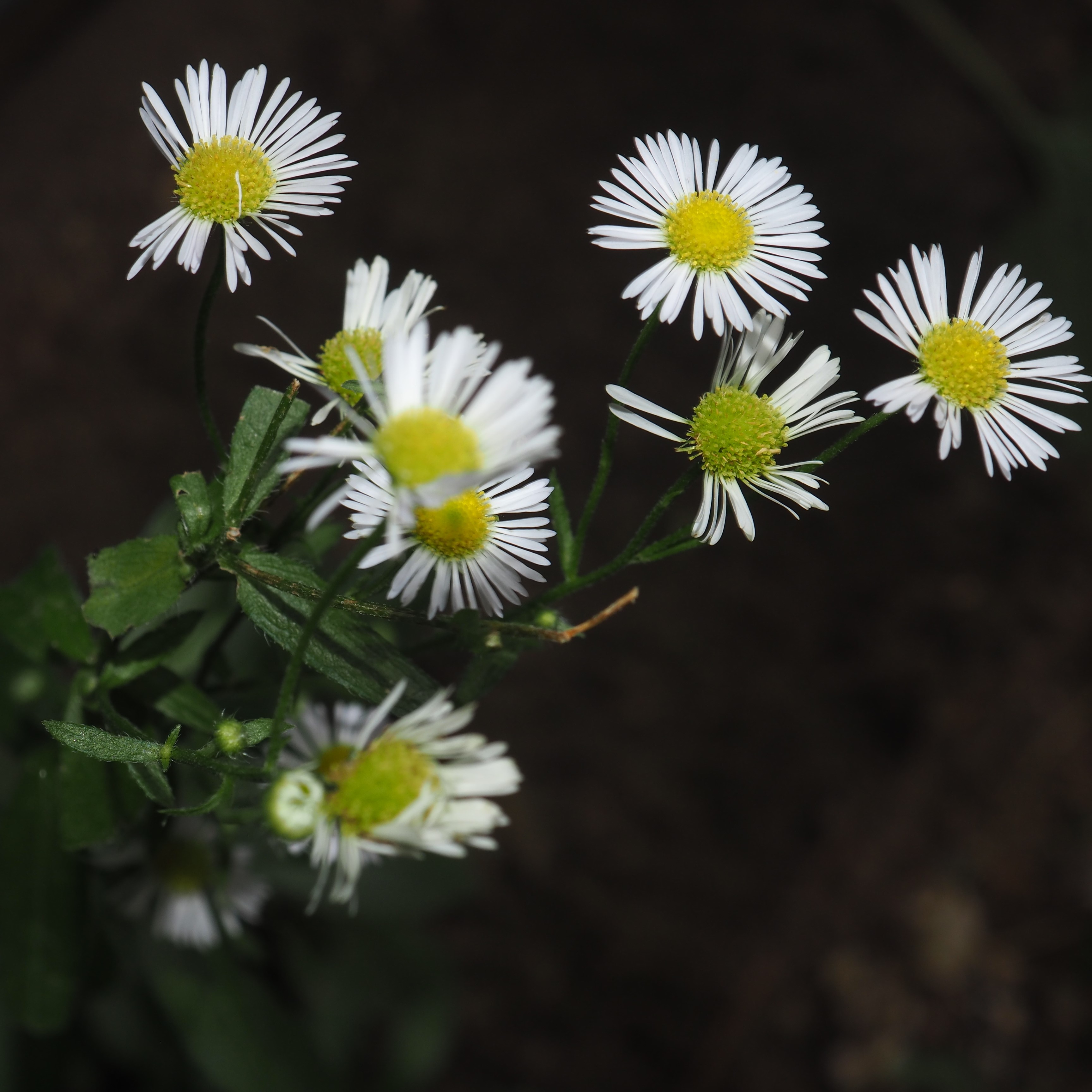

Remember that there is information in the name of the file for each image. You can see it by mousing over the
image - look at the lower left of the screen. Or you can click on the image to get to the (usually) larger image.
Then the info is displayed in the address line above. Sometimes the second click will actually display a
different view of the original image.
Here is one of those Carpenter Ants who has obviously stuffed itself silly! Second seems to be of genus Lasius. Third is another, this one carrying a bit of prey.
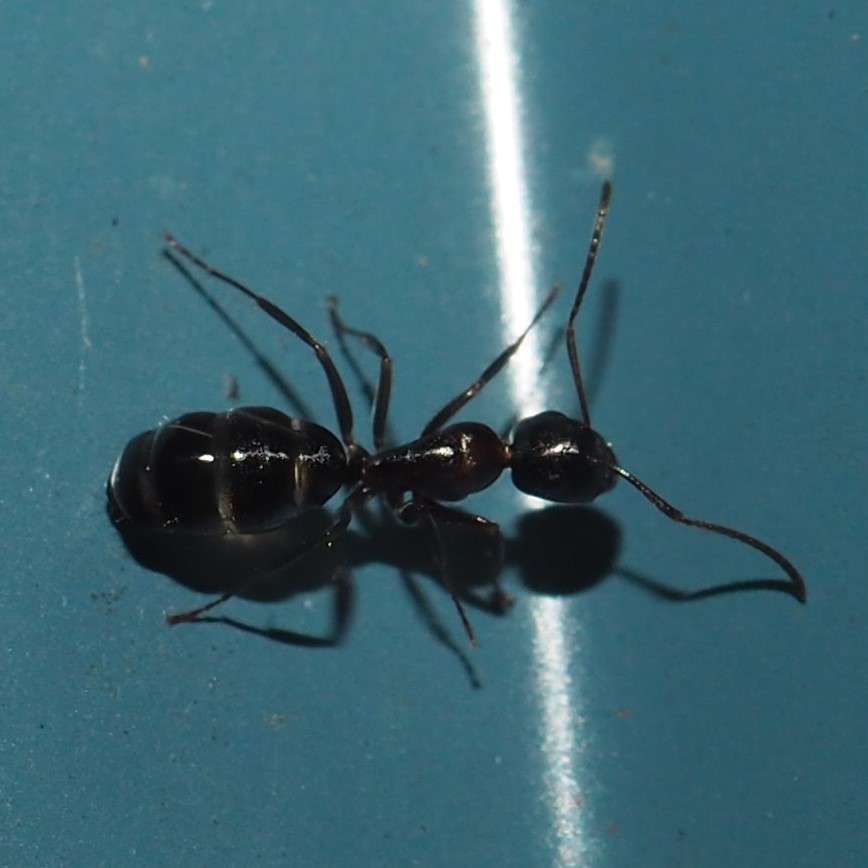
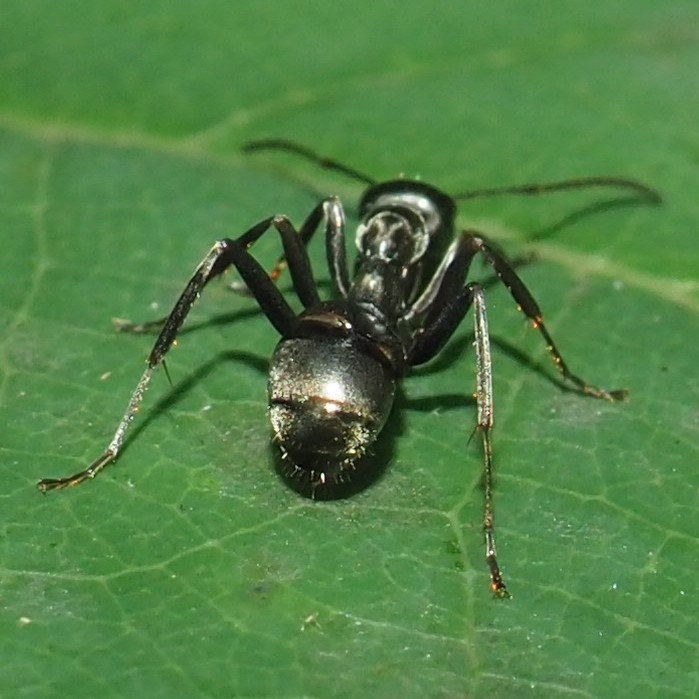

First here is a Smaller Carpenter Ant. Then one that looks like a Silky Field Ant. Third was the victim of a near-drowning event. I had set down a partly filled glass of pop in order to take a picture. When I came back, three ants, one of whom was probably an Eastern Black Carpenter, and two of whom seem to be some kind of Myrmicine Ants, were swimming in the glass. I dumped it out onto the handrail of the deck stairs. It was feeling very blue after its close one. I don't know how it happened but its head region was an especially pretty blue.
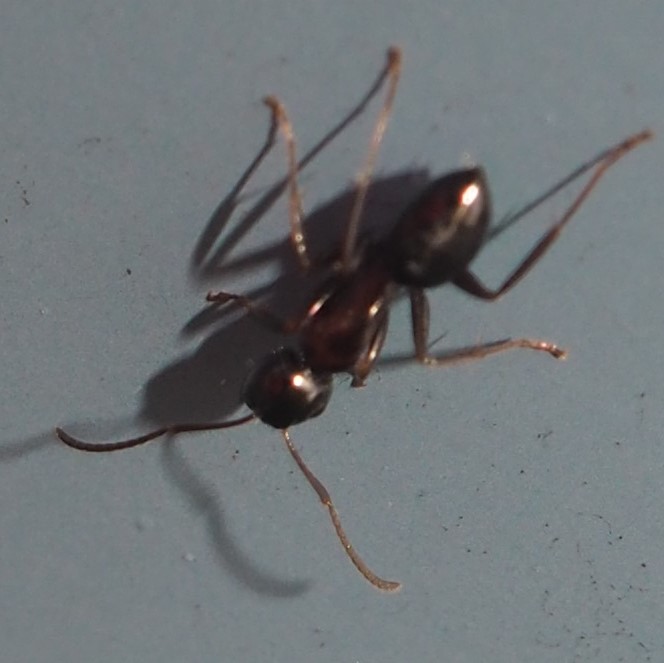
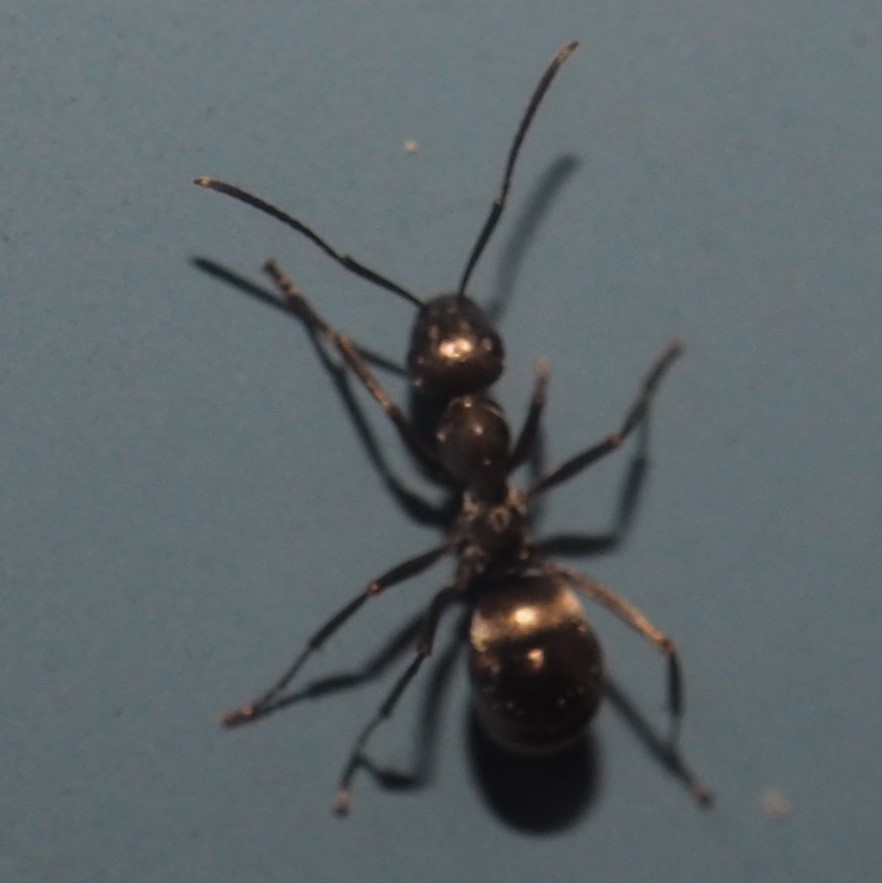
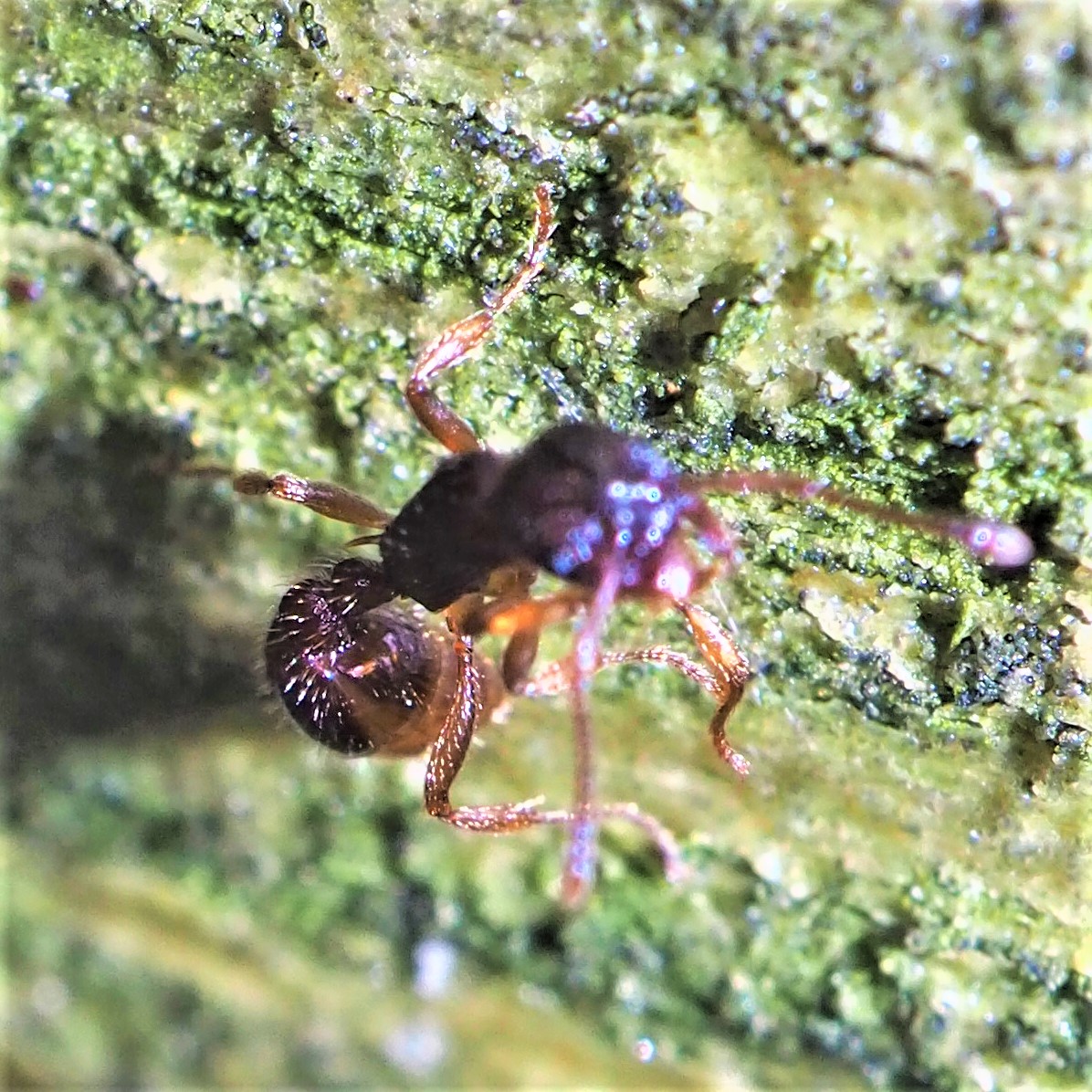
One result of last week's storm is the quantity of living creatures on the North Wall. I suppose that one of the creatures lost is a lot of the lichen buildup on the lower part of the Wall. I'm hoping that a good-sized group of Barklice moved underground with it, because this was not a great week for seeing quantity or diversity of Barklice. However, those little creatures really do know how to protect their egg masses, so quite a few of the eggs from last week are still here now. Here is a montage of a scene from North panel 17, where a nice clutch of eggs was sitting on the wall on August 17. Picture 2 shows the eggs beginning to hatch on August 19. And picture 3 shows the scene on August 20. The eggs had seemed somewhat like those of Graphopsocus cruciatus, but a bit darker than usual. Maybe that is the color they take on when they are about to hatch. I'm going for G. cruciatus. Even at this stage, the nymphs resemble G. cruciatus more than nymphs of Polypsocus corruptus at the same age. I don't see the little shoulder streaks but do see what looks as if they will emerge more distinctly soon the little thoracic dots typical of G. cruciatus. Picture 4 shows the more common color of G. cruciatus eggs.

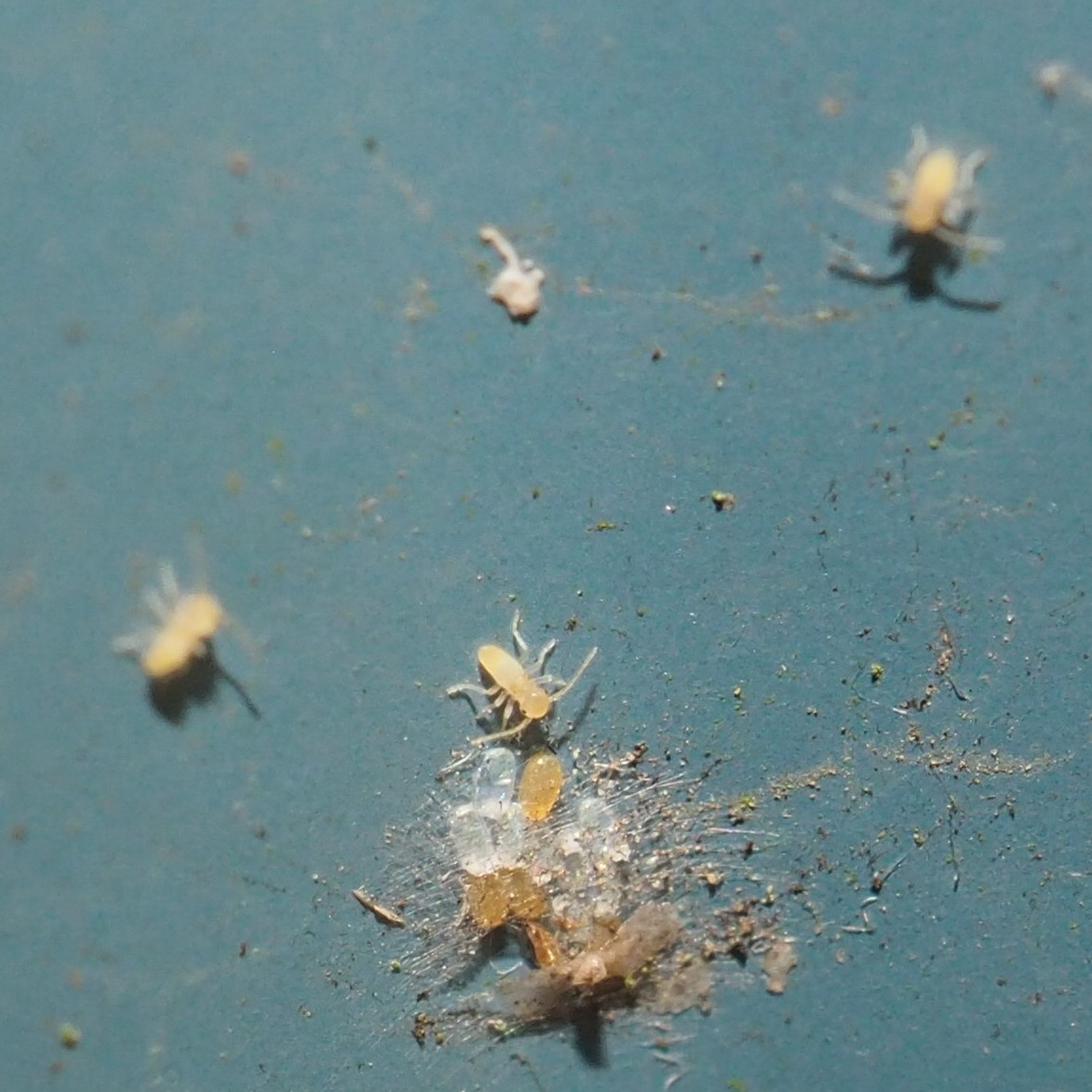
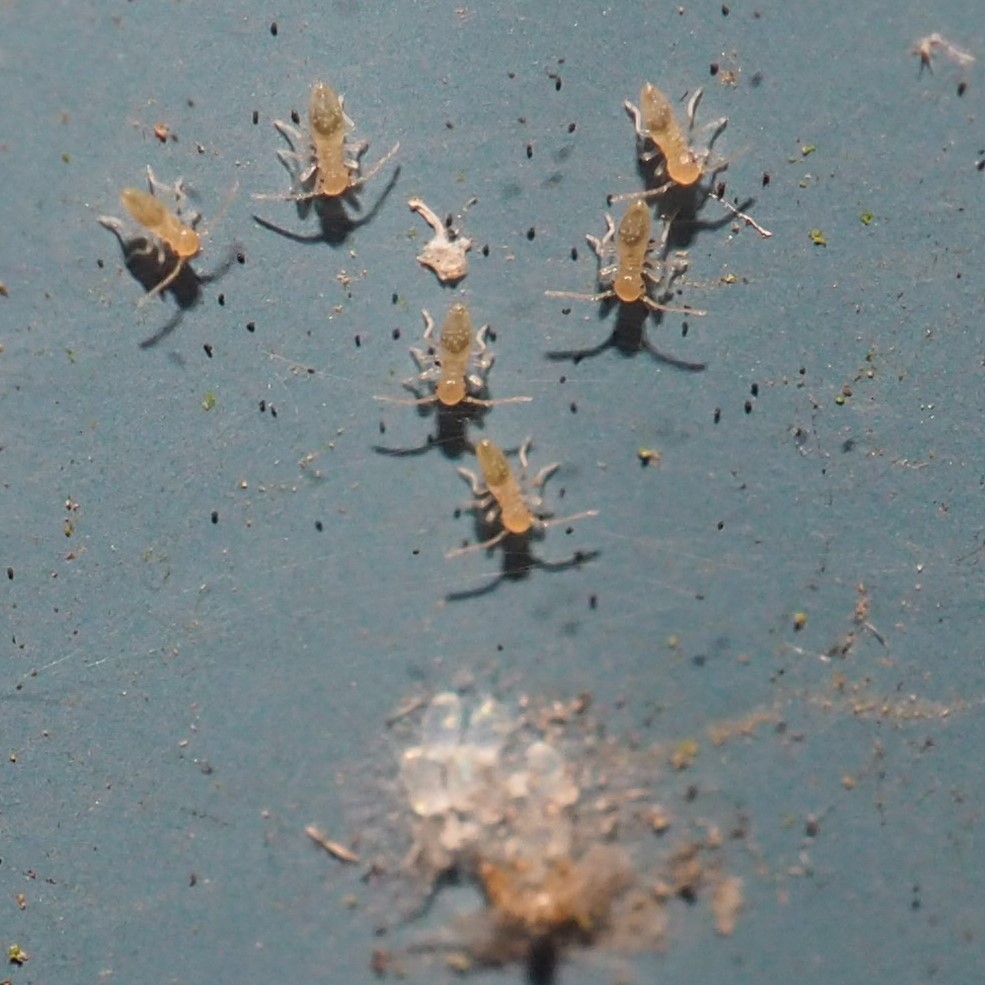
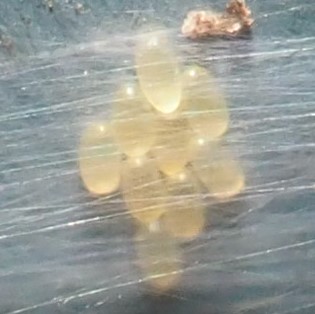
G. cruciatus was among the first Barklice I was aware of for a long time. There are several adult ones on the Wall, like the ones in pictures 1-2. And there are a number of nymphs of a good size along the wall (see picture 3). But they are also spilling onto the vegetation near the Walls, as in picture 4.
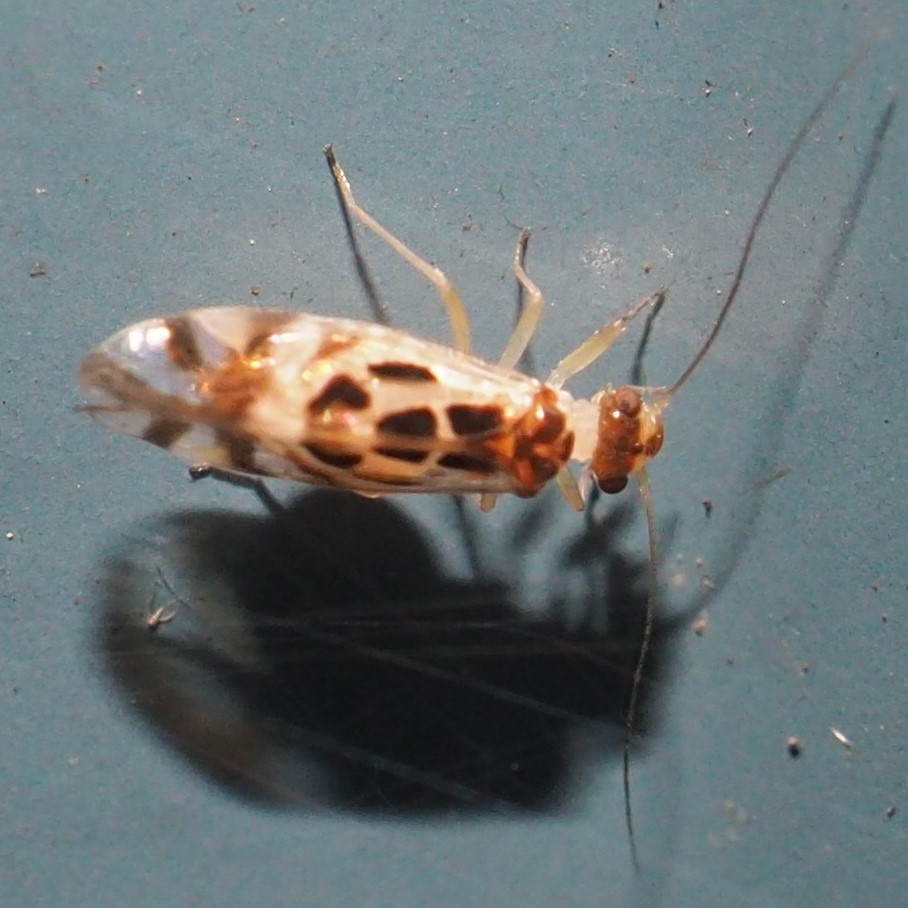
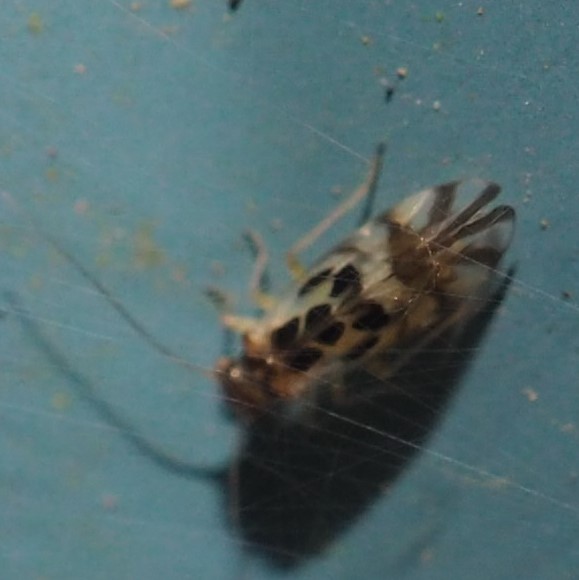
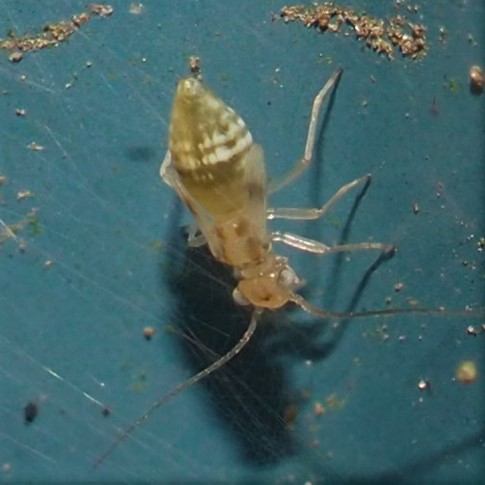
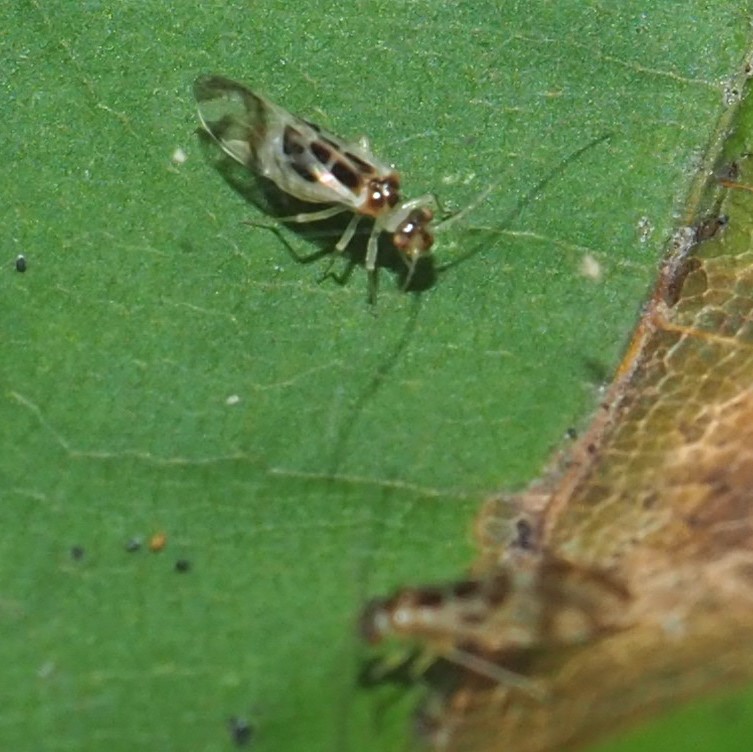
On the East Wall, a place more protected by a very old Blue Spruce, is a group of eggs which look to me like Ectopsocus meridionalis eggs. I've been watching these eggs every day since I noticed them on August 18. (I noticed them so late since the diameter of the circle surrounding the eggs is only about a half millimeter!) They look as if there are a small number of healthy egg contents. And finally, here is a new Barklouse which appeared August 19, but secreted itself somewhere after posing for these shots. Diane Young, who has done such interesting work with Ectopsocus meridionalis and Graphopsocus cruciatus, suggests that the yellowish color might be caused by a Mite, a small parasitic creature who makes life miserable for its host (at least I would feel miserable if one were colonizing me and causing jaundice of some sort).
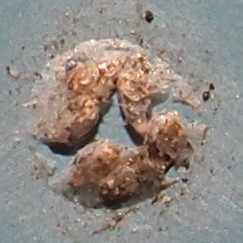
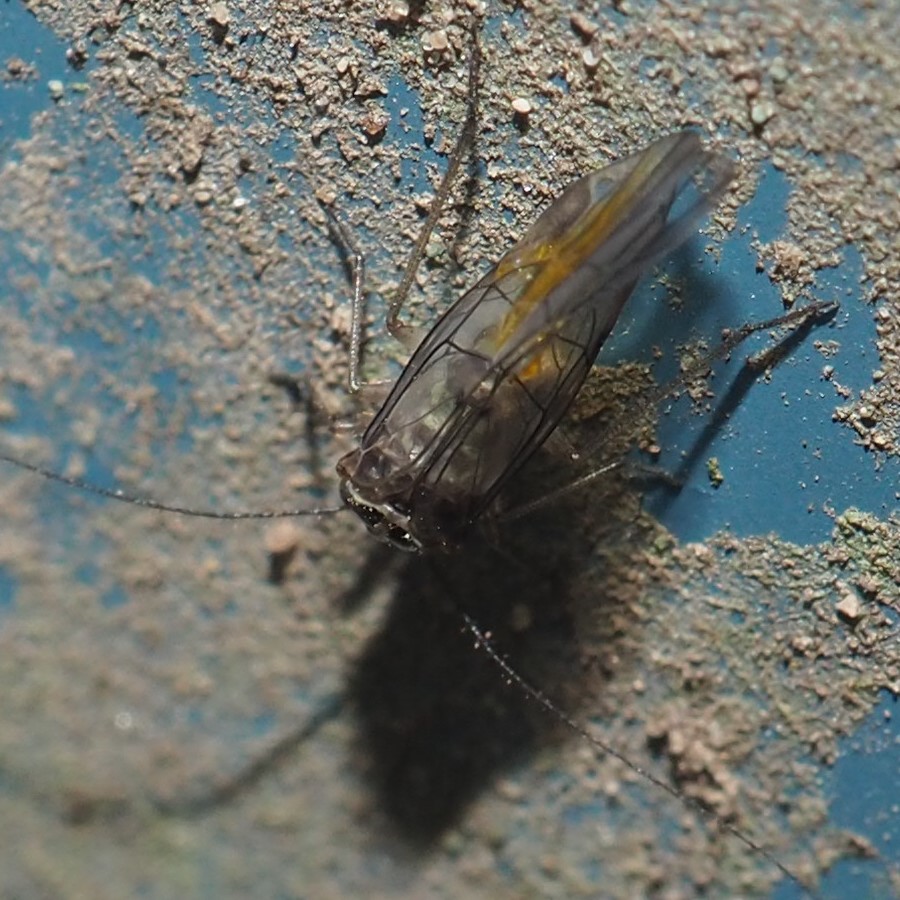
 One Bee. I thought this character was a Fly or maybe a Sawfly. It turns out to be a Bee of Epifamily Anthophila. So let's check out the Beetles. We always have a few tiny Flea Beetles, this week one Black one and one Green one, and one Brownish one (not shown).
One Bee. I thought this character was a Fly or maybe a Sawfly. It turns out to be a Bee of Epifamily Anthophila. So let's check out the Beetles. We always have a few tiny Flea Beetles, this week one Black one and one Green one, and one Brownish one (not shown).
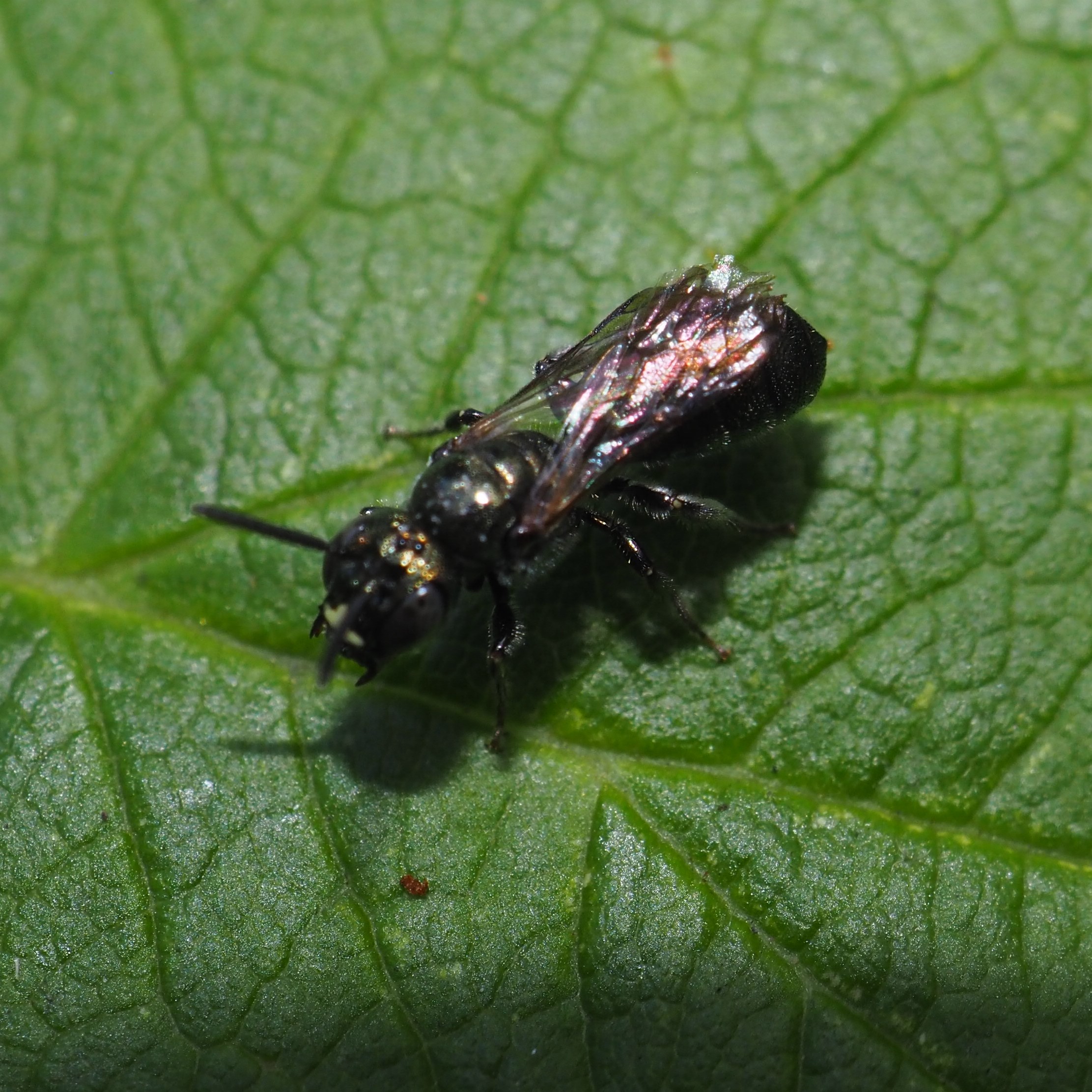


The Asian Lady Beetles are also coming back. Here are two individuals.
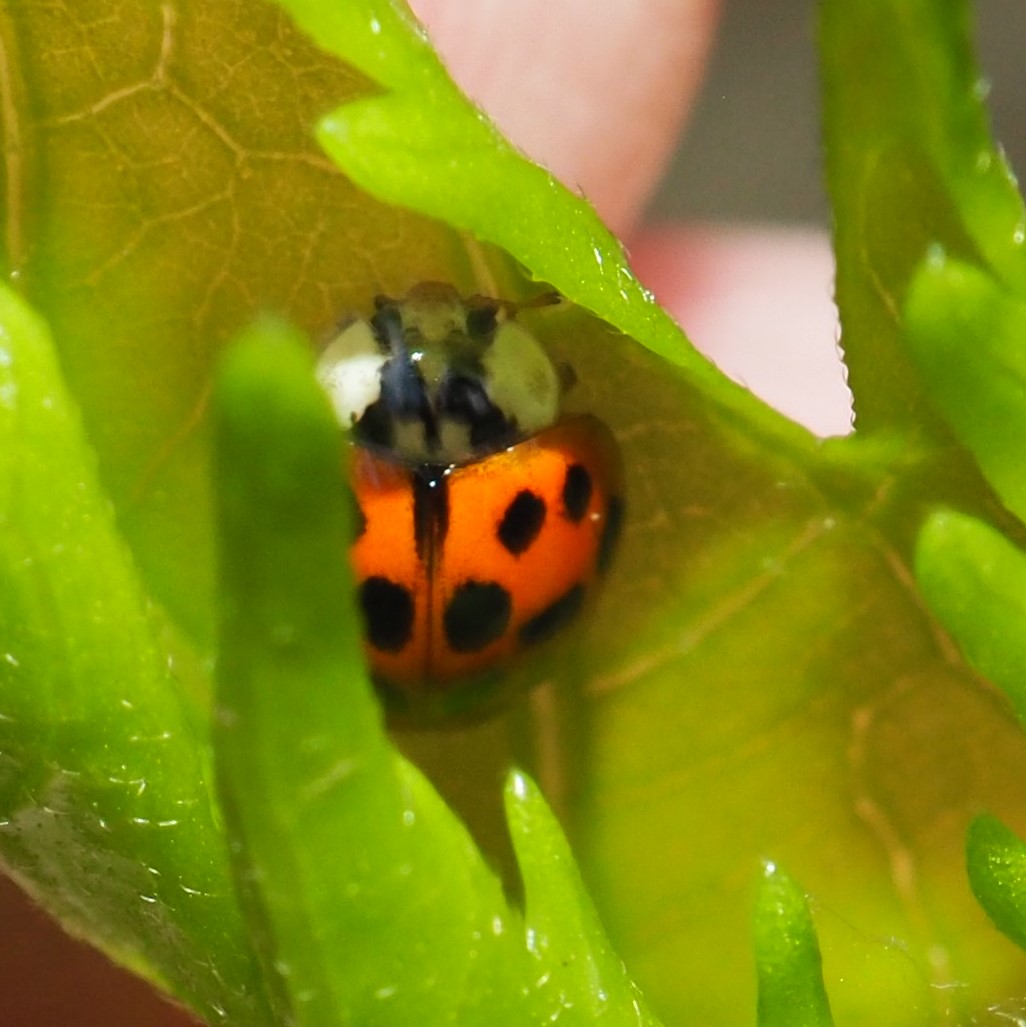

Now for the Bugs. Of course the baby Assassin Bugs are growing and visible everywhere, as they spread out from the little egg masses about a month ago. Here are some of the Zelus luridus adolescents. A couple of days ago, I also caught this little Zelus tetracanthus trying to climb with its little black prey out of range of my trusty Red Ryder Camera, but no soap.

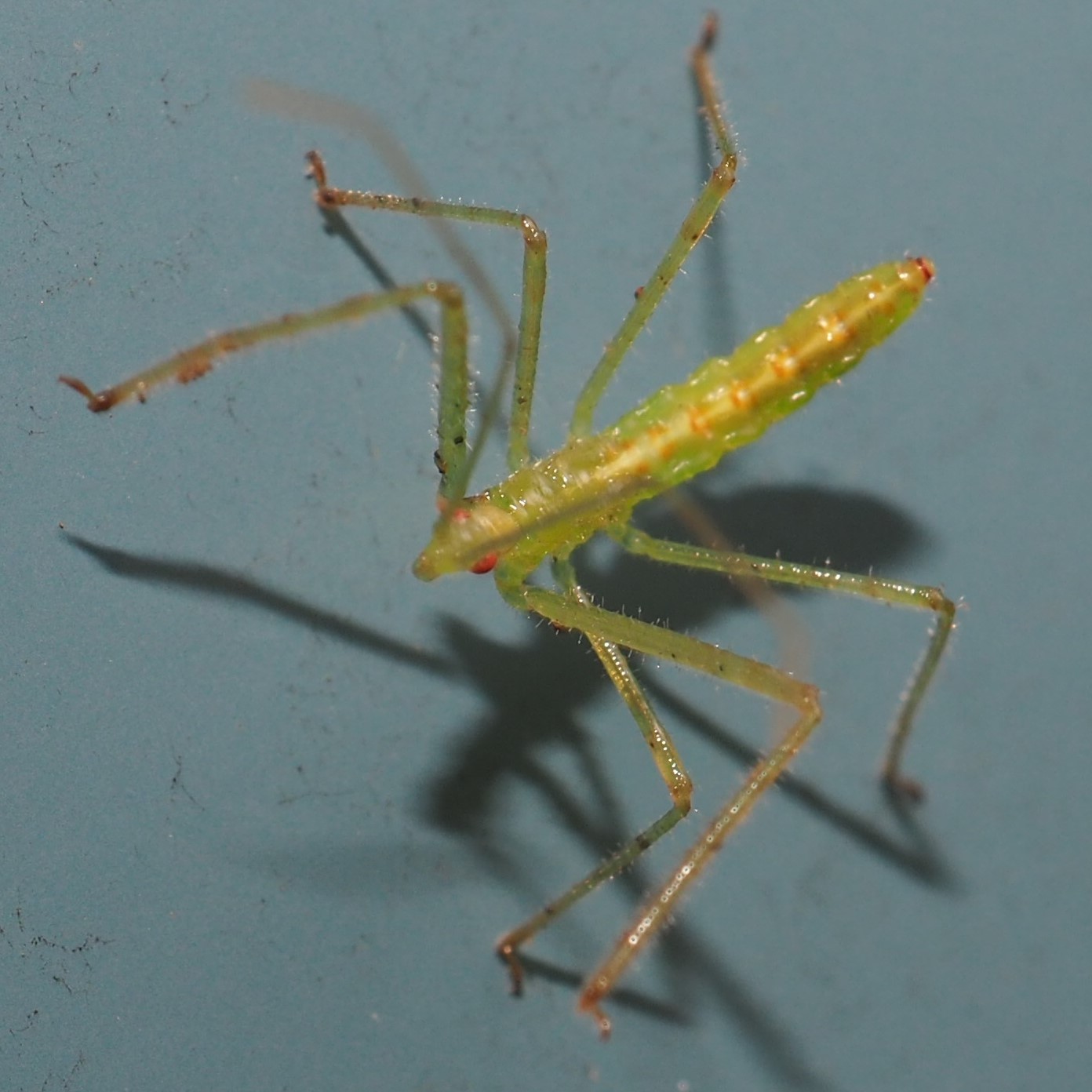
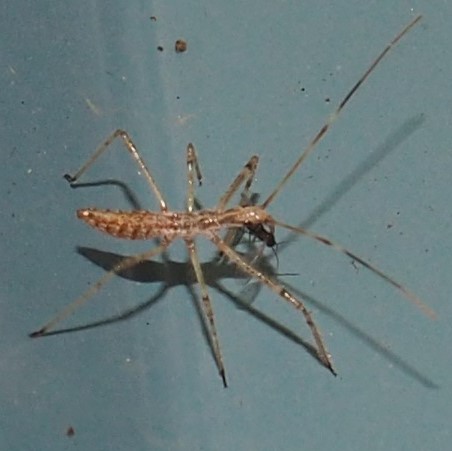
We continue with a few Leafhoppers. Here is an old favorite, Erasmoneura vulnerata. Then a yellow-toned member of genus Eratoneura, and a member of genus Osbornellus.
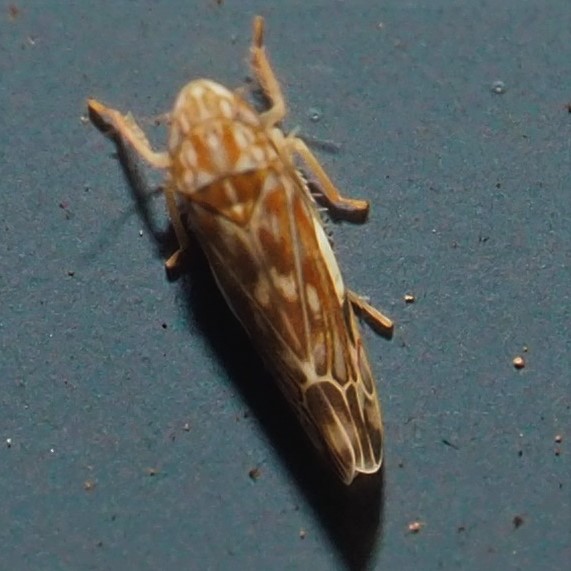

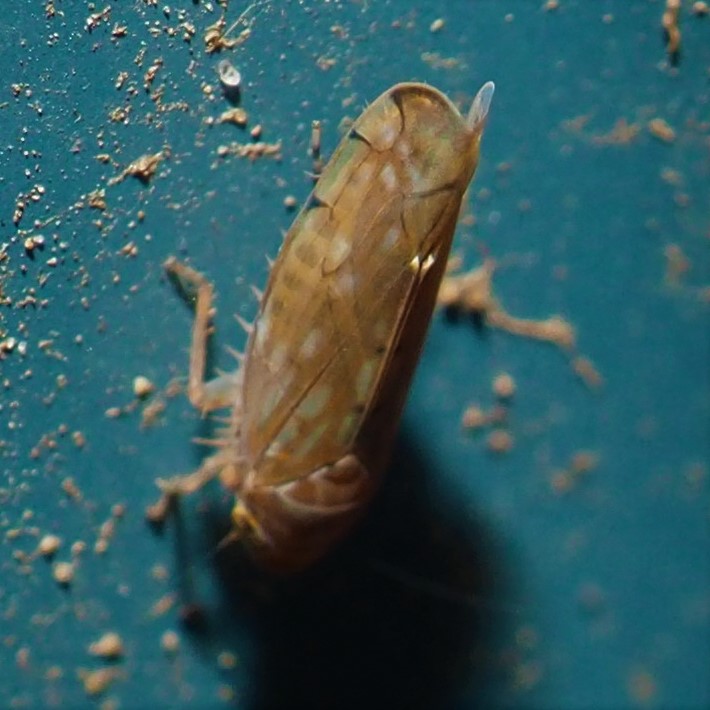
First is what happens if you try to photograph Jikradia olitoria (the Coppery Leafhopper) in a dark corner. Then we raid a Spider's freezer to find this wrap of a Leafhopper that I don't know the name of. Third is a Red-banded Leafhopper, one of everyone's favorites.

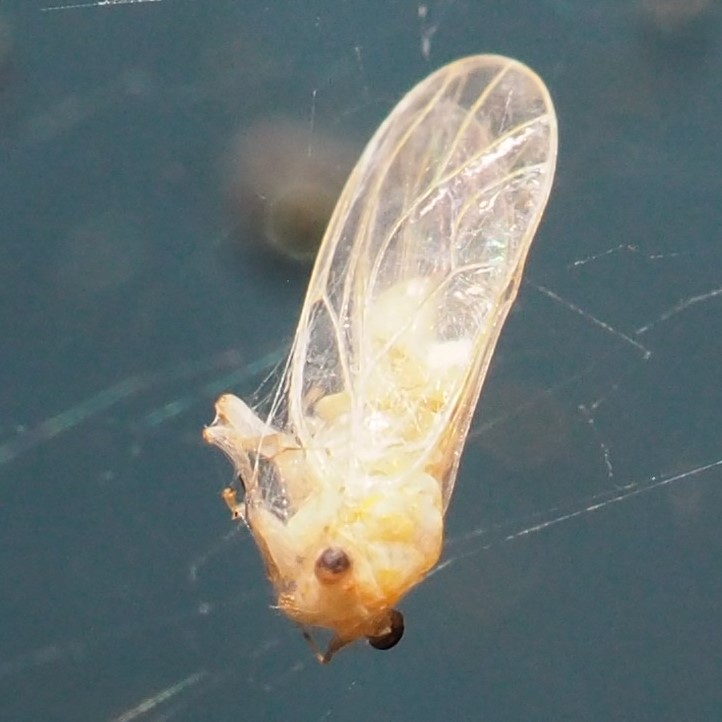
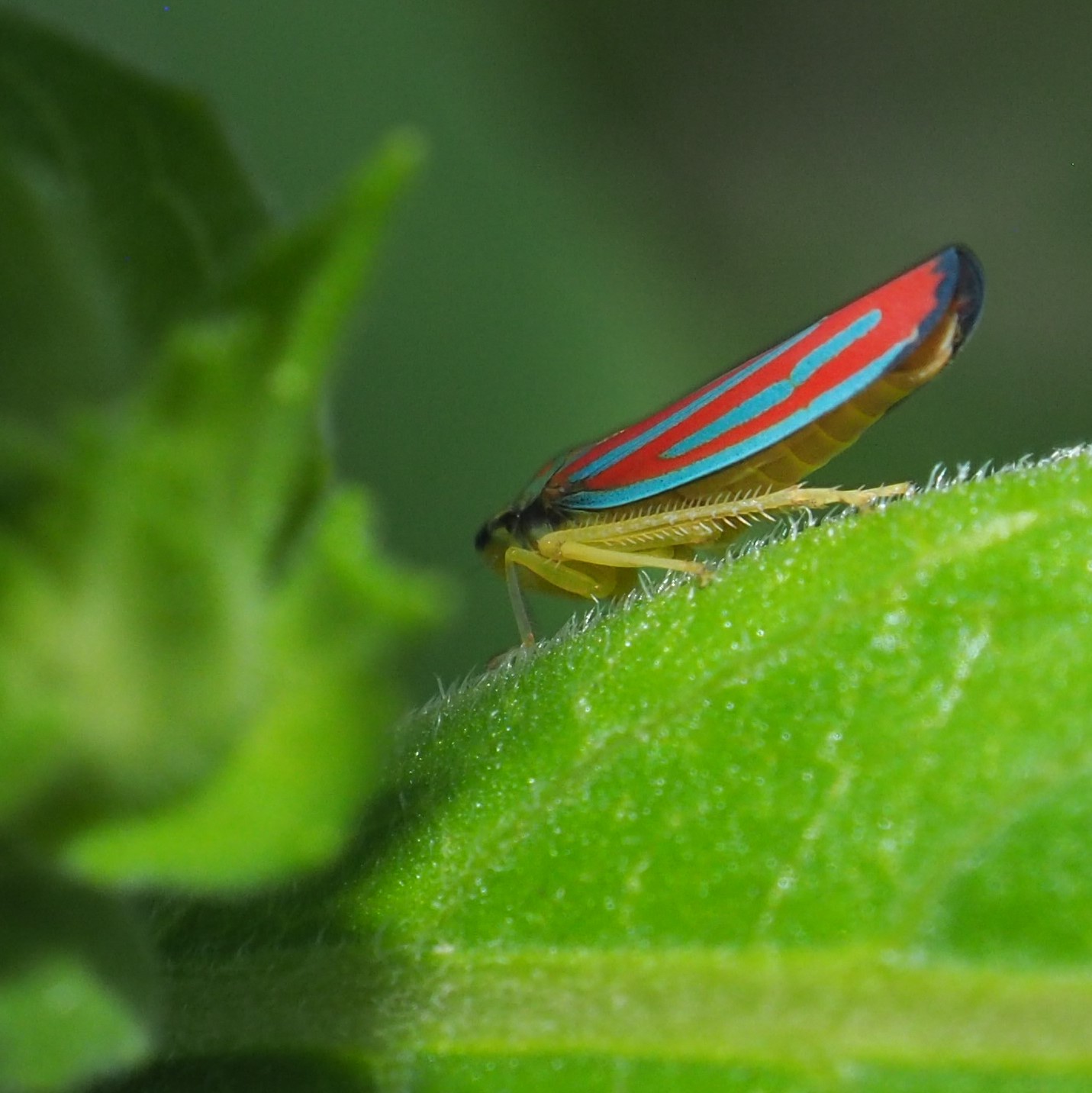
Here's a Seed Bug, Oedancala dorsalis, which I hadn't seen since 2019. Second and third are North American Tarnished Plant Bugs. Fourth is Dendrocoris humeralis, the most-seen Stink Bug this Summer.

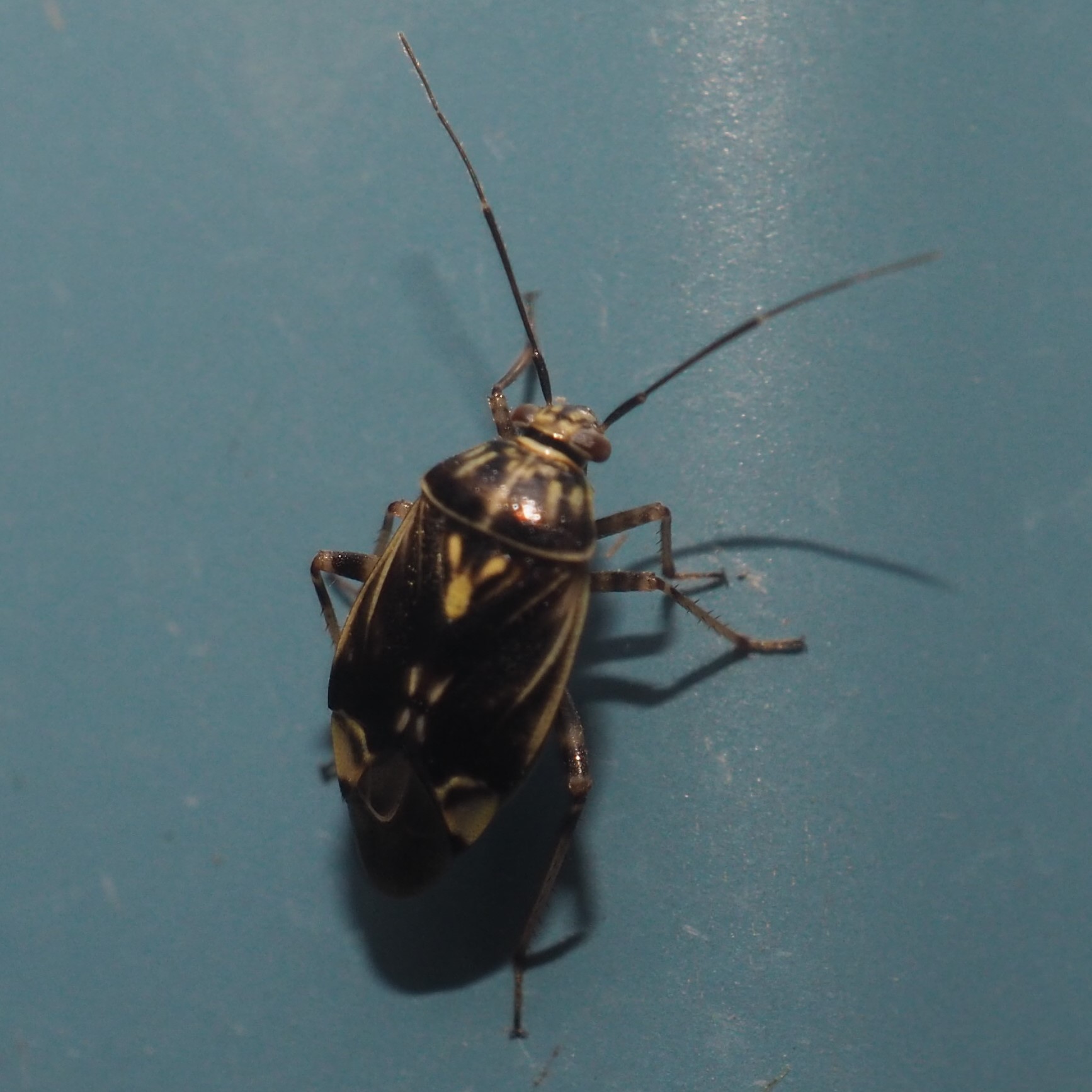
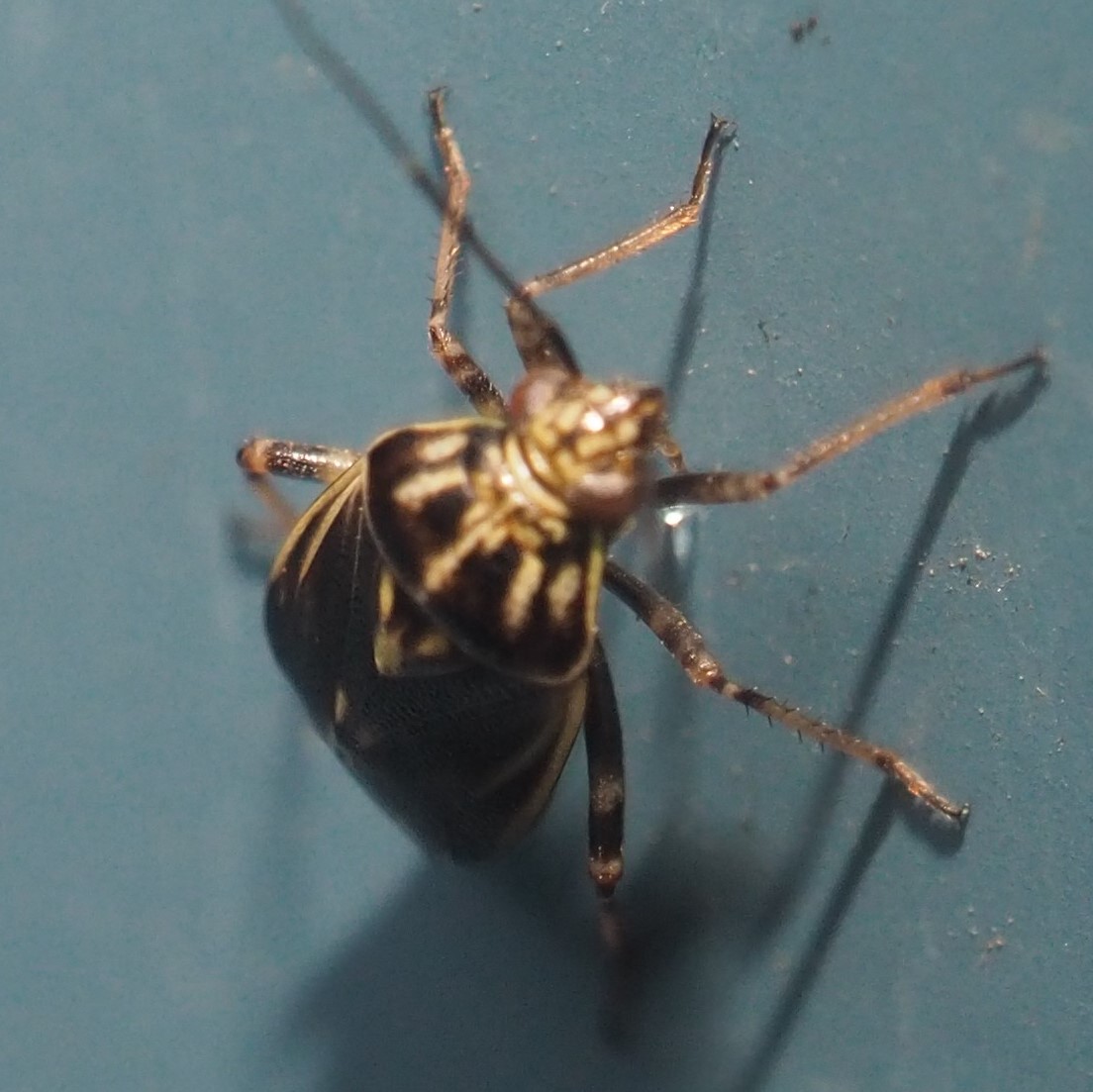
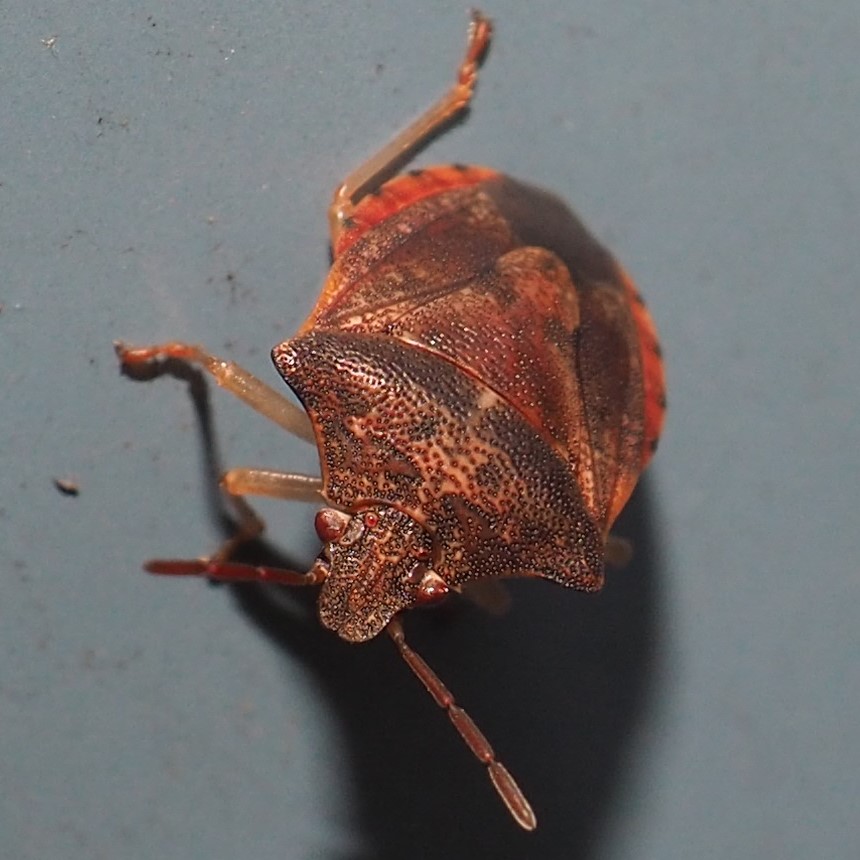
That seems to have been it for the Beetles and Bugs. Next is an Earwig in the Tall Evening Primrose. Before I move to the Flies, here is one Dustywings, a relative of the Lacewings.
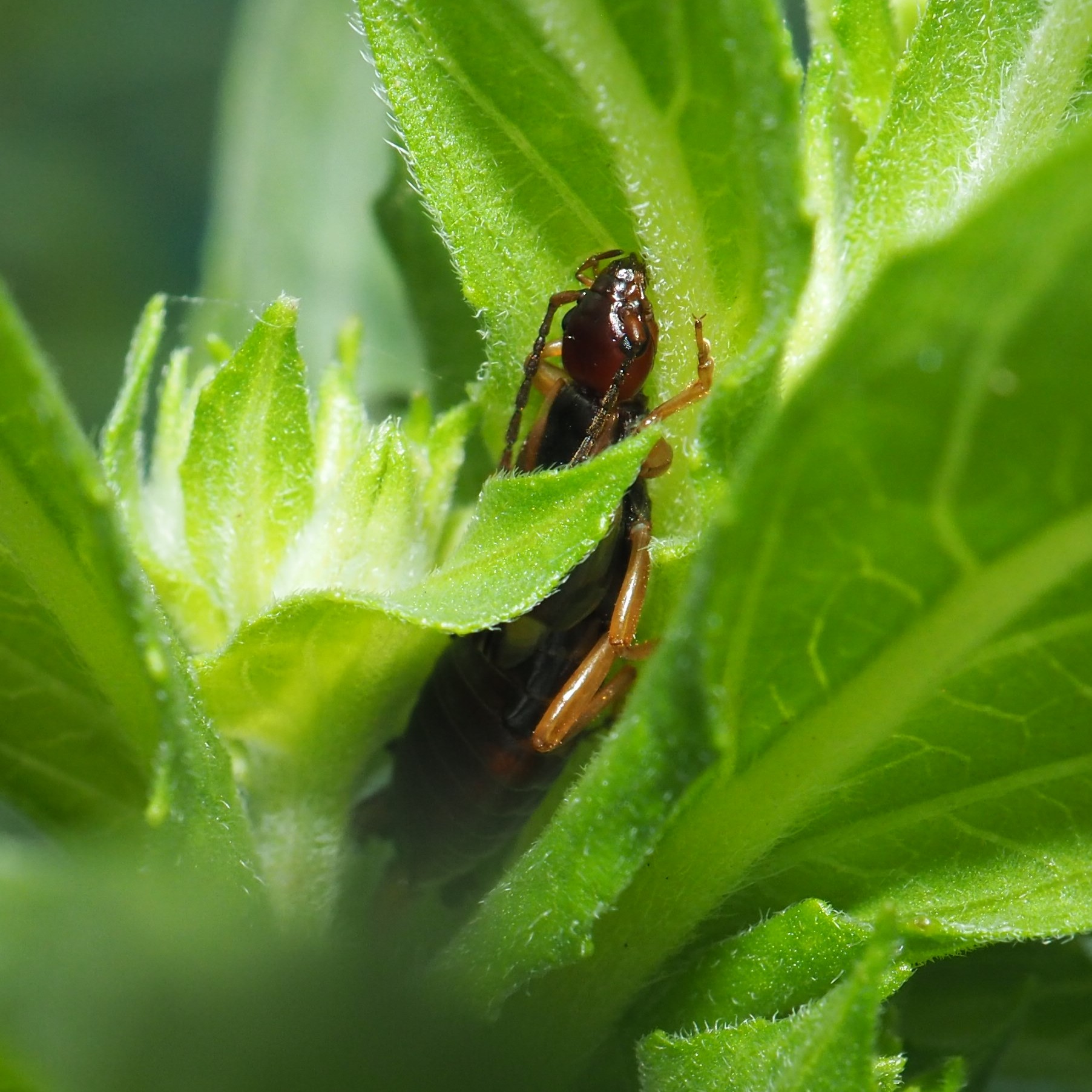
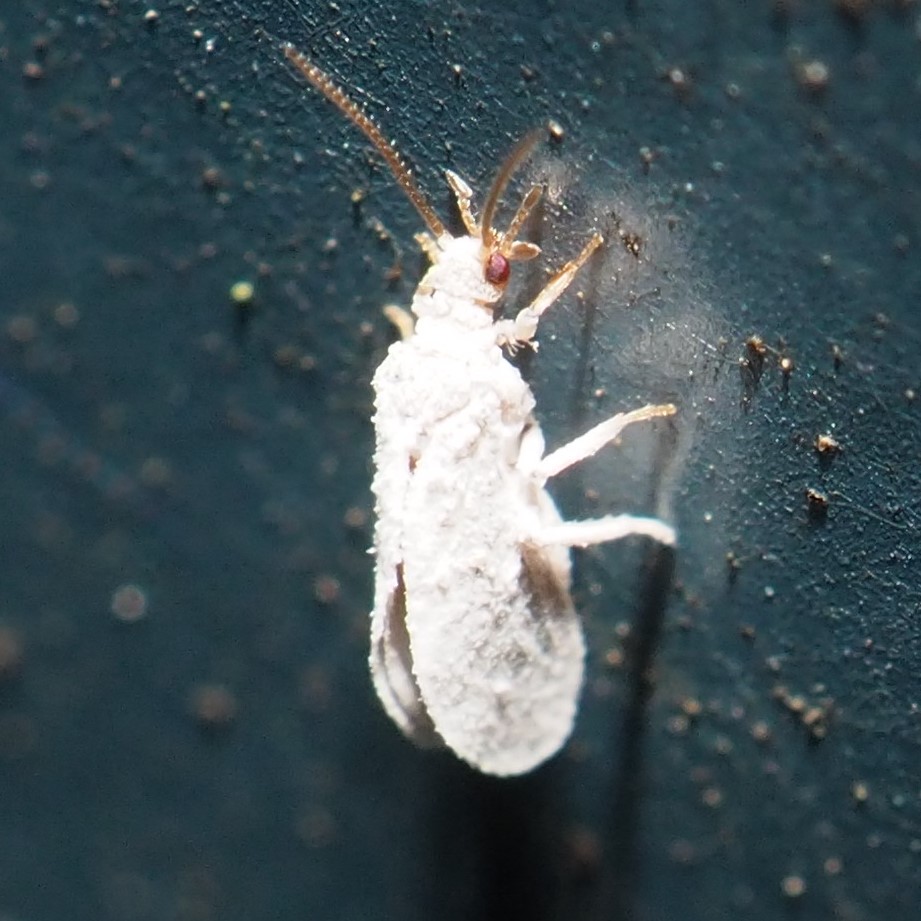
This Crane Fly was such a stitch. When I moved in for a closeup shot, it began to do pushups against the Wall. It must be something they do to frighten off an attacker.
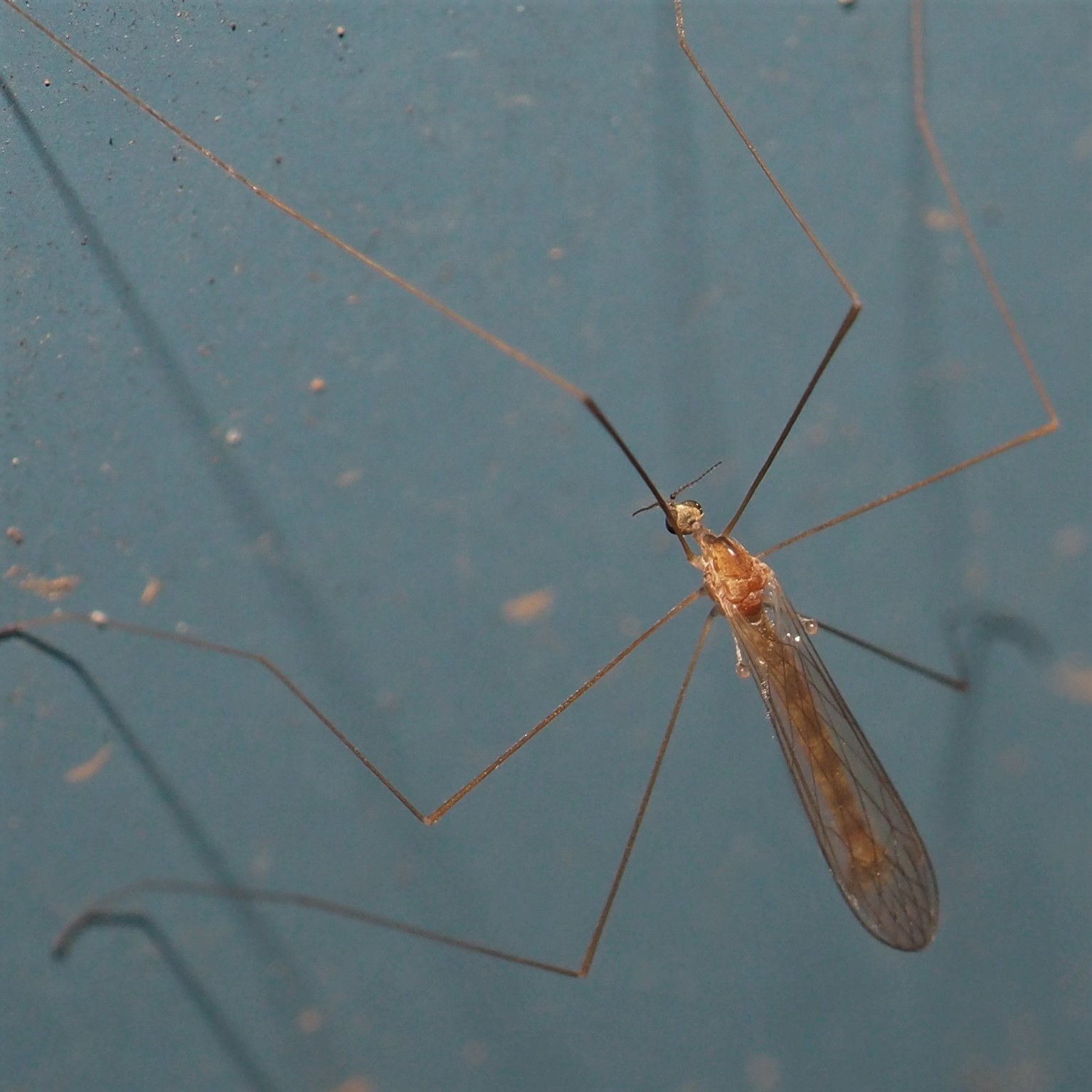
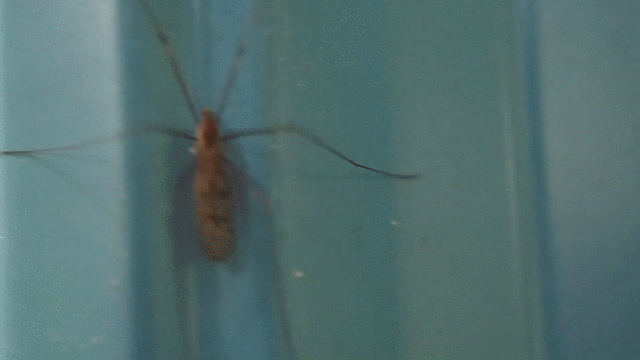
Here are a pair of those beautiful pesky Flies. They are just gorgeous but they like to eat from the Kitty's dish, etc. Second is Minettia lupulina, also very lovely and I haven't seen it in the Cat's food. Number 3 shows the fattest Fruit Fly I've ever seen! And last, the Bathroom Moth Fly.
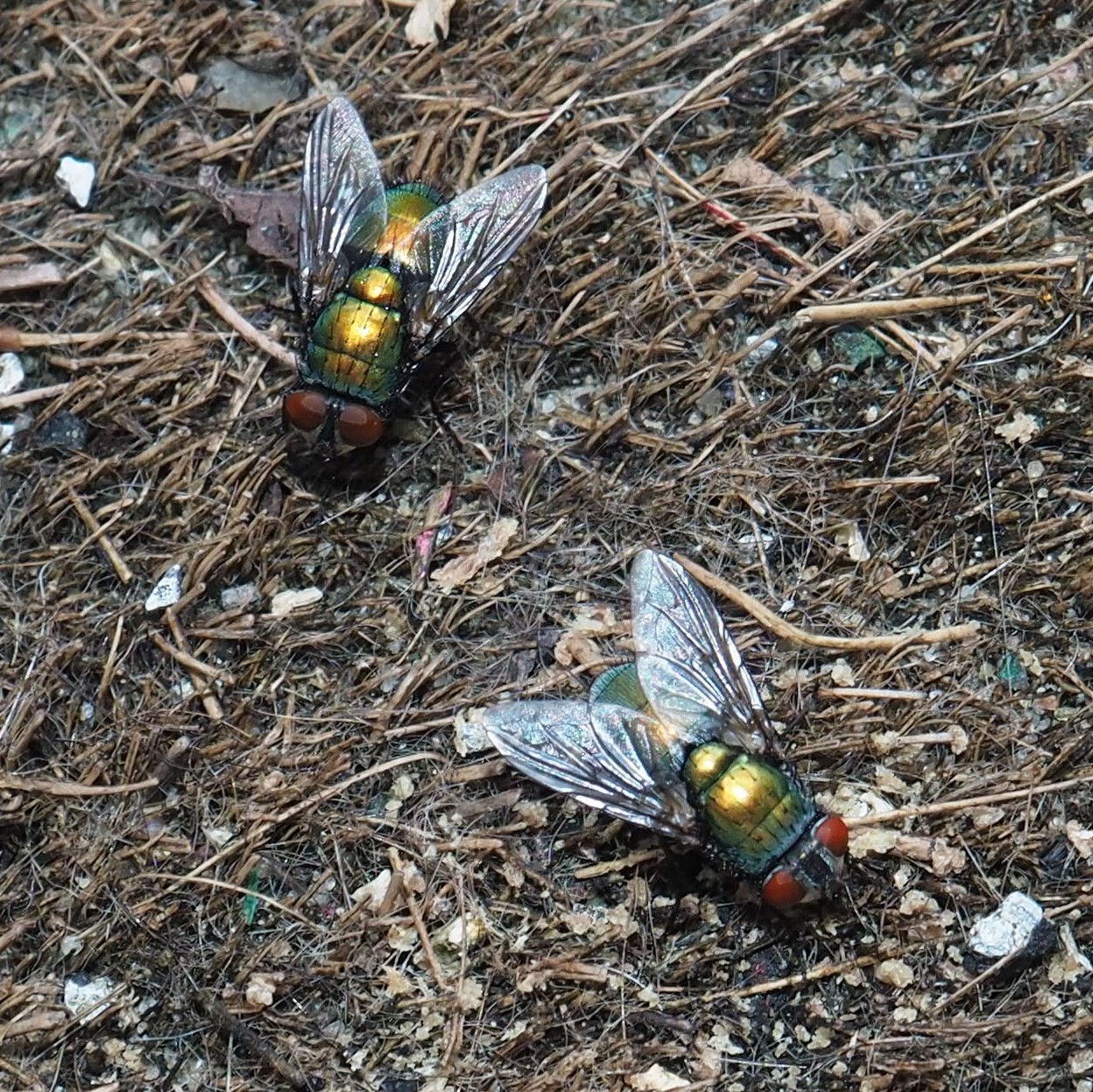
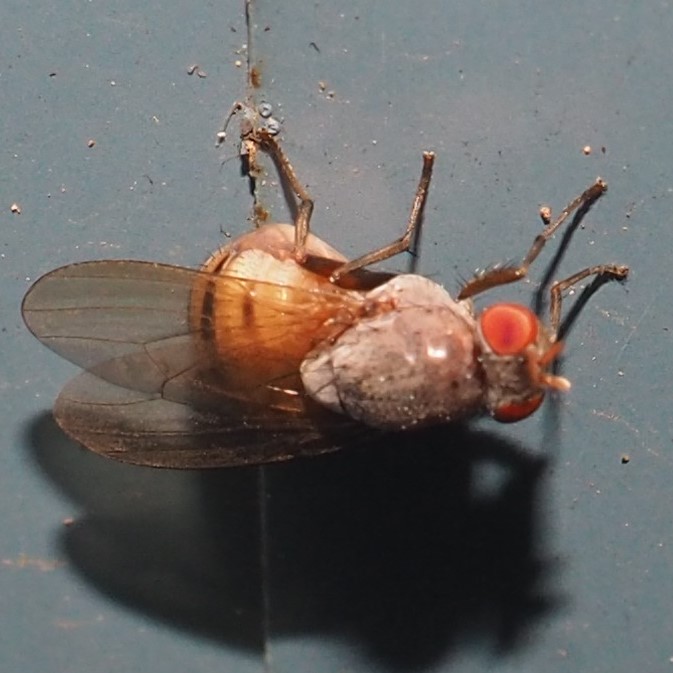
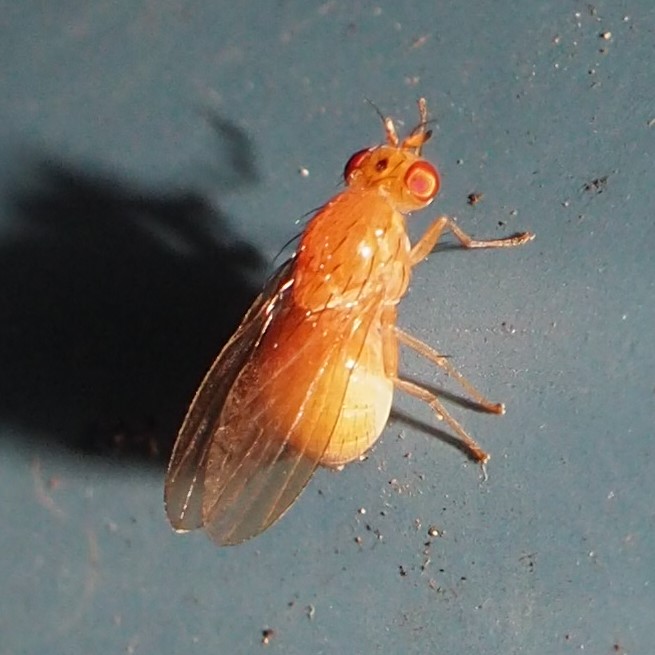
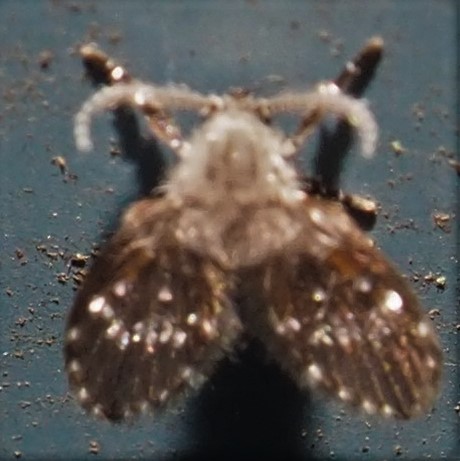
First here is a Midge, and second a Gall Midge. The third one may also be a Gall Midge.
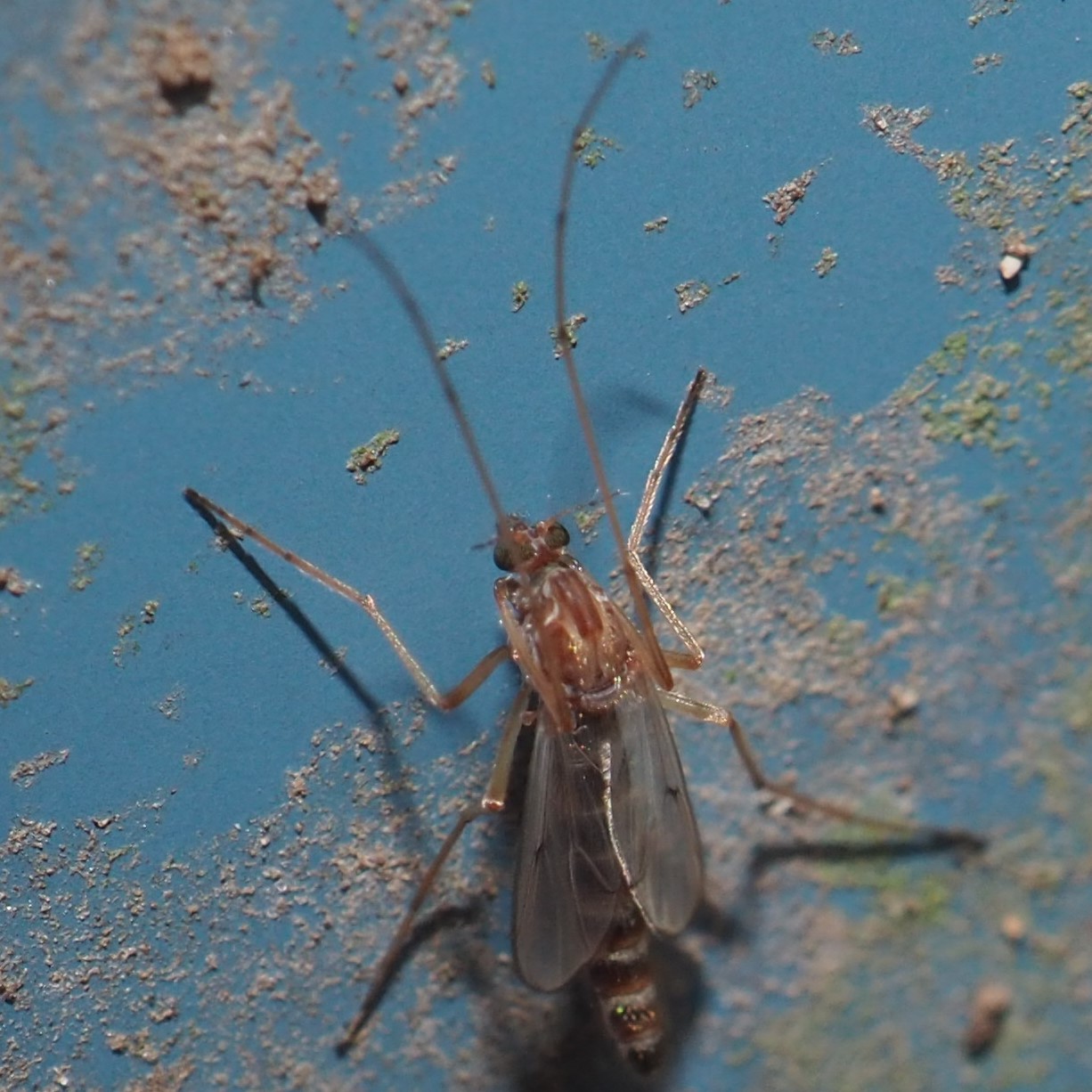
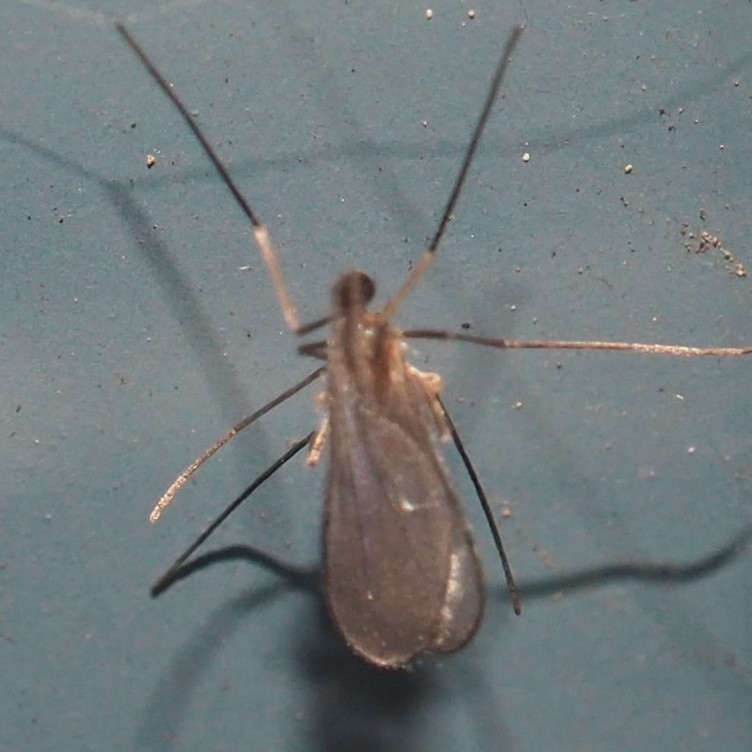
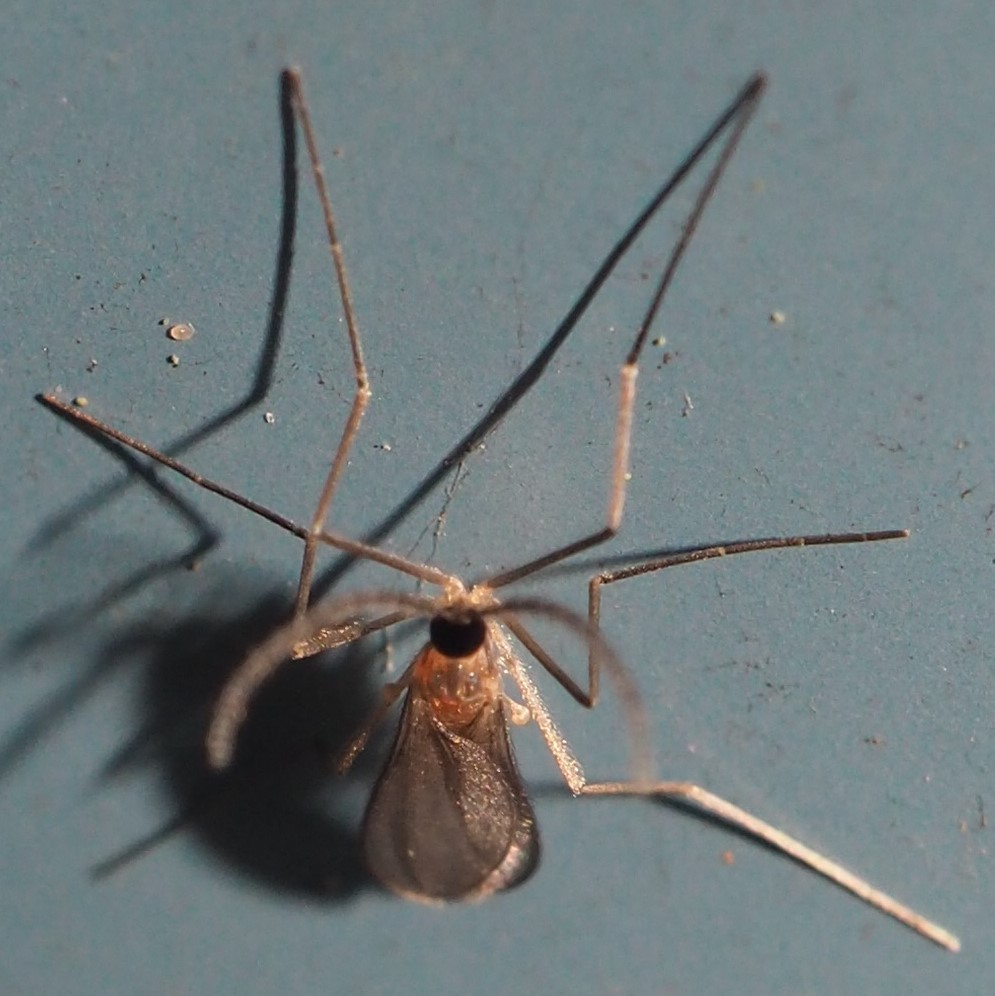
The ID app certainly wants this Fly to be a Black Soldier Fly, but if you look at the map showing which locations have seen the Fly, there aren't any examples in Michigan. But there is one in Toledo, which is just across the border from Michigan. Flash! It IS a Black Soldier Fly, so it now has ties to Michigan. As for pictures 2-3, I thought this was a Fly, but the ID app picked genus Astata, which is a genus of Wasps! It has now been identified as a Wedge-shaped Beetle, genus Ripiphorus!
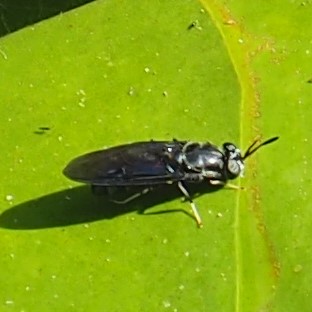
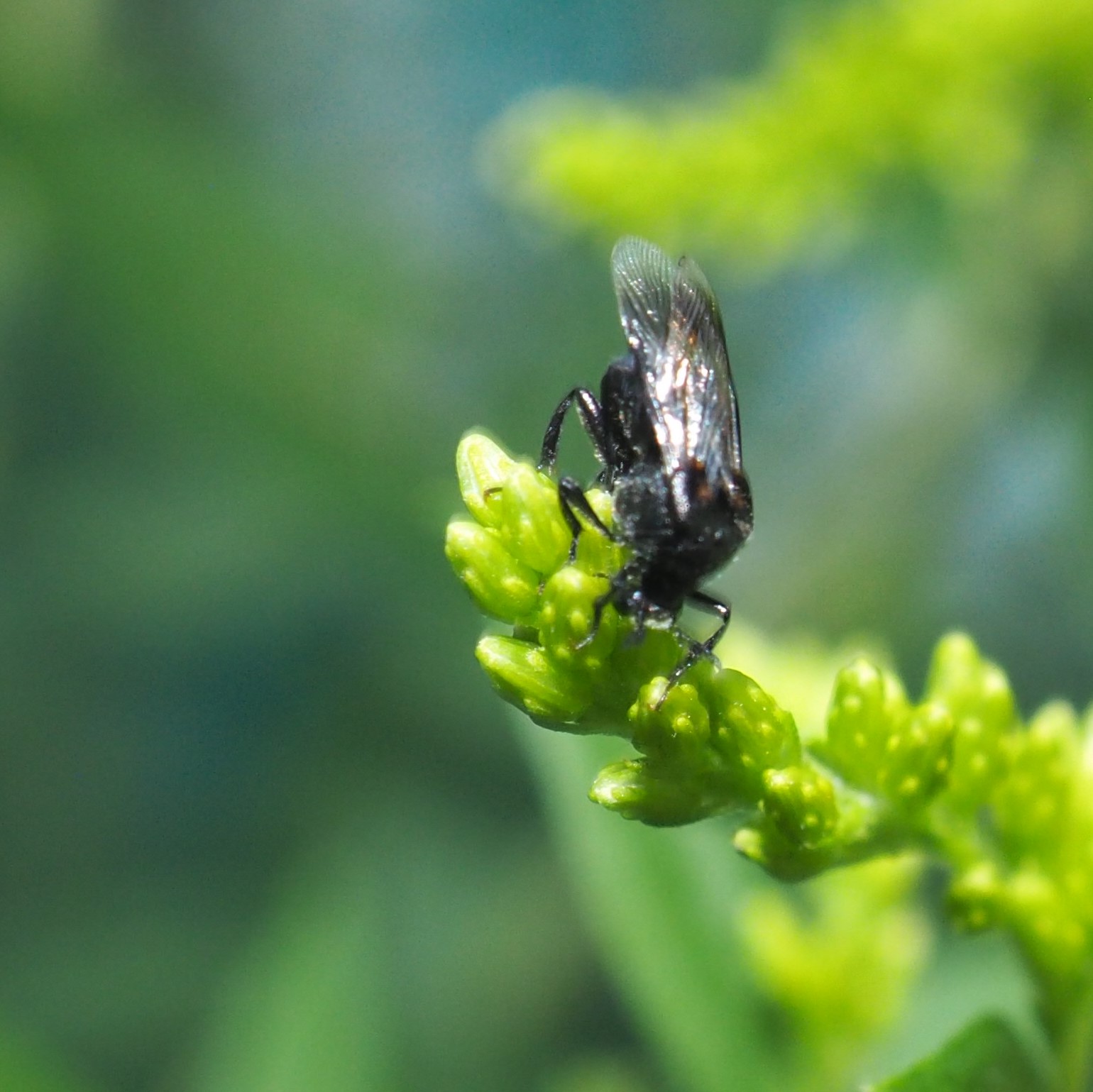
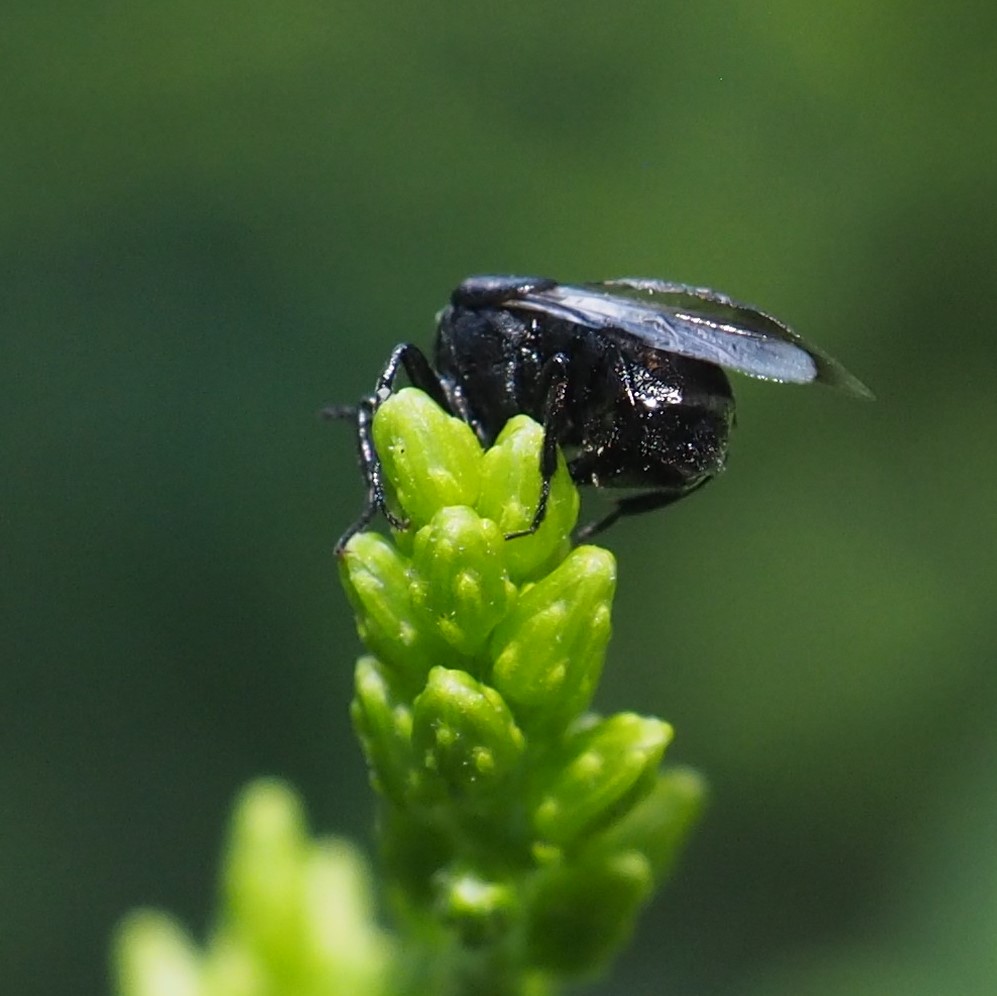
You met this one a week or two ago. It's the Picture-winged Fly.
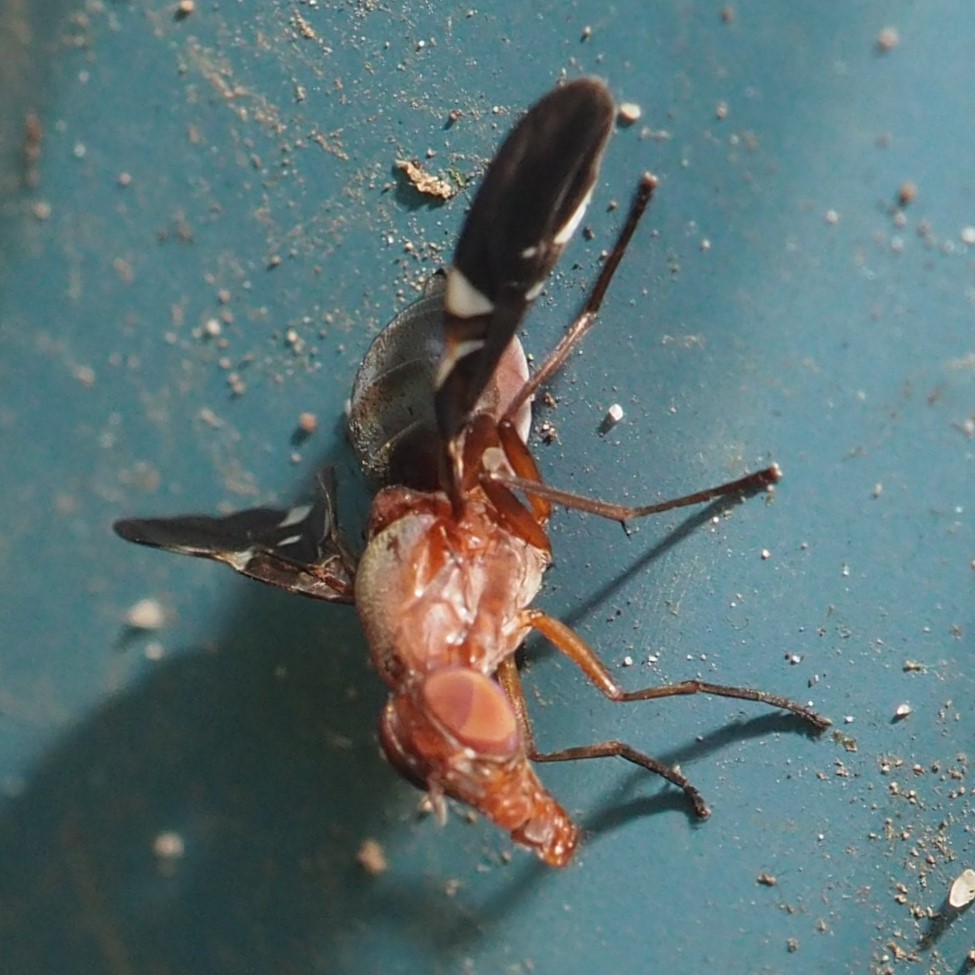
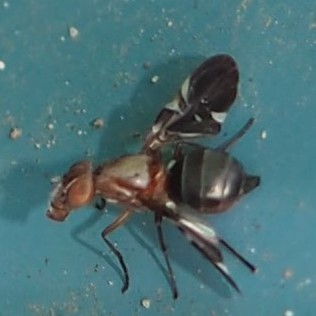
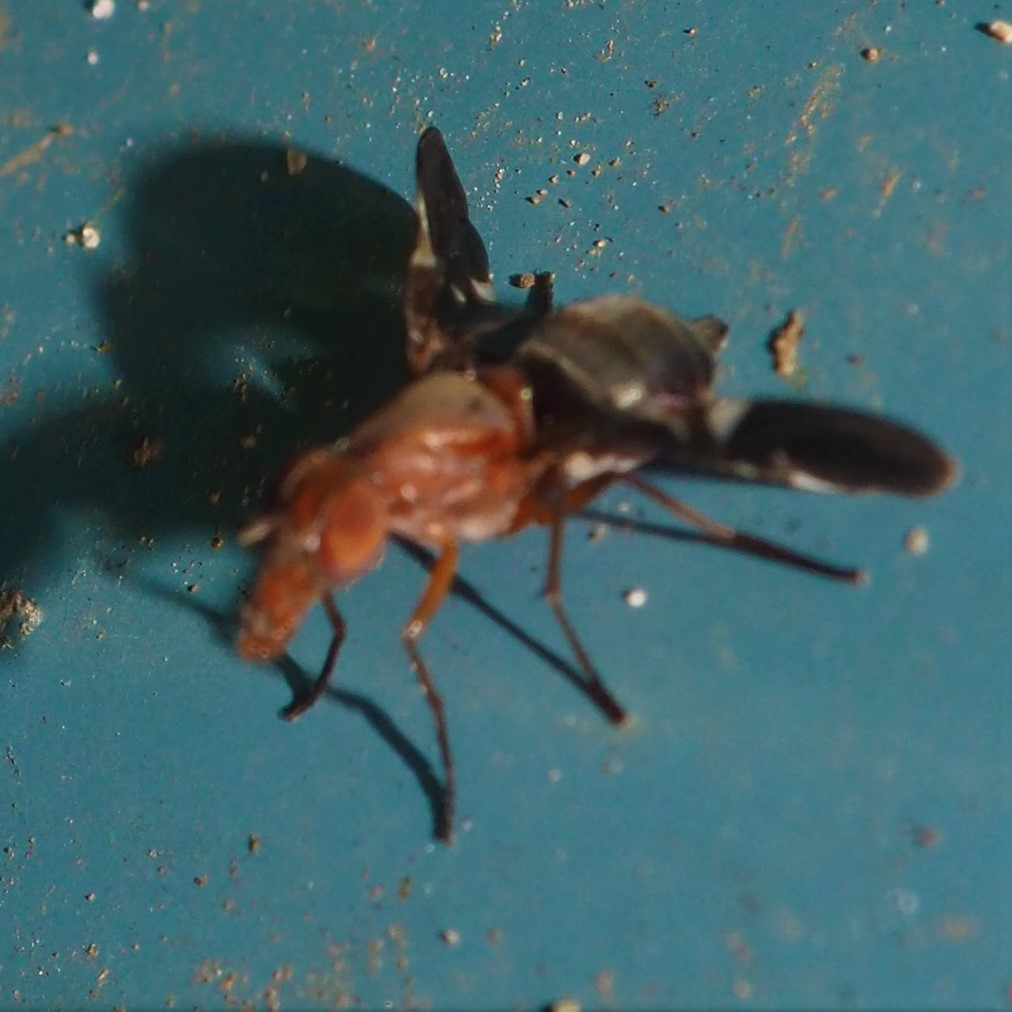
I forgot - I was holding these pictures back for those who love the bright flavors of green and gold that is personified (should I say "personiflied"?) in these Long-legged Flies!
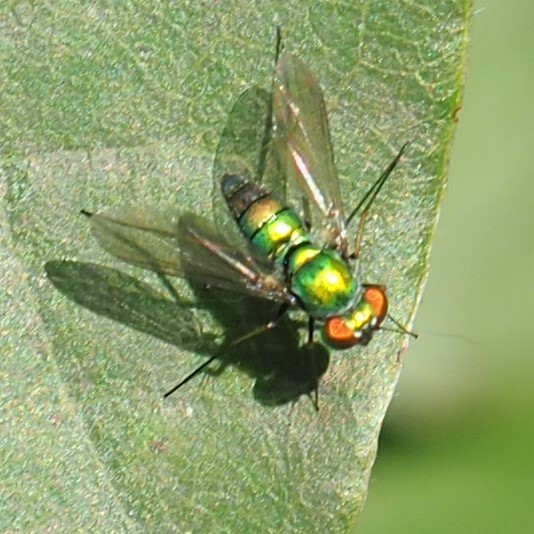
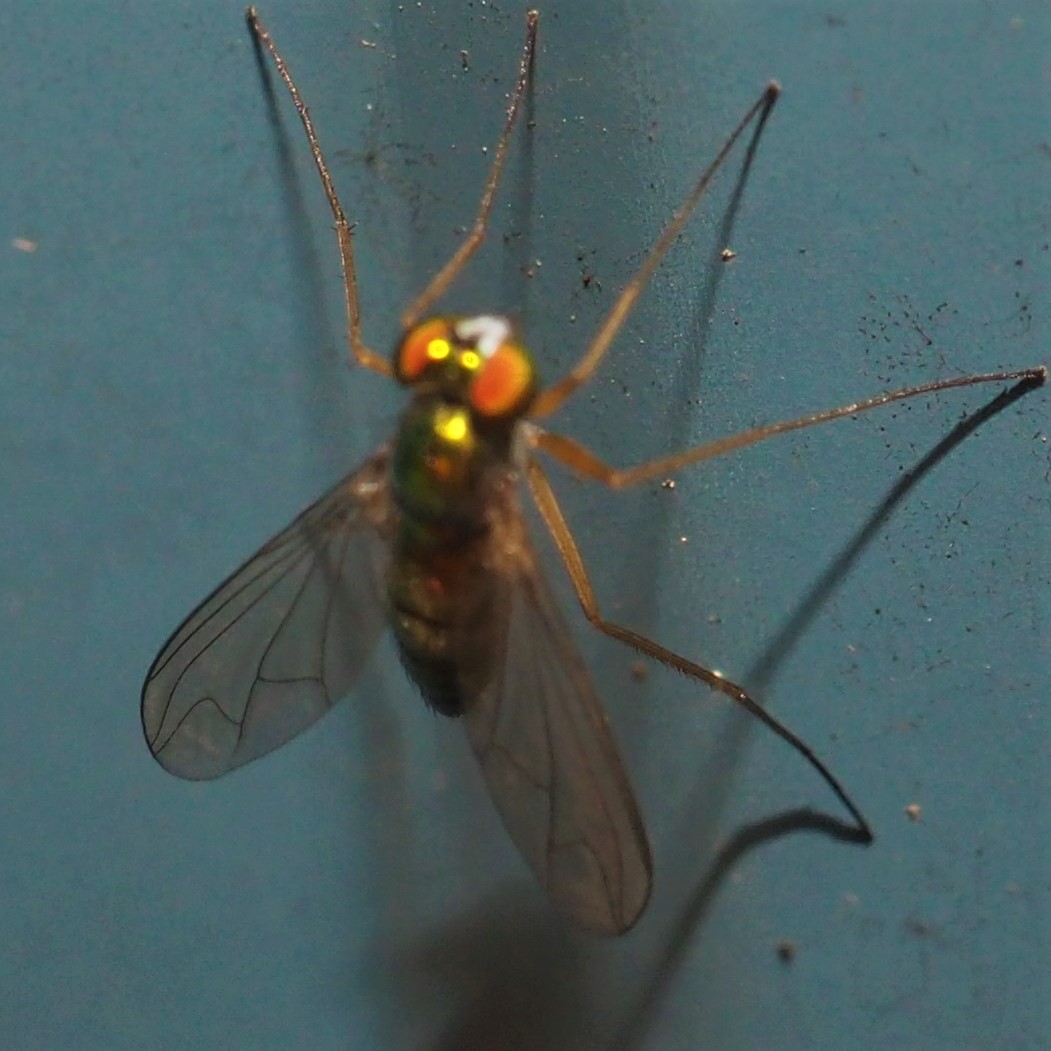
Let's go see the Moths and Caterpillars. Here is a tiny Looper, the Caterpillar of a Geometrid Moth. He was hanging from the Wall. I had to put my hand behind him to get a focus. Second is a Moth that either is one we've seen before or that looks like one of them. I really like the next Moth. The last one is very small but was flying very fast when he landed on the wall in front of me!
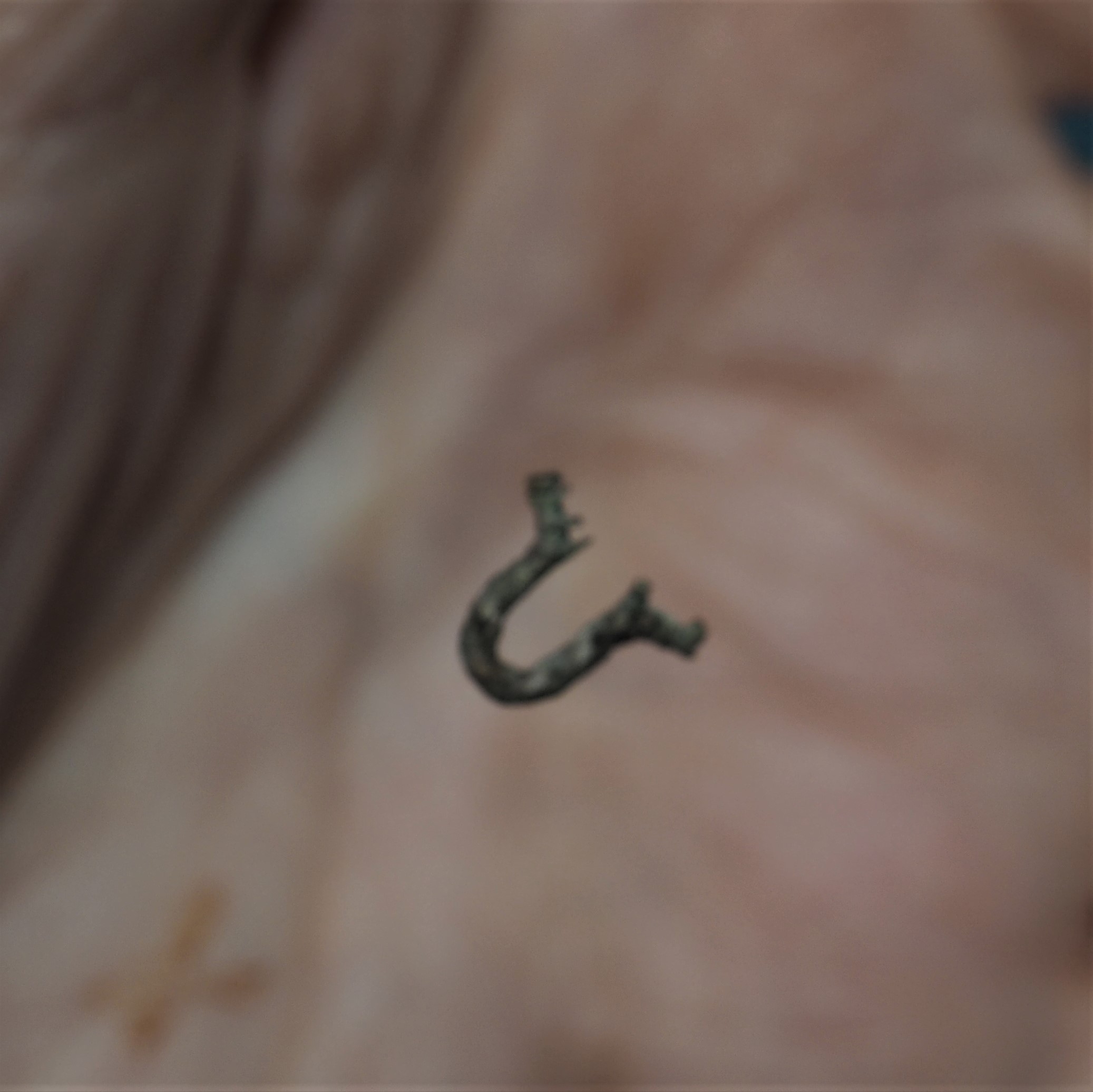
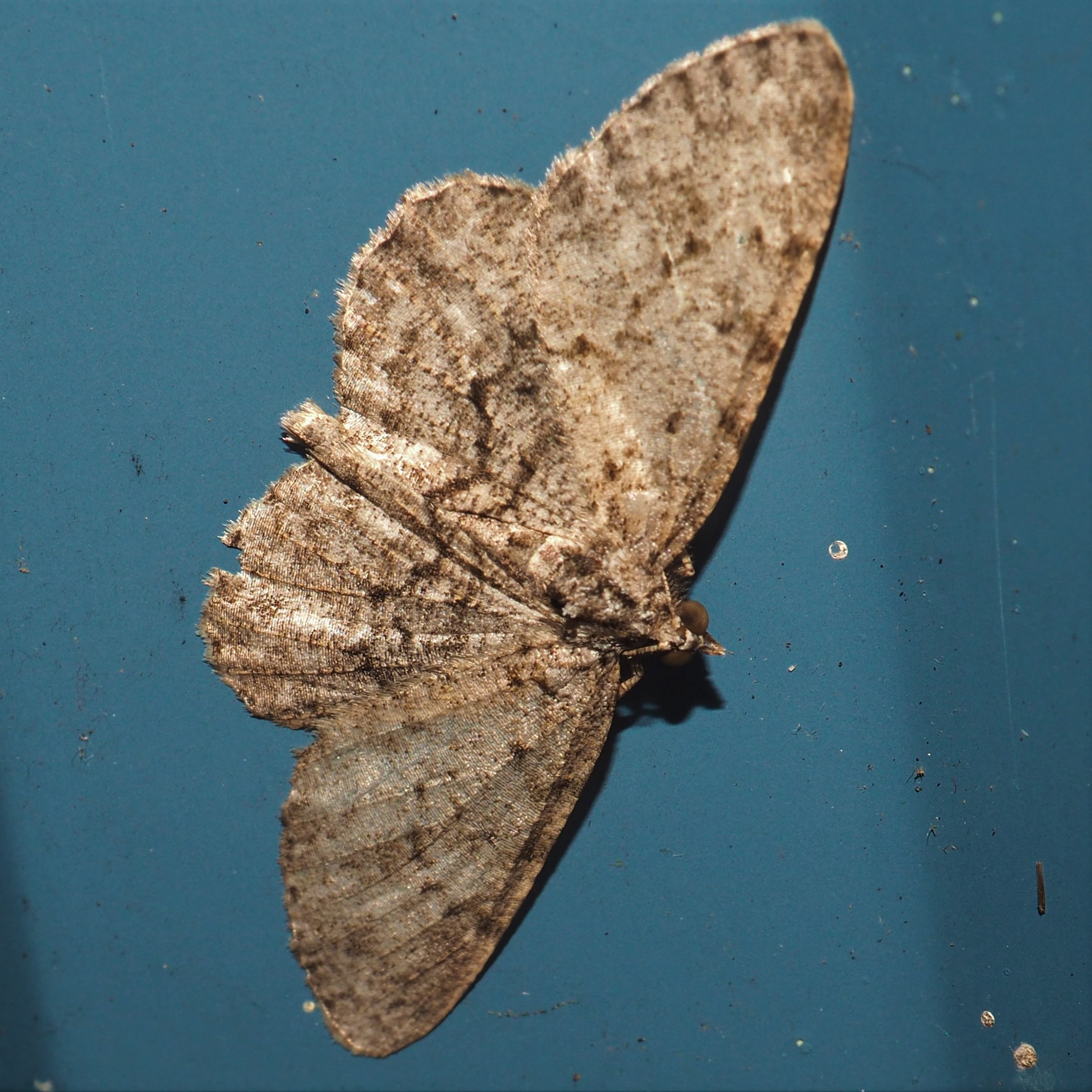
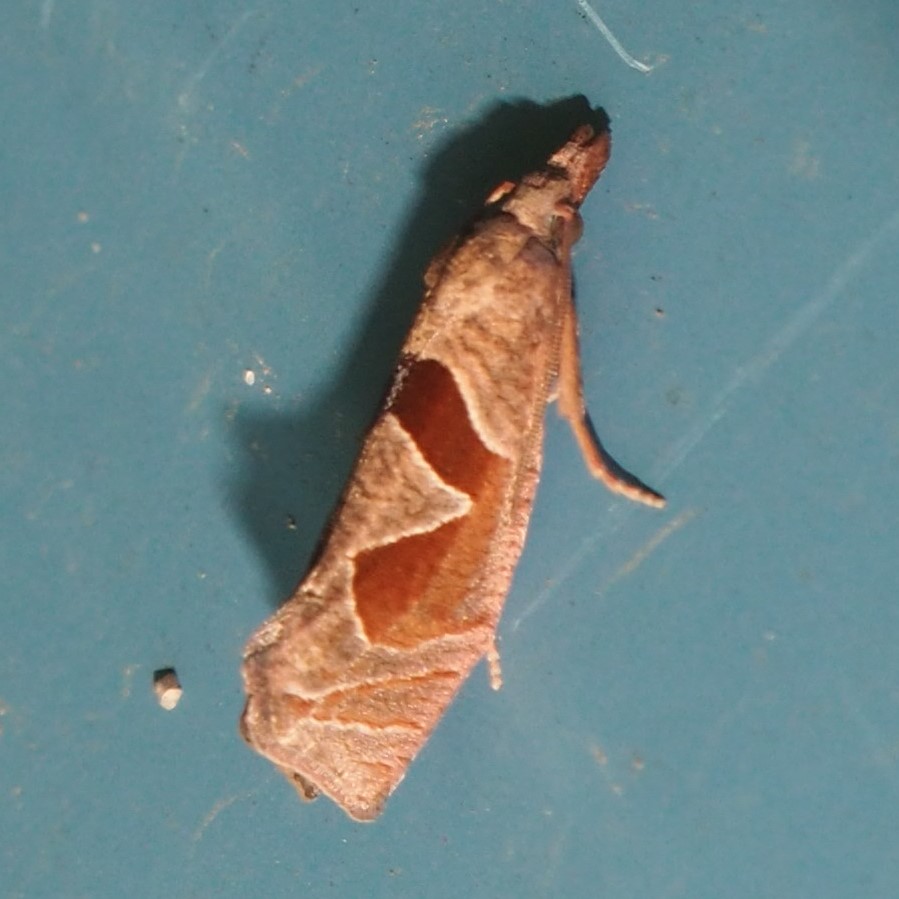
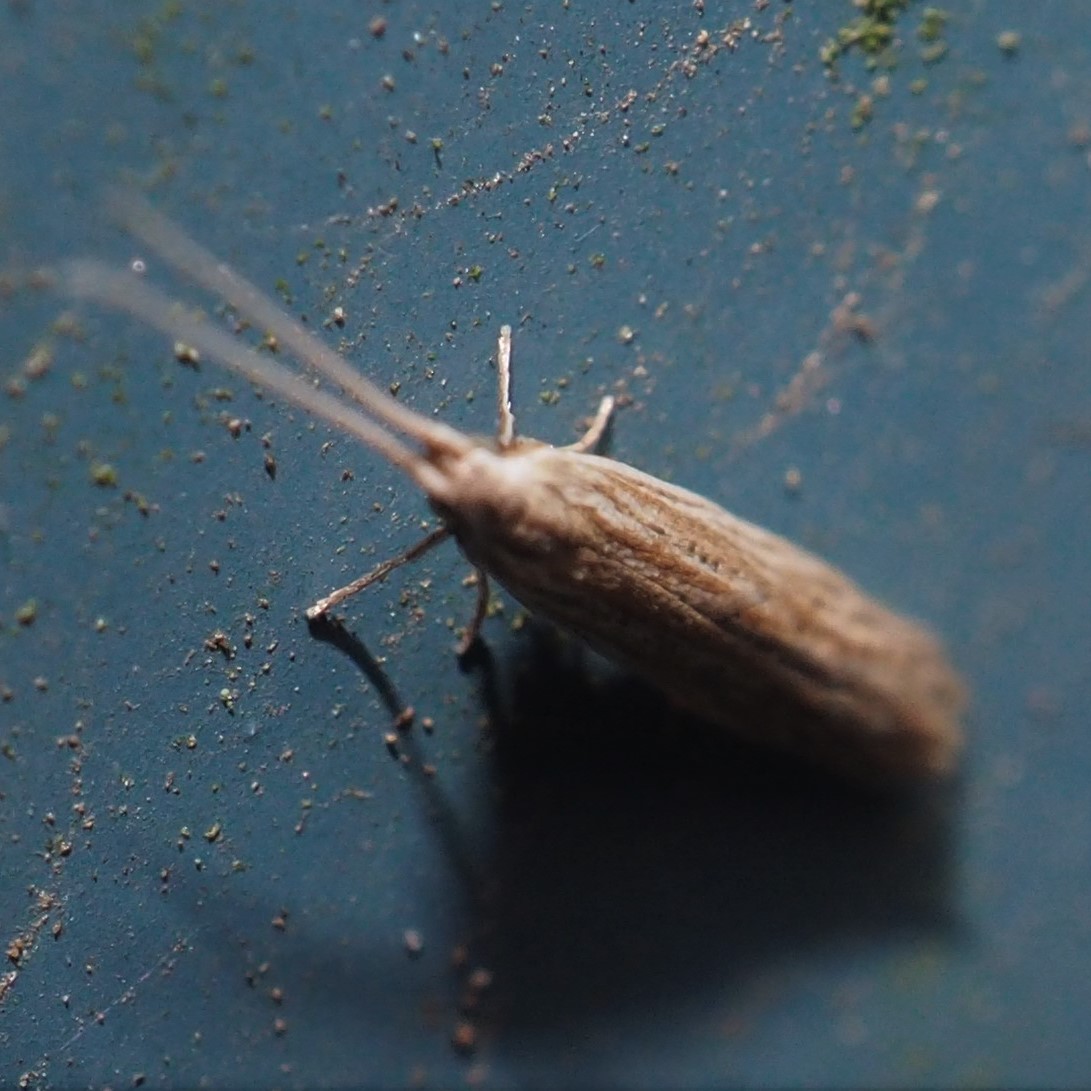
Well, now it's time for our mystery tour of the Flowers. This first little bud is the very first Aster bud I've seen. If you don't remember how wonderful it will be to see a whole group of Asters blooming, here is a sneak preview (also known as a retrospective).
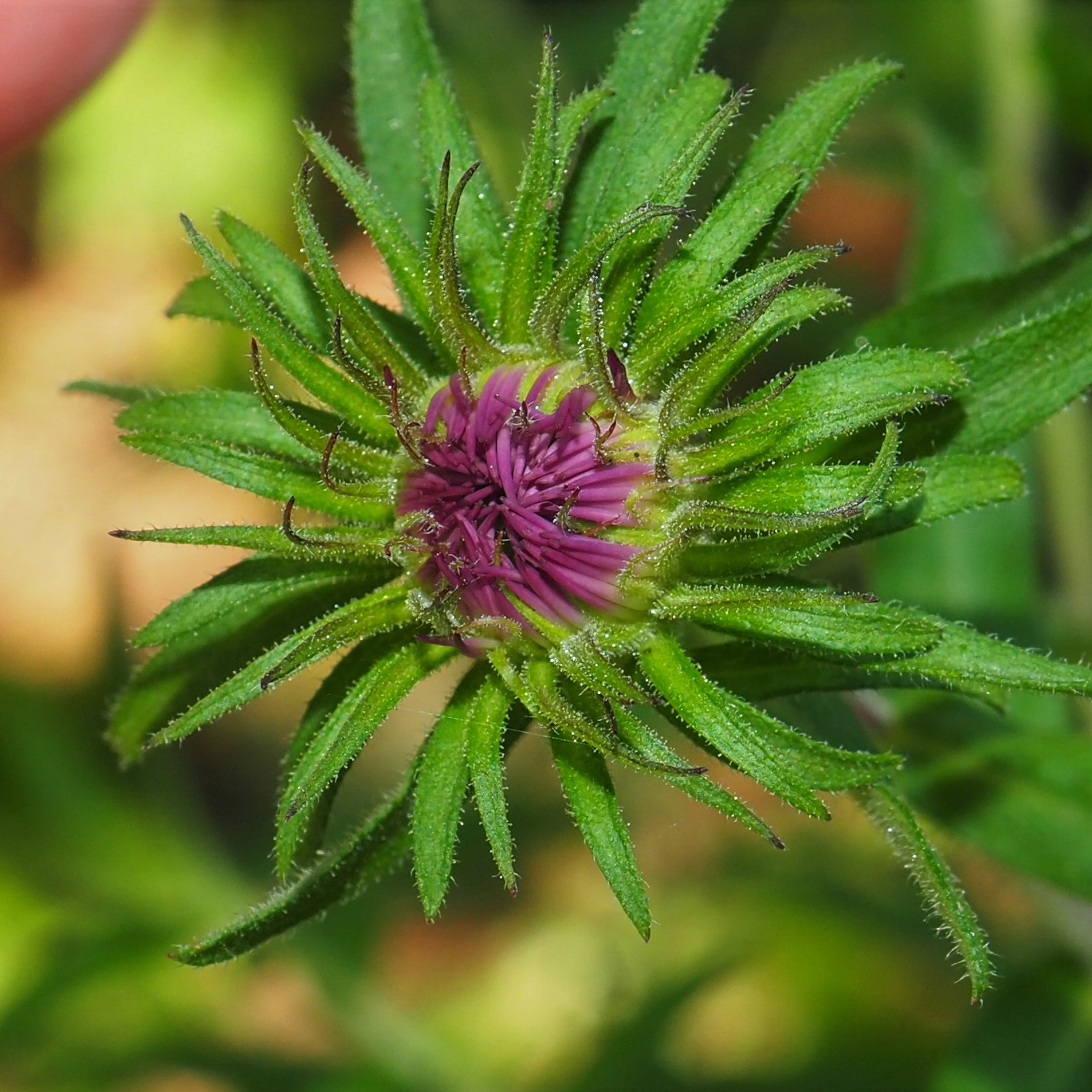
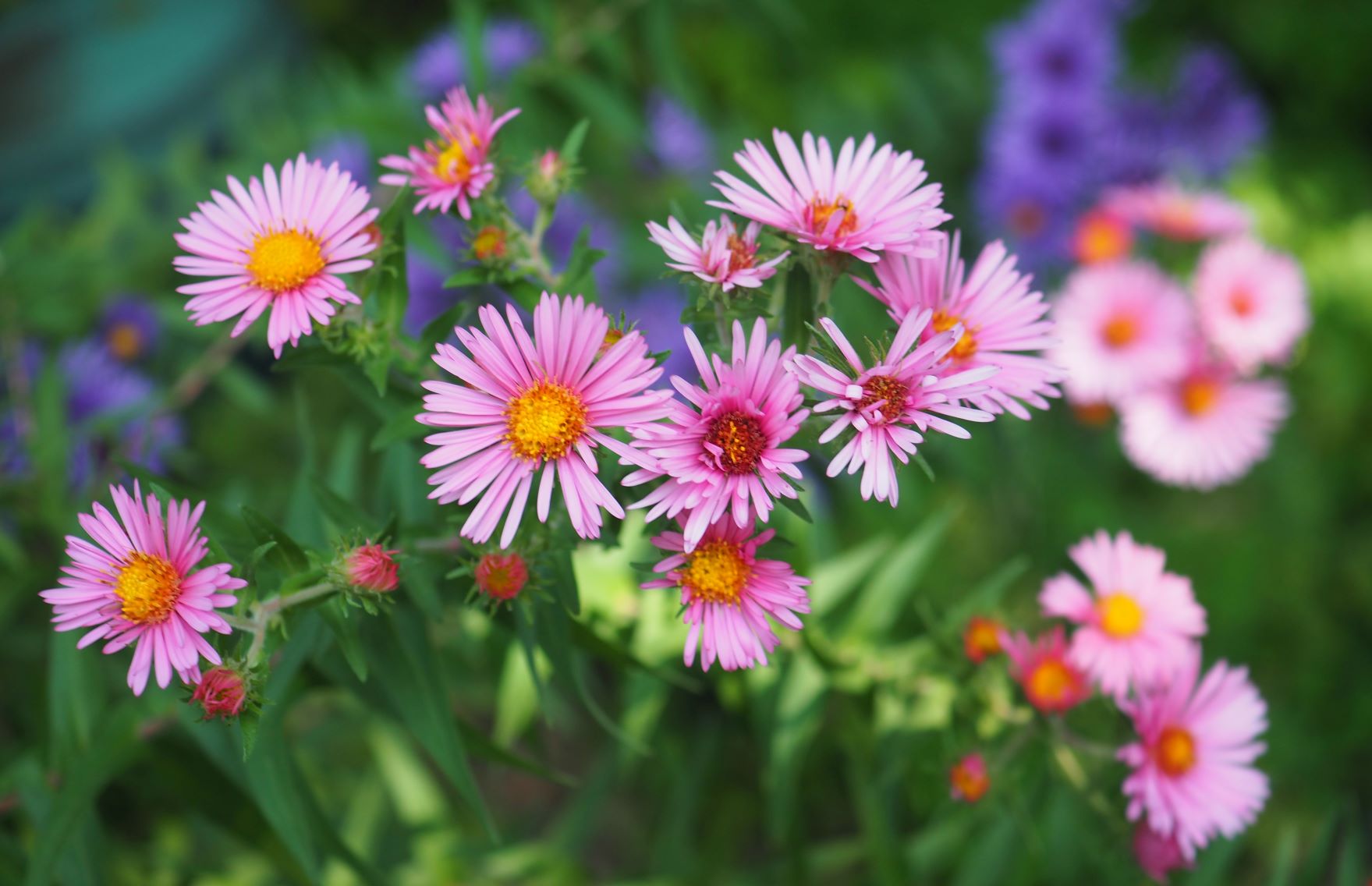
I've been hinting for months that the Goldenrod will be Golden one day soon. This first picture is a first teasing picture of the Goldenrod dragging its roots about going Gold. But picture 2, which I took a couple of days ago, shows the Golden Goldenrod. A lovely little Wasp has come HOME. This is what the first half of summer is all about - giving birth to the days of Goldenrod. Some of you may ask, but how can I enjoy the sight of all that gold when it makes me sneeze? I asked my Allergist about this and he answered that there are other things blooming when the Goldenrod is and it's the Goldenrod that gets blamed.

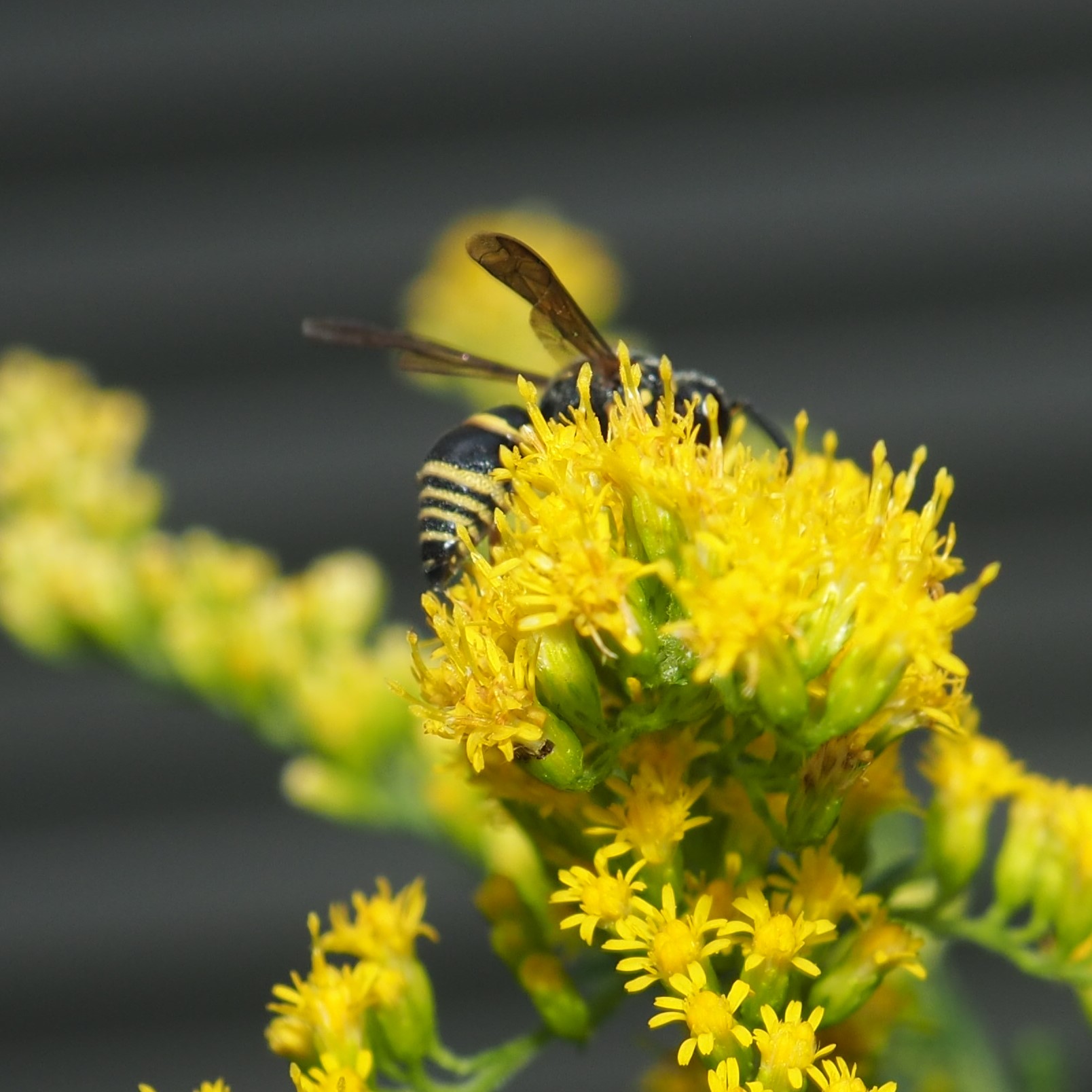
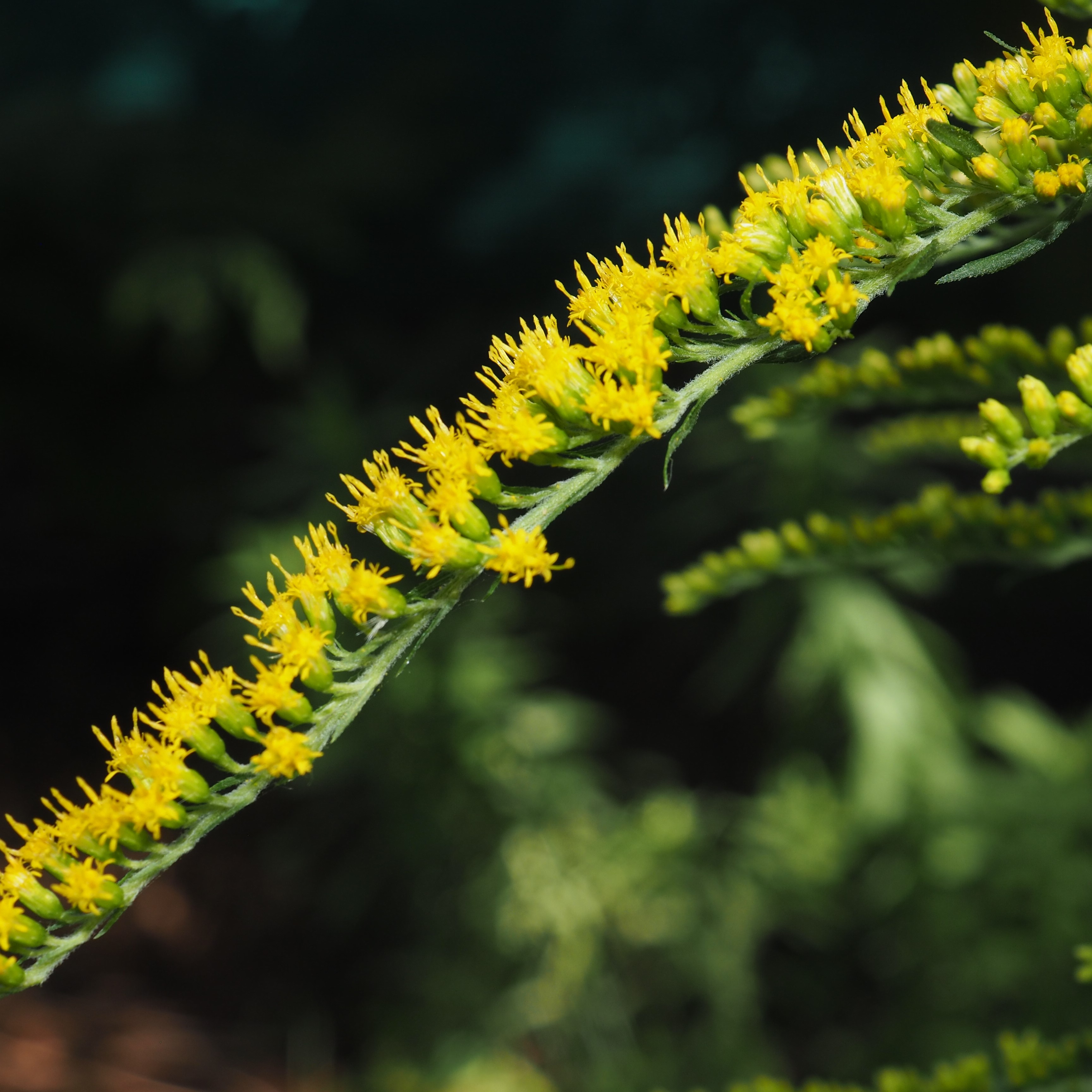
The Fall Phlox is still going. The second picture shows the "cultivated" Fall Phlox getting ready to bloom on the heels of the "wild type". Last is, of course, the "beauty in a small container" that is Spiderwort.
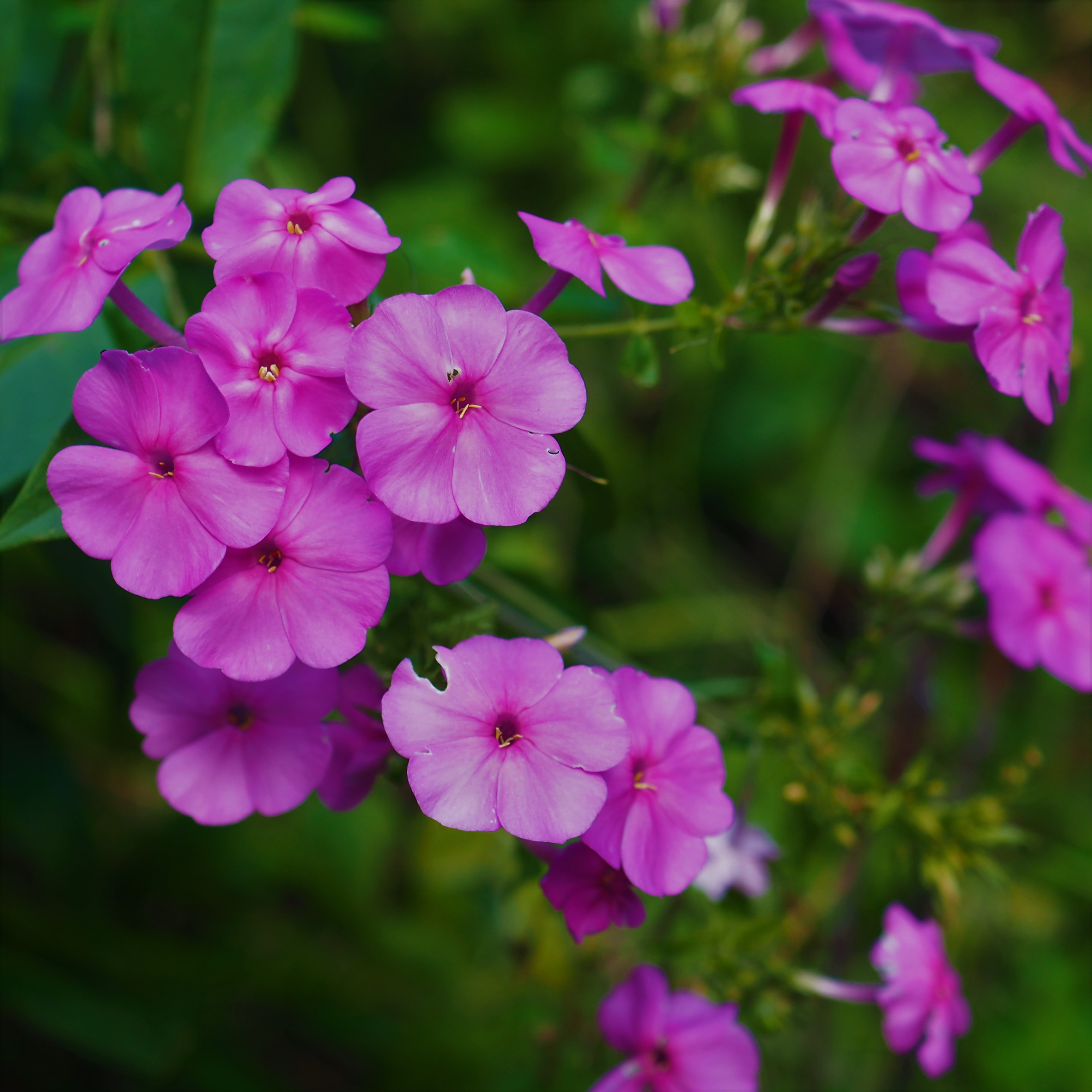

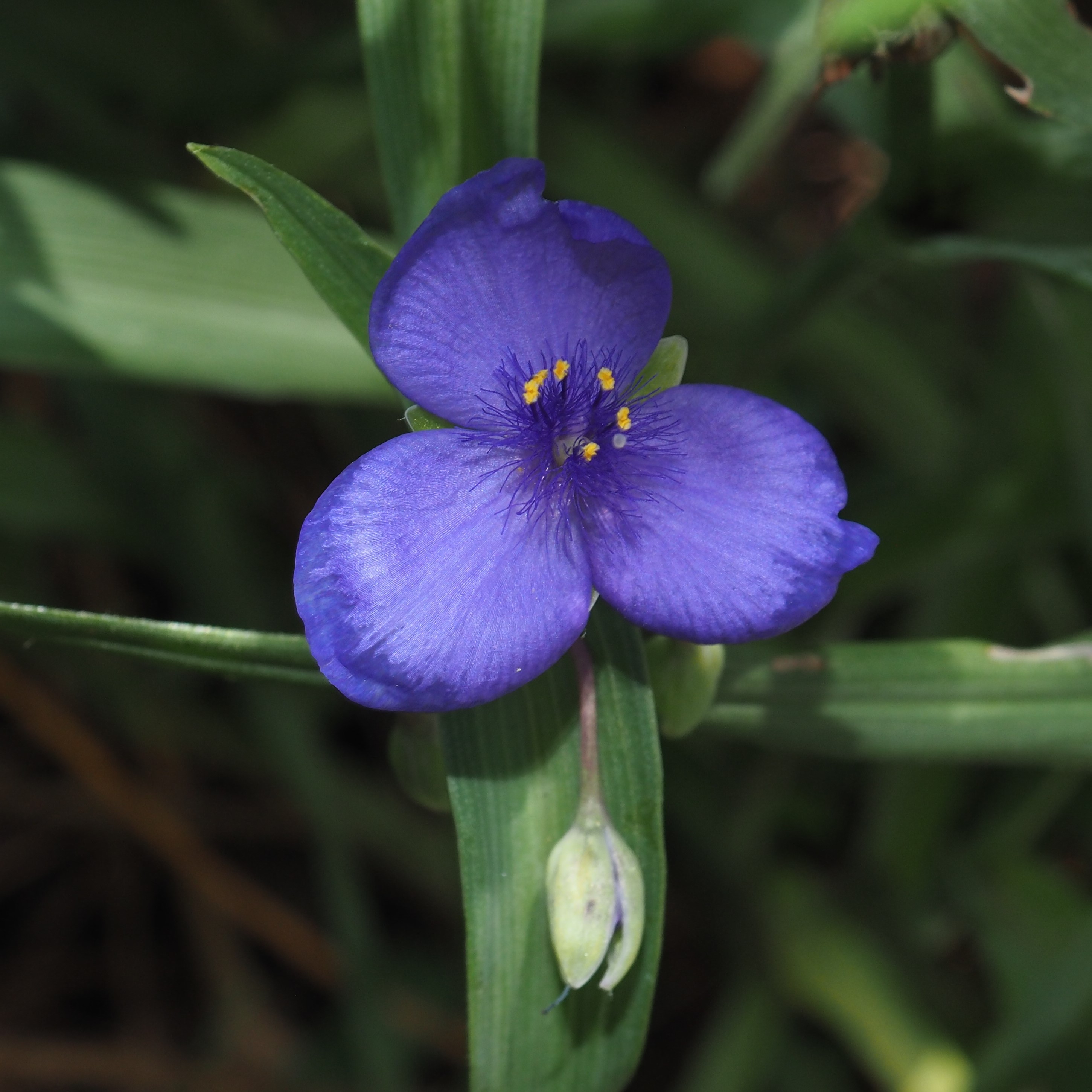
Surprise! The Pinks that live in the Deck Box, looking over with for months, are finally in bloom again! They will have to fill in for the Rose Campion, which has its last flower for the season right now. And the Fleabane doesn't want to be forgotten!
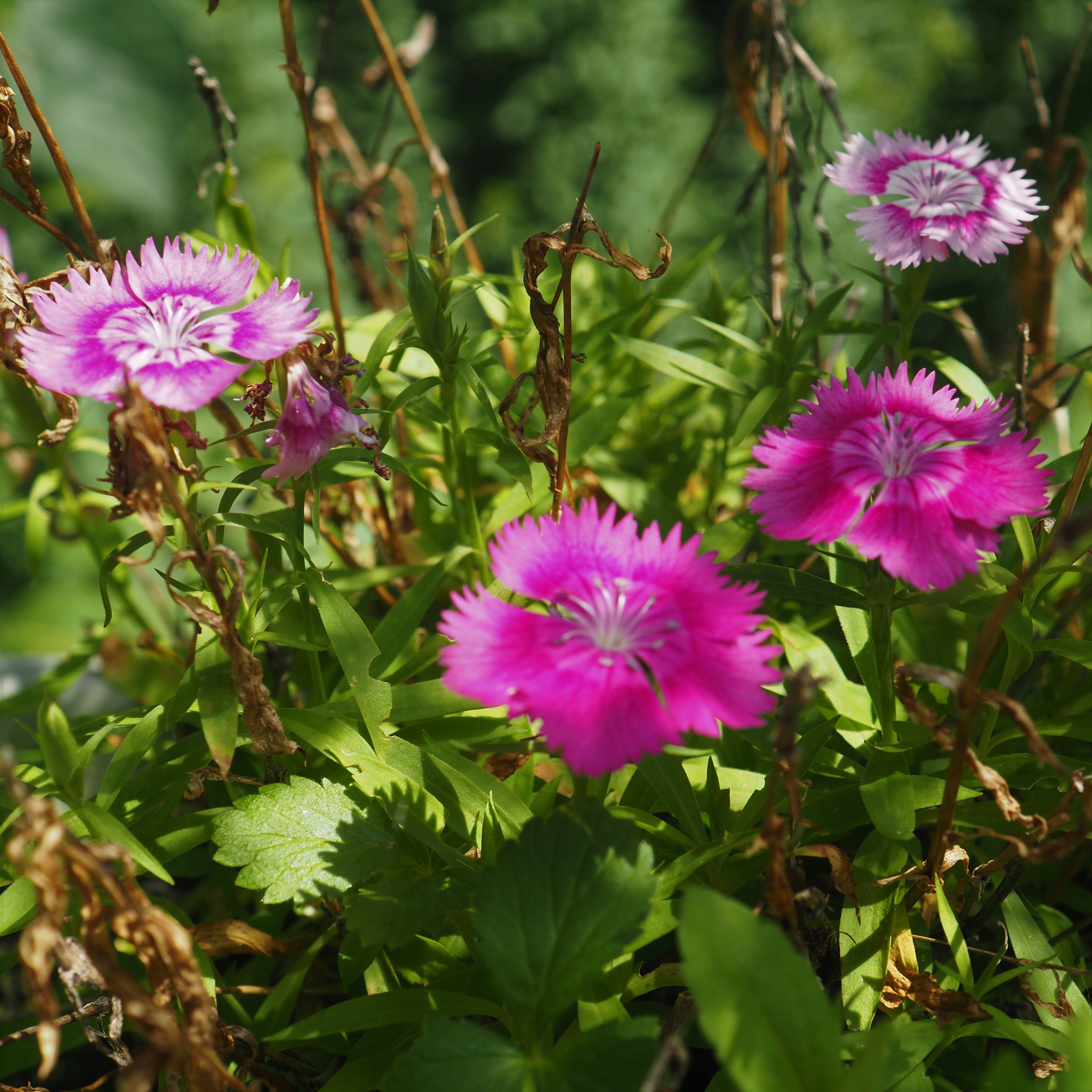
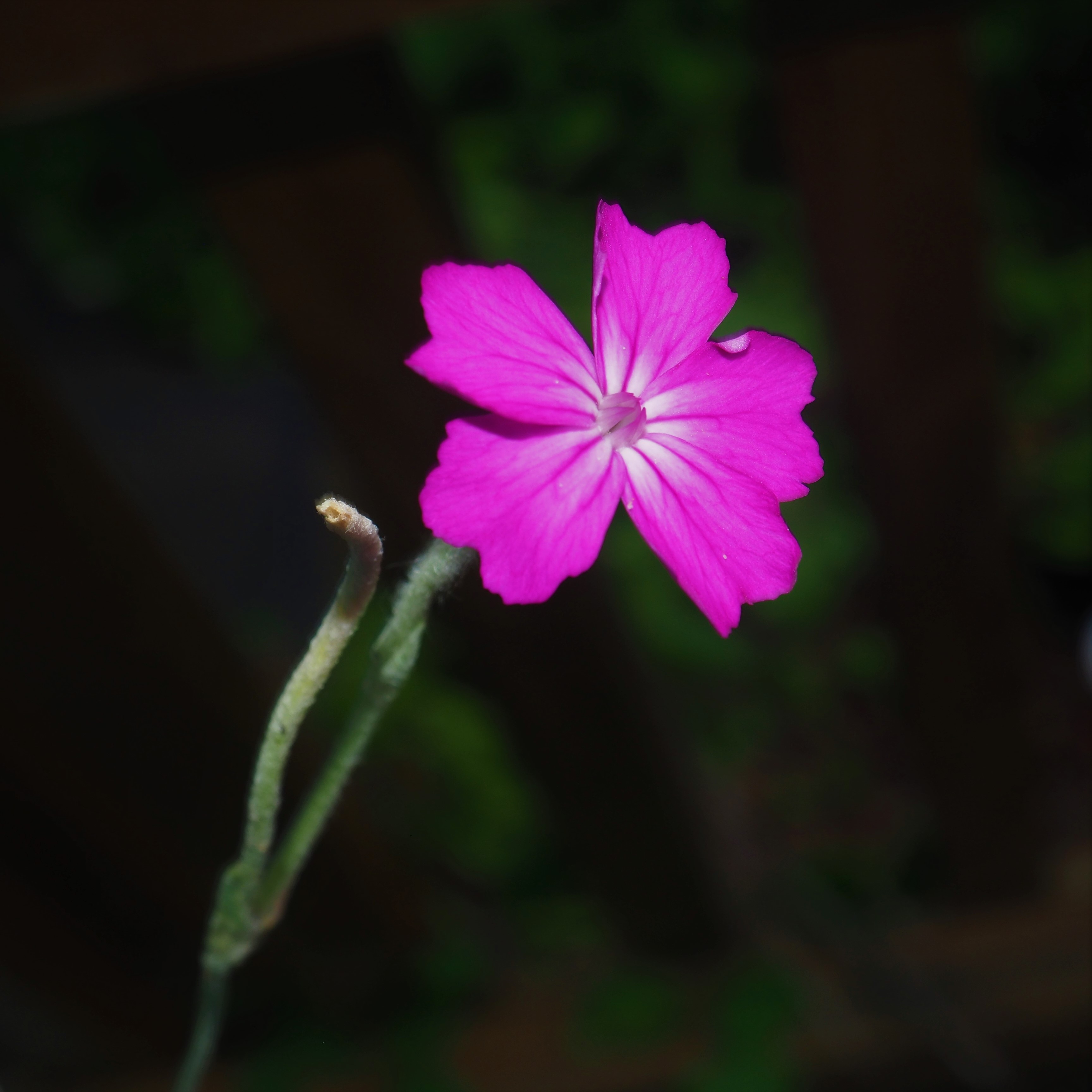
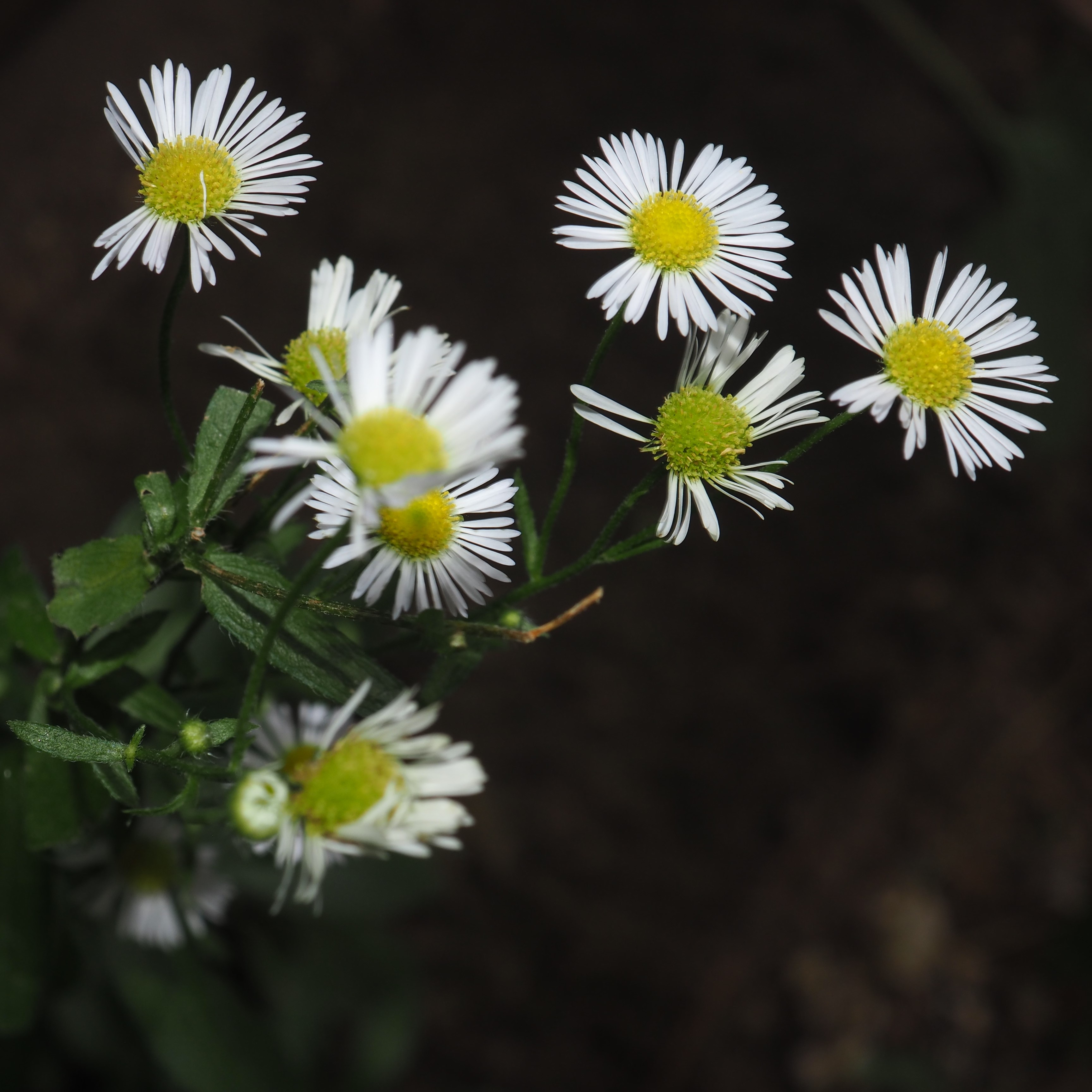
But the Queen of the yard is the August Orange Day Lilies! One day that one plant had four flowers!
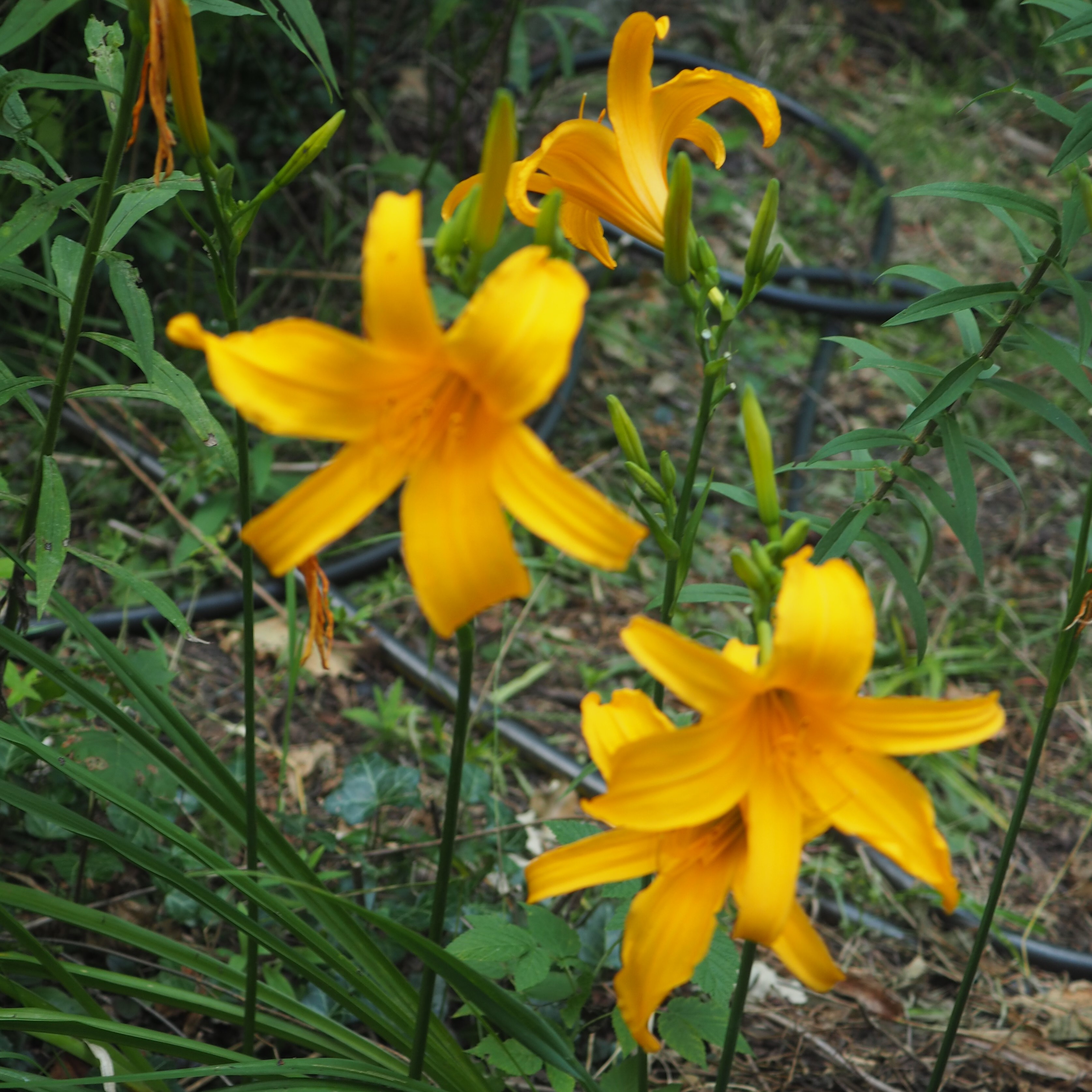
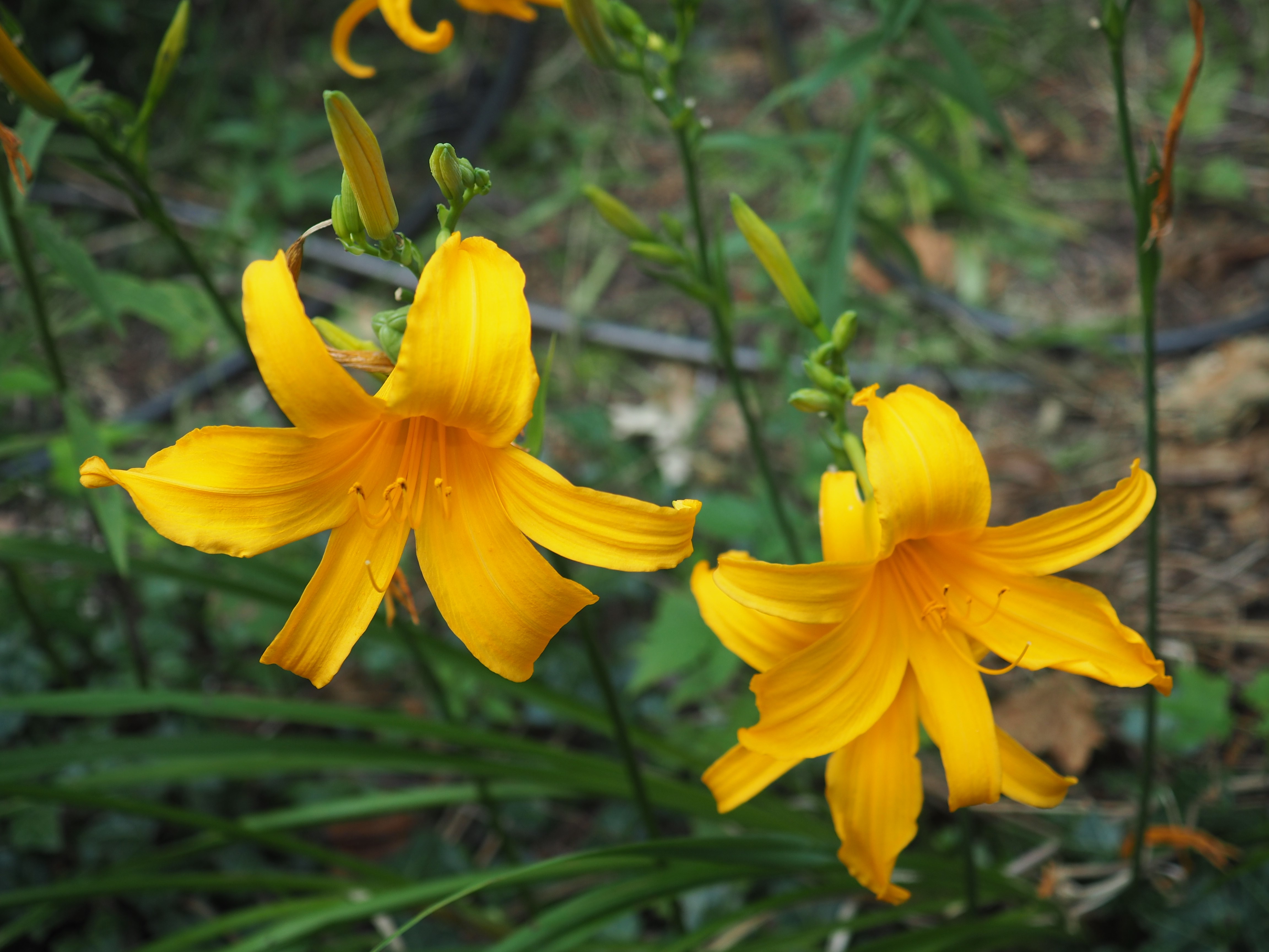
Calling Mary-Ann in Potsdam! Is this it? I meant to post these pictures to you last week. I was braving the weeds in the side yard which butts up against the Seely's house, when I almost stepped on these plants. They are only a bit more than a foot high. I think when you said yours were up, they were ahead of these dudes.
I'm hoping these are that vine, Climbing Fumitory or Adlumia fungosa, that came up and bloomed by surprise last year. I meant to save some seed but it disappeared. Maybe the squirrels planted it themselves! Since it's biennial, I expect it will make vine this year and maybe (is it too much to ask?) bloom next year. Right? The second photo is from Kathleen Seidl, whose Japanese Anemones are already blooming. (Mine have buds, but no official flowers yet. Thanks, Kathleen!

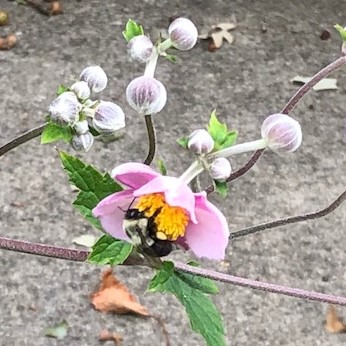
I'm heading into the Spiders, but want to post all these Polyxenus critters that came up in many more numbers this year. And the Pillbugs! Well, since all the Polyxenus look alike and the Pillbugs don't, I'm actually posting One Polyxenus and two Pillbugs.

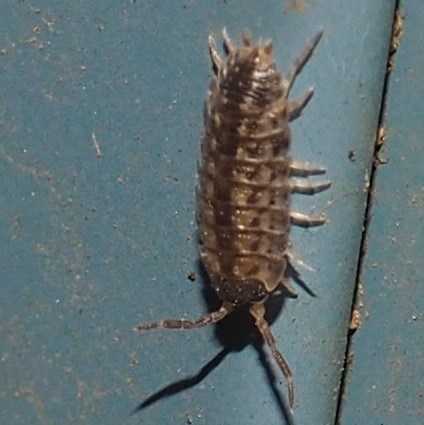
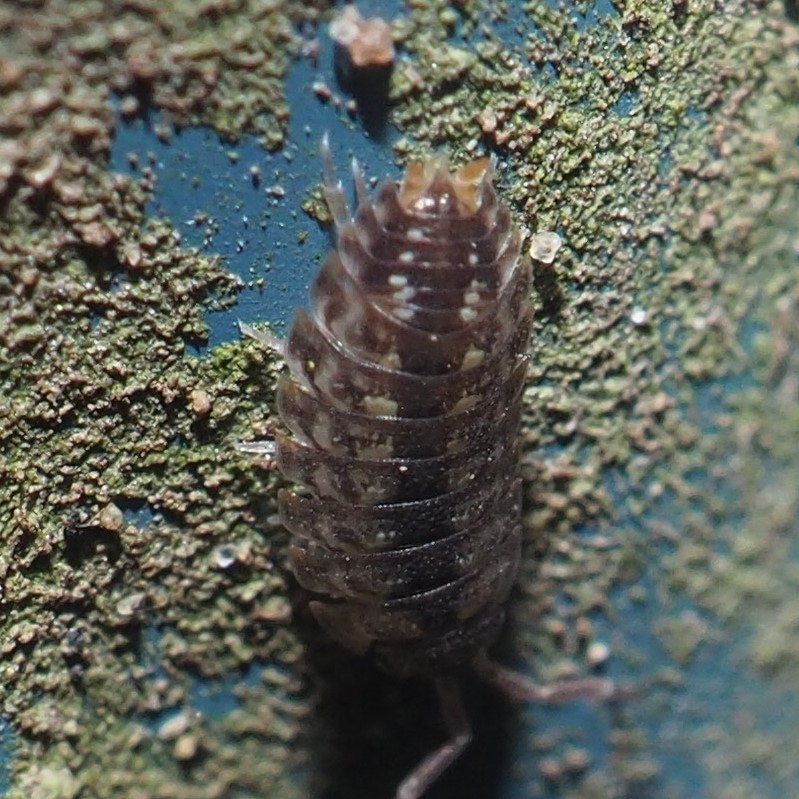
Spiders Galore! Naturally they were mostly Common House Spiders, like these.
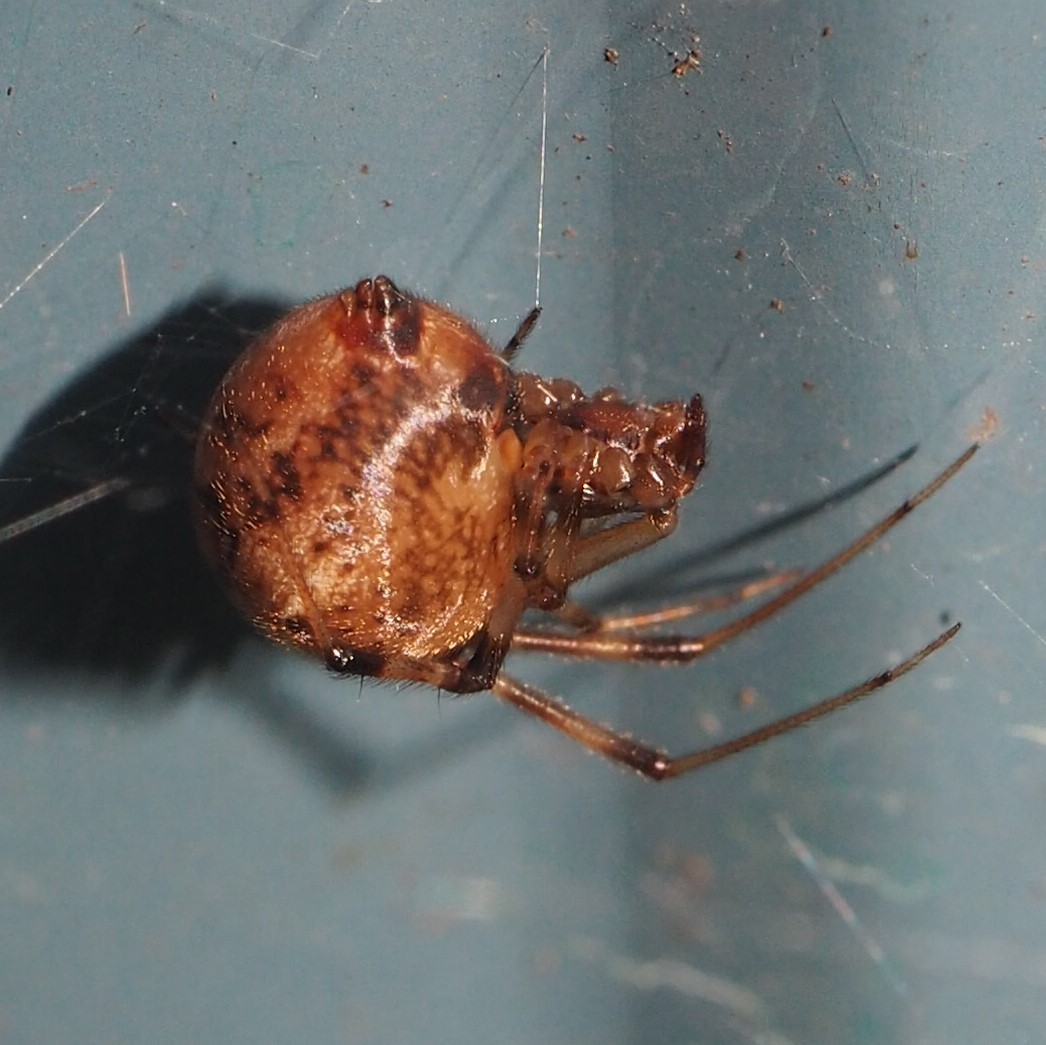
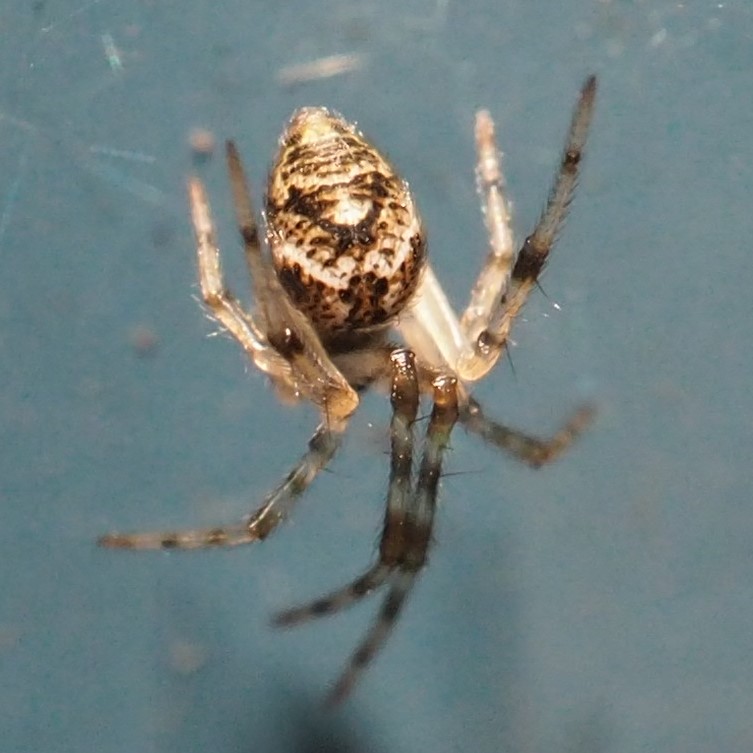
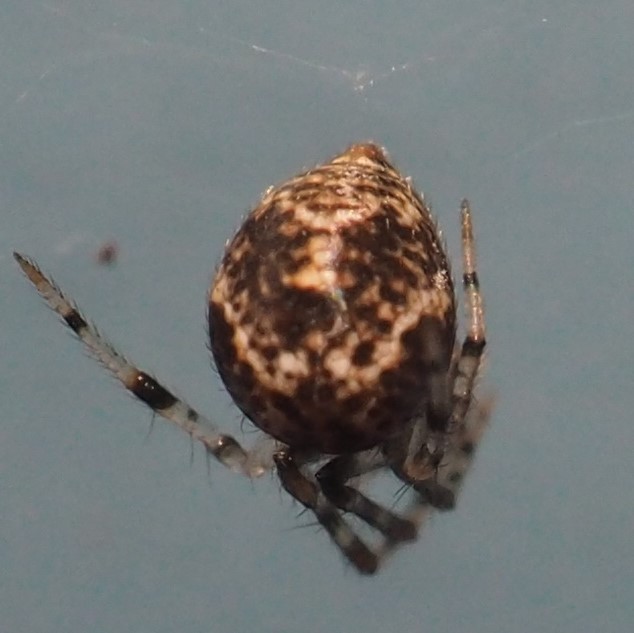
Oh, I'm not through. Those were the girls. I believe these red-sporting guys are CHS males!
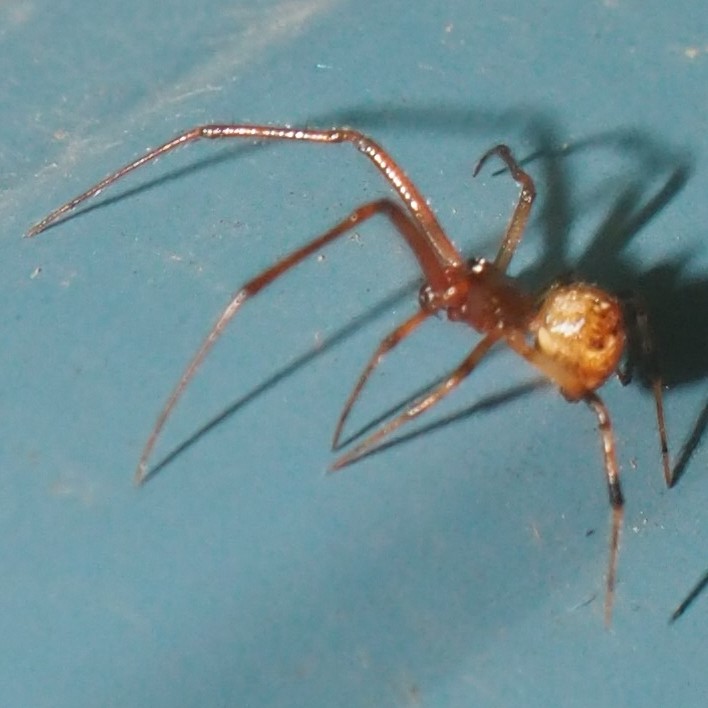
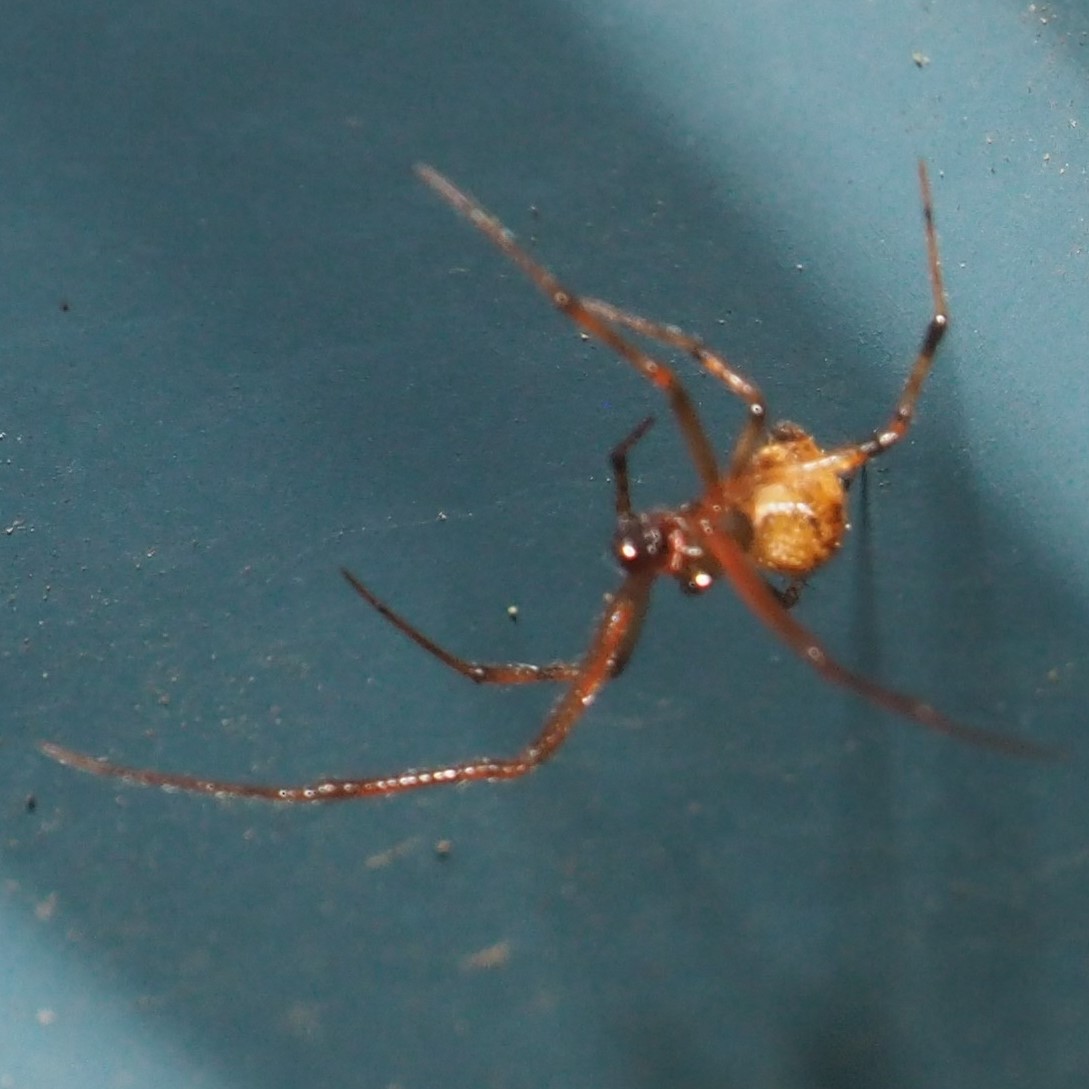

I believe this is a Grass Spider. It was making its little silk bower on the Wall. Same for number 2. Third is a Jumping Spider, but I don't know which!


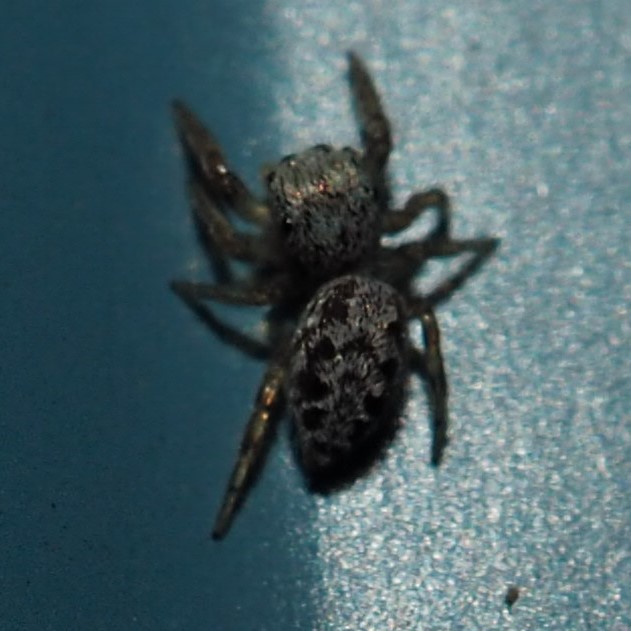
Among Jumping Spiders, my favorites (maybe because they are the most common here) are the Naphrys pulex. First here is probably a juvenile. The others are probably adults. The first has its head down.
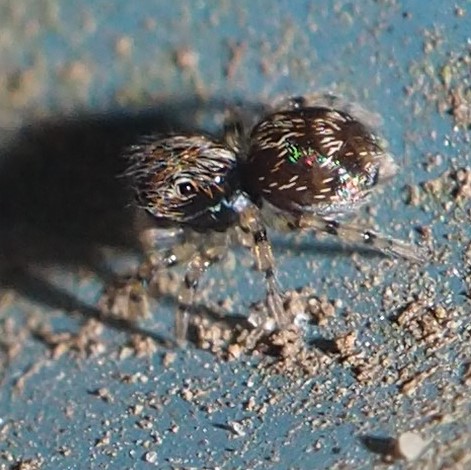
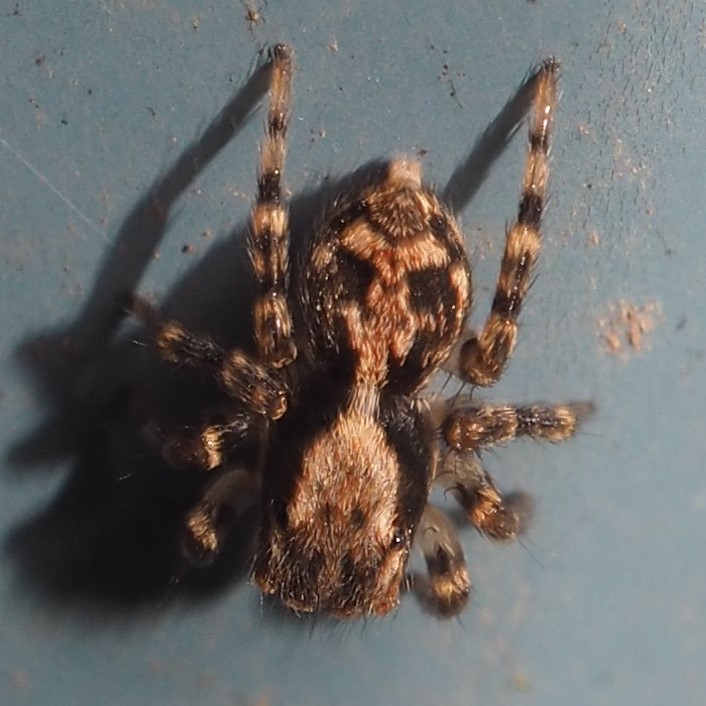
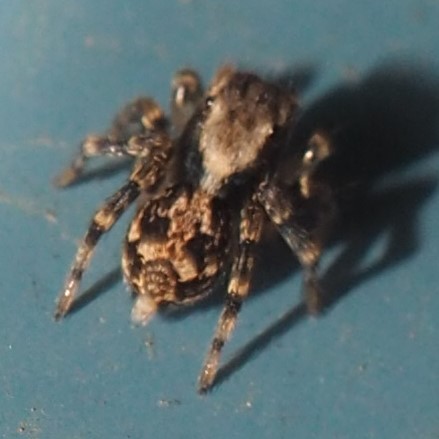
First is a dainty Spider, but I don't know what it is. The next two pictures are of another mystery spider.
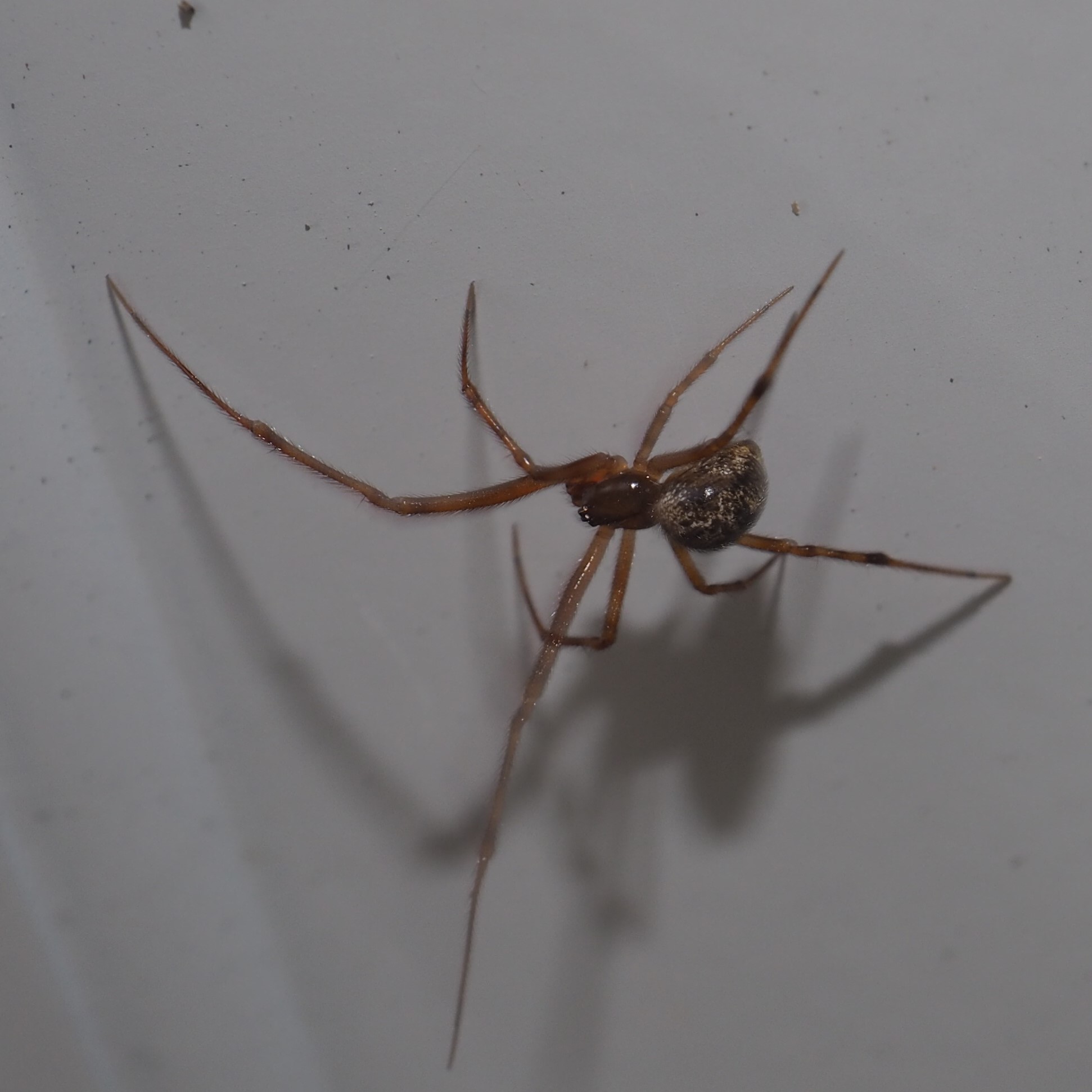

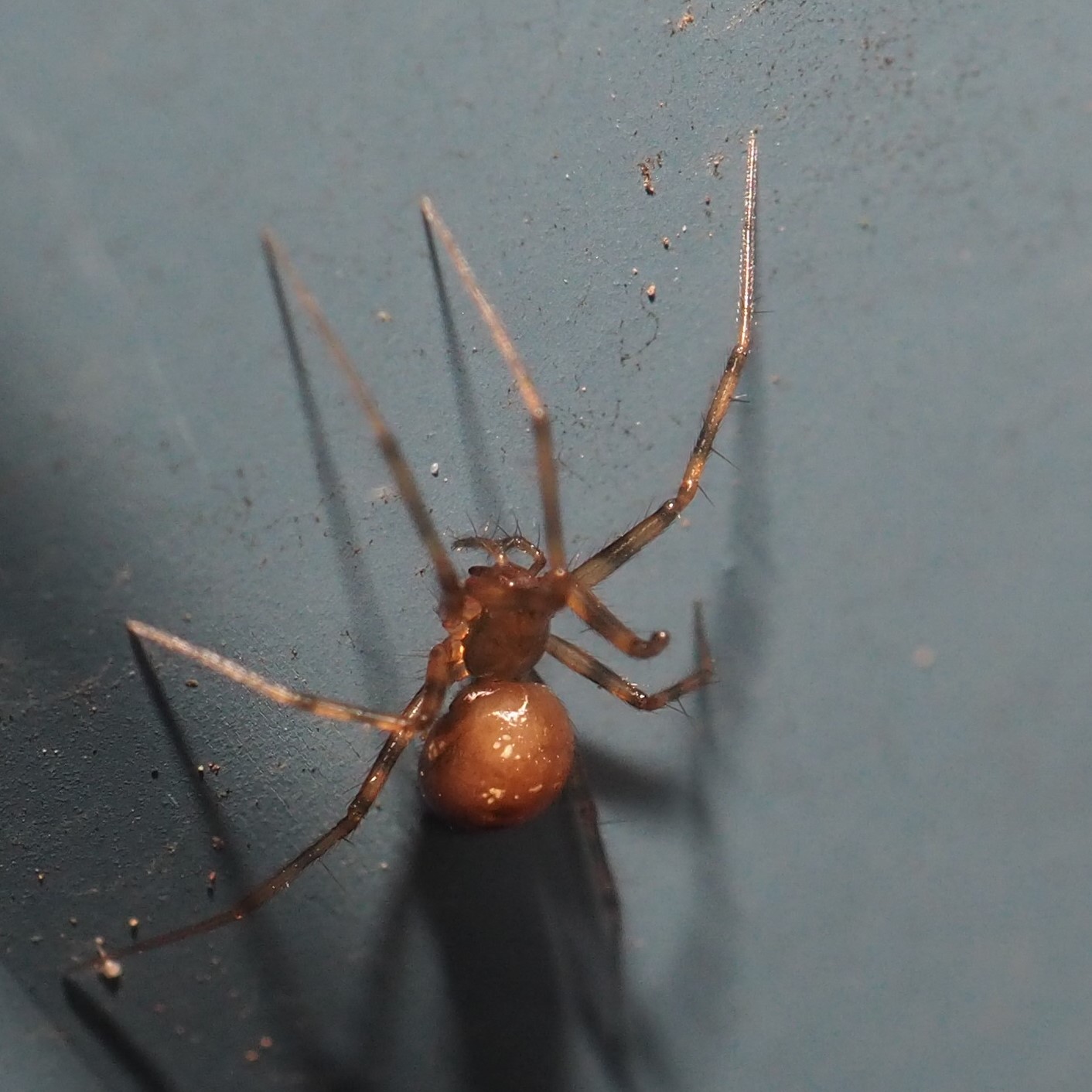
And would it be a Spider Section if there were no Mimetus Pirate Spiders? Since we usually have M. puritanus, I'd like to say that's what these two are. Possibly they are Juveniles, since the decoration on the head is somewhat more delicate than usual. But whatever it is, it has cadged a lovely dinner, another big Spider.

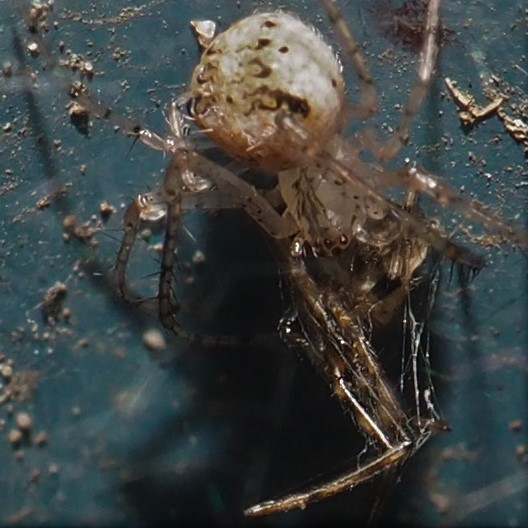
But it was certainly Wasp Week around here. Many of these were ones that I thought were Ants until they got re-ID'ed on iNat. The first one here is a Chalcidoid Wasp of genus Eupelmus. So is number 2, but they may be the same species. Third is of genus Basalys.
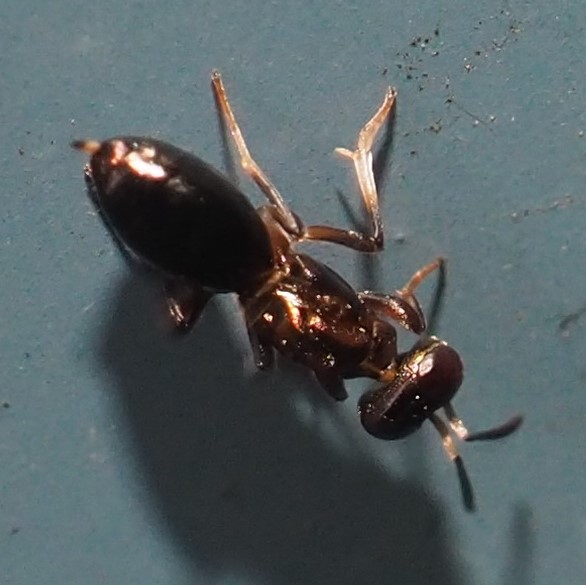
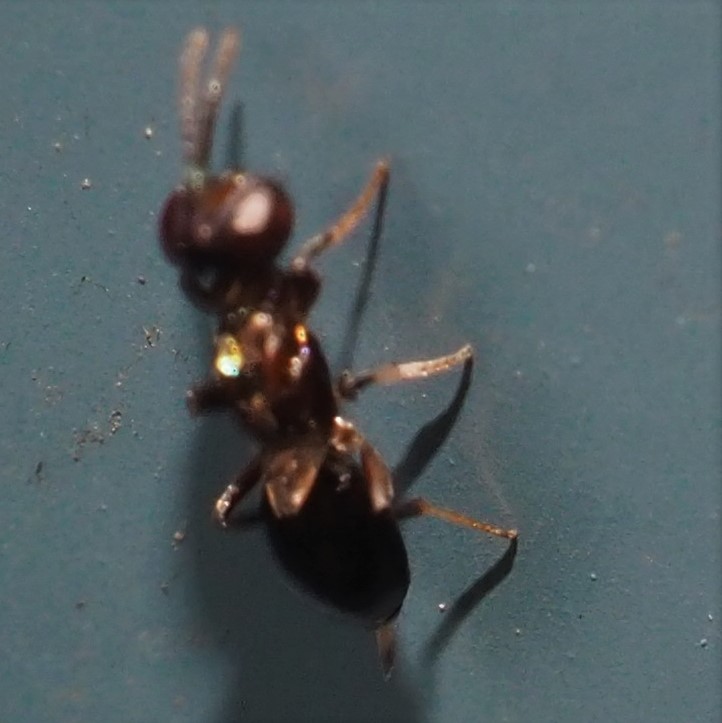
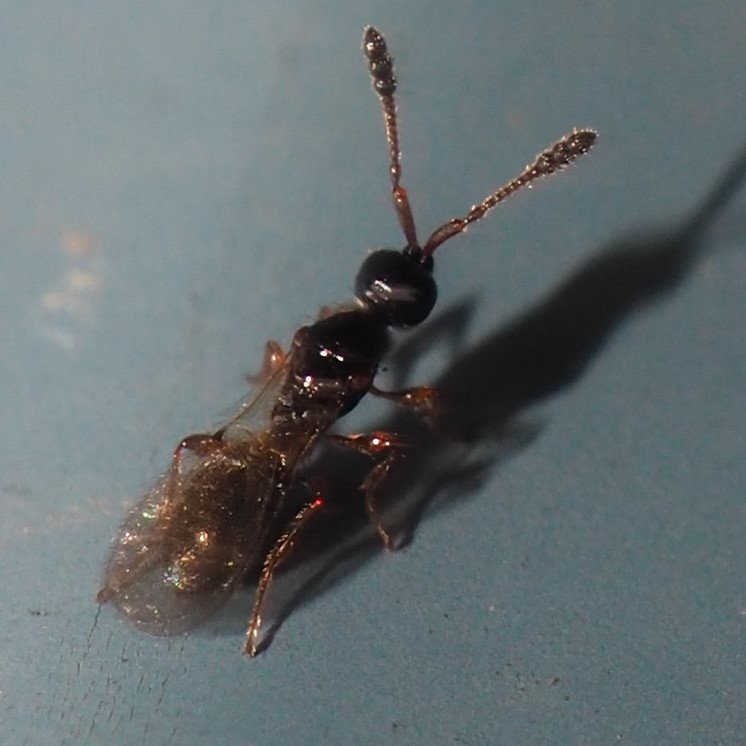
First is an Ichneumonid Wasp, which I decided because she seems to have an ovipositor coming out of her abdomen. I don't know what number 2 is, but it has the cutest little curly legs!
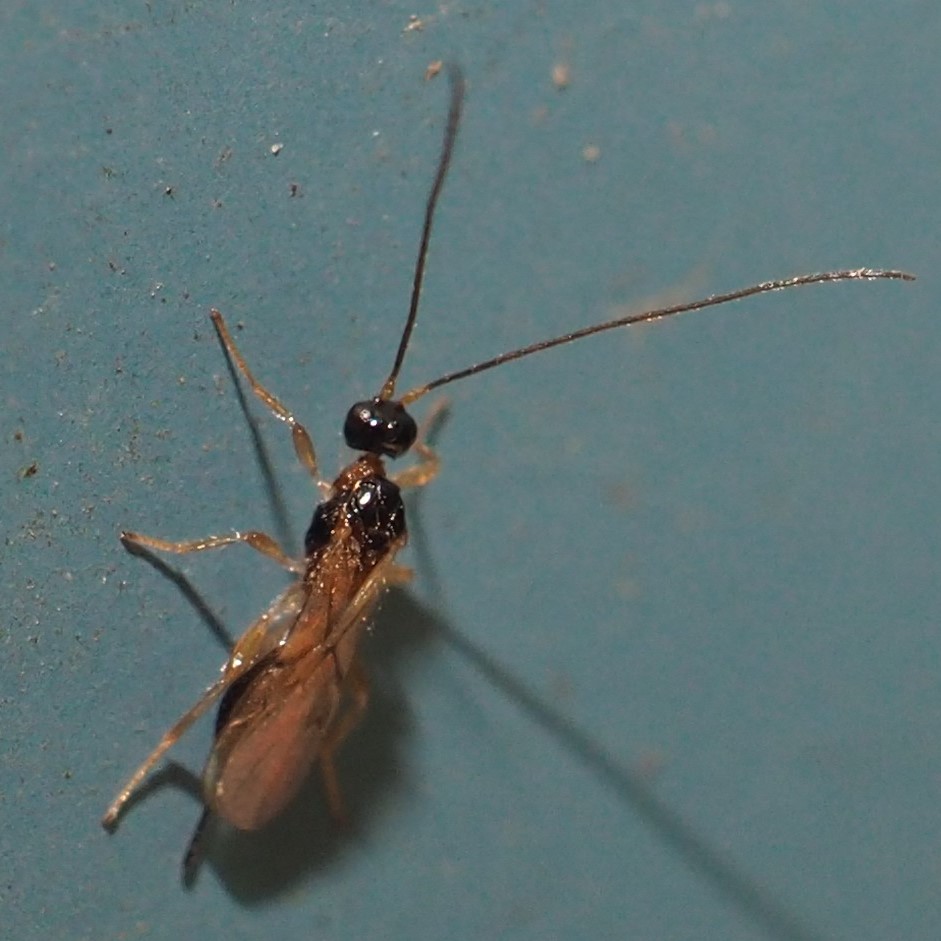
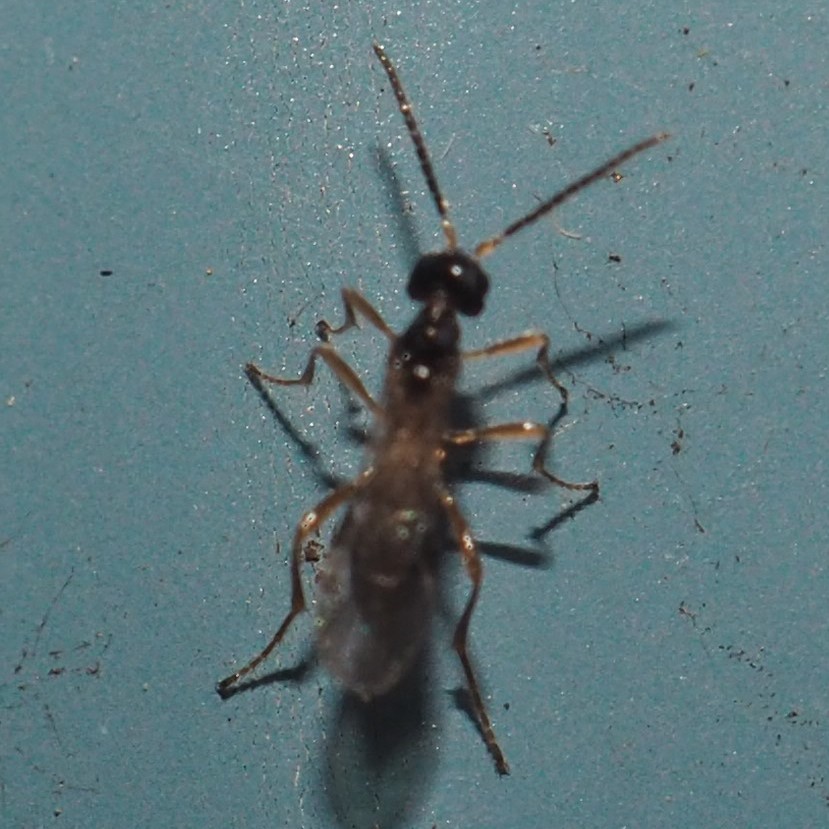
But we were once more treated with the sight of a Spider-eating Wasp carrying along her catch. In the last two pictures we see that the treat is one of those large Crab Spiders.
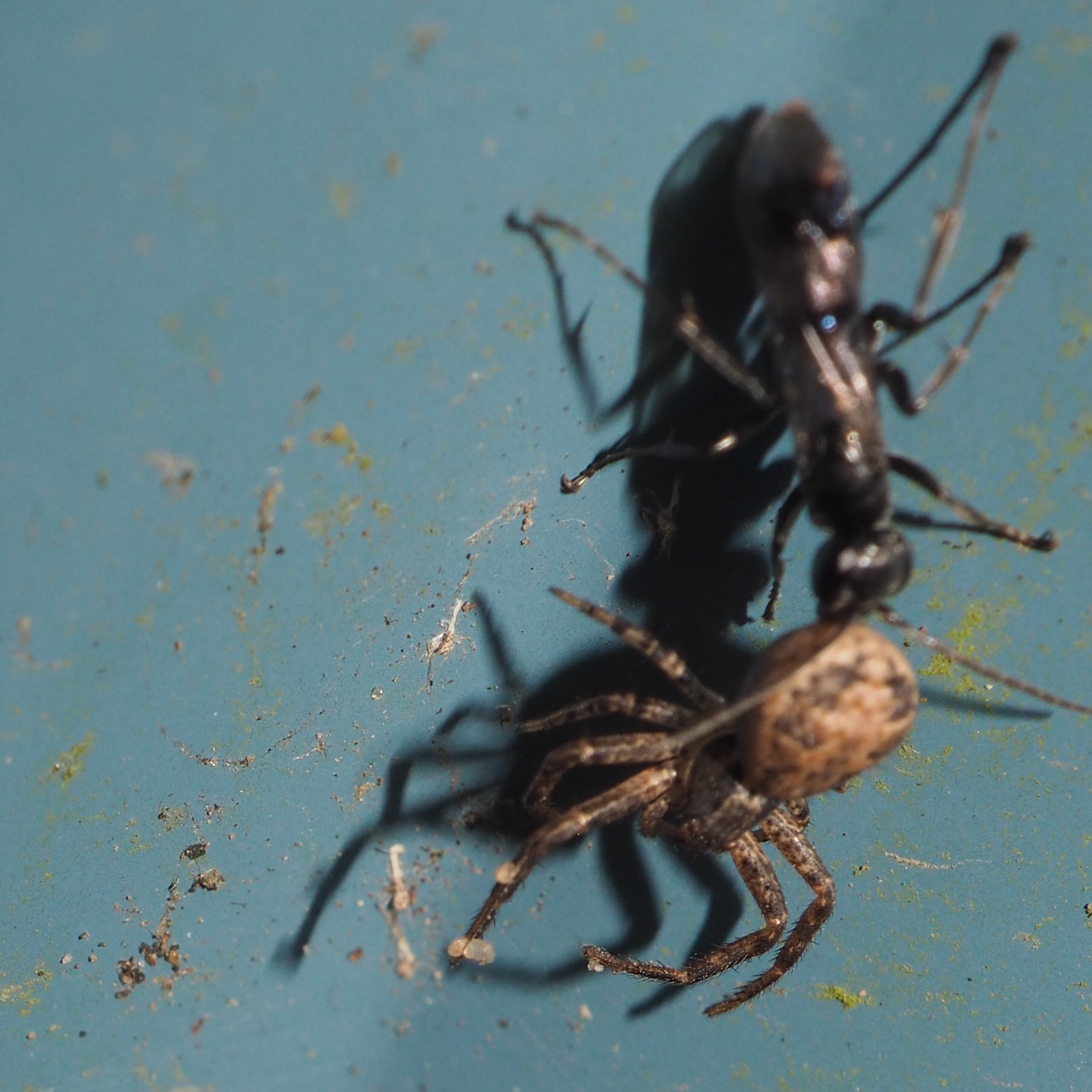

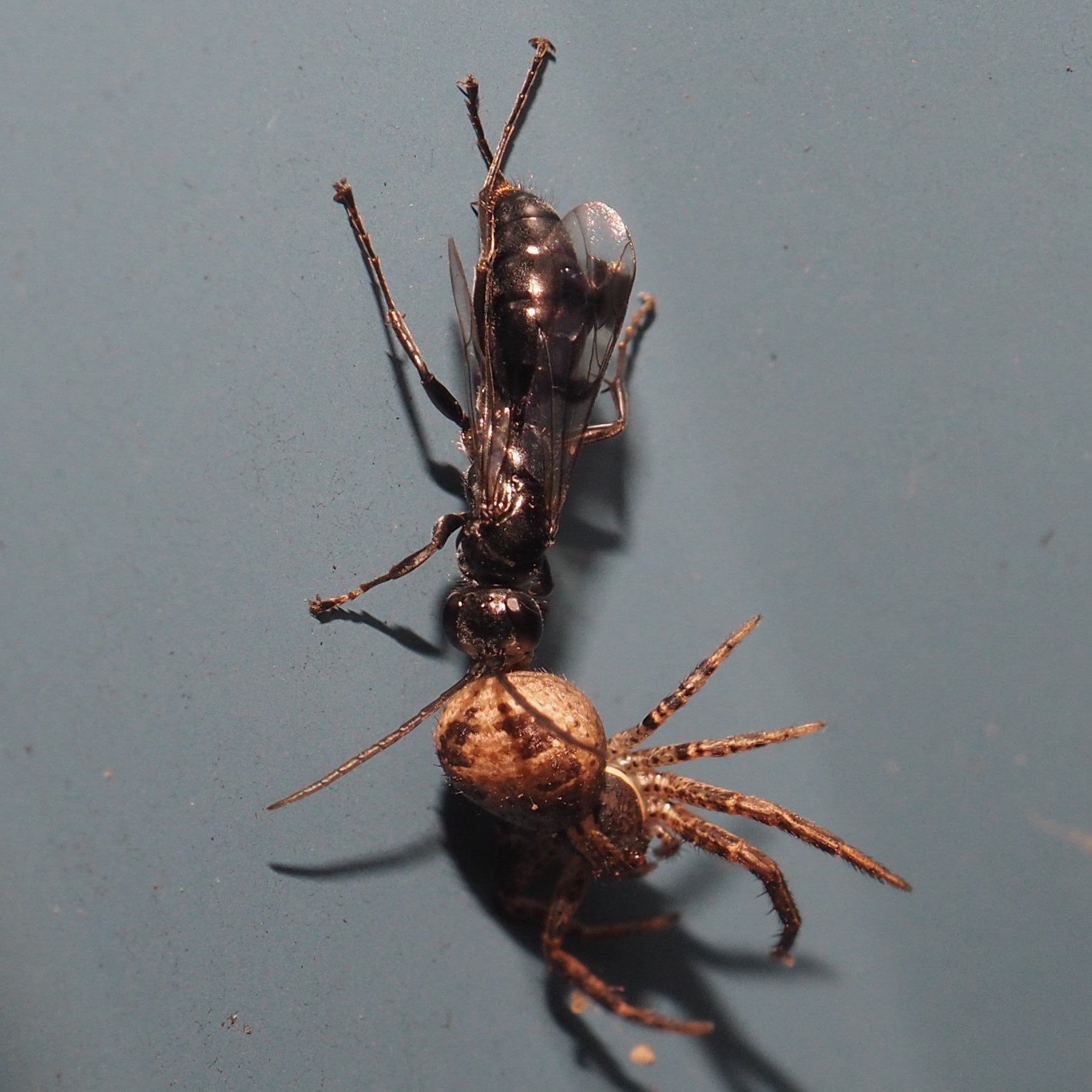
I was sitting on my deck chair looking at the bottom of the North Wall and suddenly realized the tip of my shoe was being surrounded by a number of Yellowjackets. I think they are mostly Vespula flavopilosa (downy yellowjacket). I drew my foot back and got a couple of pictures before moving myself and my chair along. Back at the Pond, I spied another kind of Yellowjacket, an Aerial Yellowjacket (Dolichovespula arenaria).

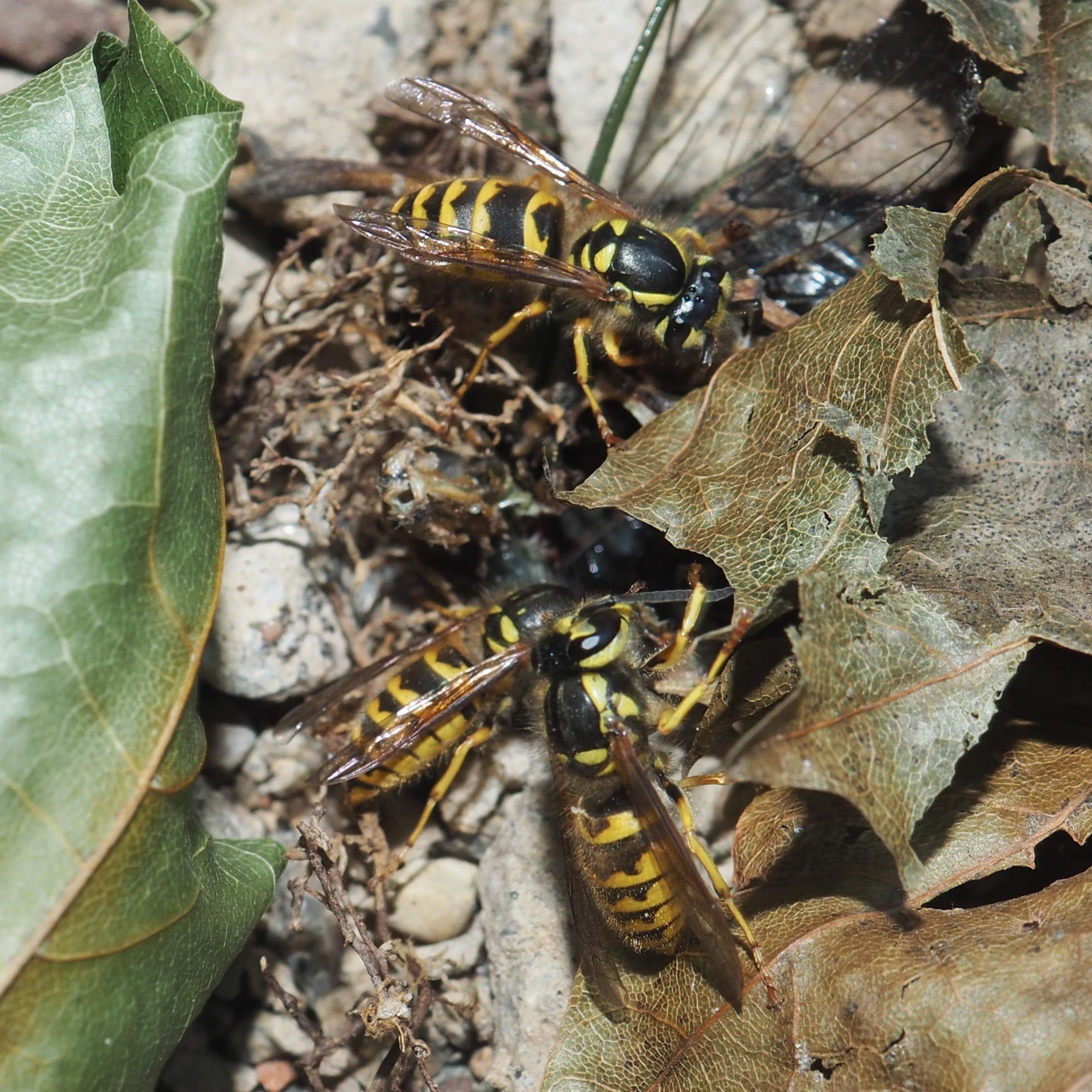

Let's go visit the Pond. The algae problem is about the same, exascerbated by the heat (90's F in the shade). But the fishes seem happy and hungry, and every day I spot a couple more little ones. They tend to stay below the surface (do they know about airborne dangers?) until they get a little bigger. Here are some family pictures.
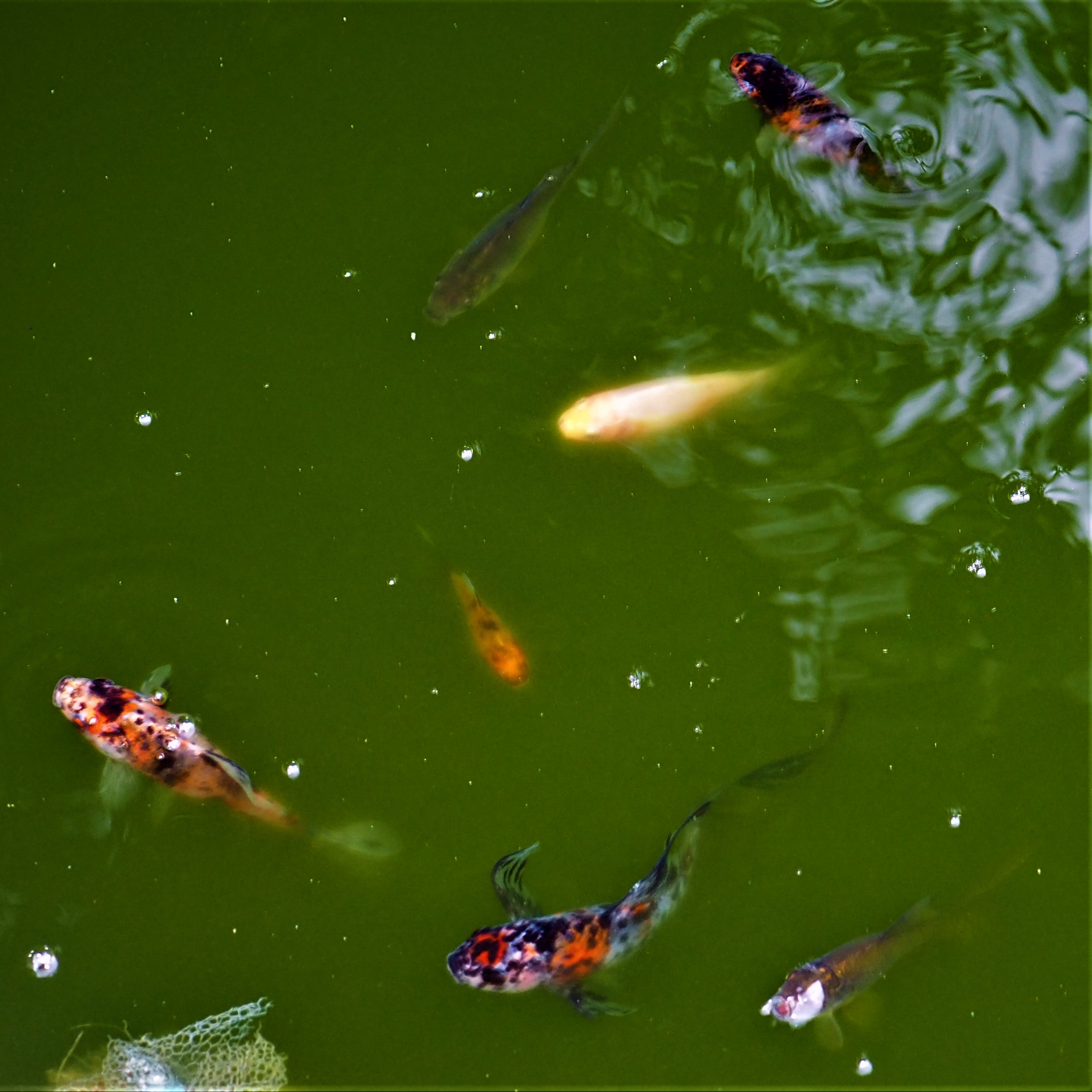
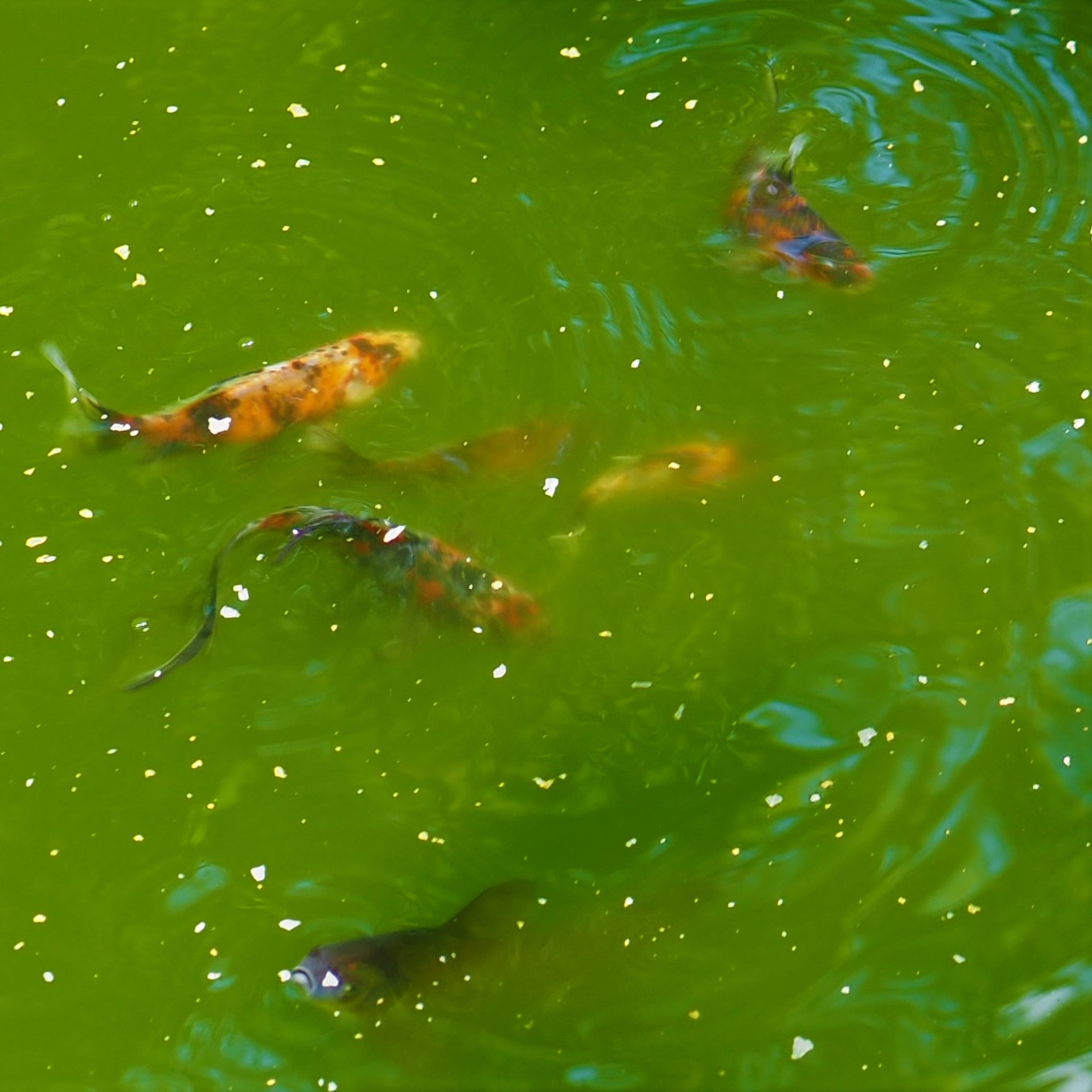

Here we have a closeup of the new orange fishlet, Baby Leopard. And one of the baby Toadlets or Froglets that you can't help surprising as you walk around the Pond. I'm really thinking it is a baby Frog since the Frogs seem to have been the last to mate in the Pond. But the real surprise is: OK, on Thursday, as I was skulking around the pond, somebody made a big Splash! and disappeared. But on Friday, I skulked more effectively and was able to catch this shot of a young Frog sitting on a ledge before it plunged into the water.
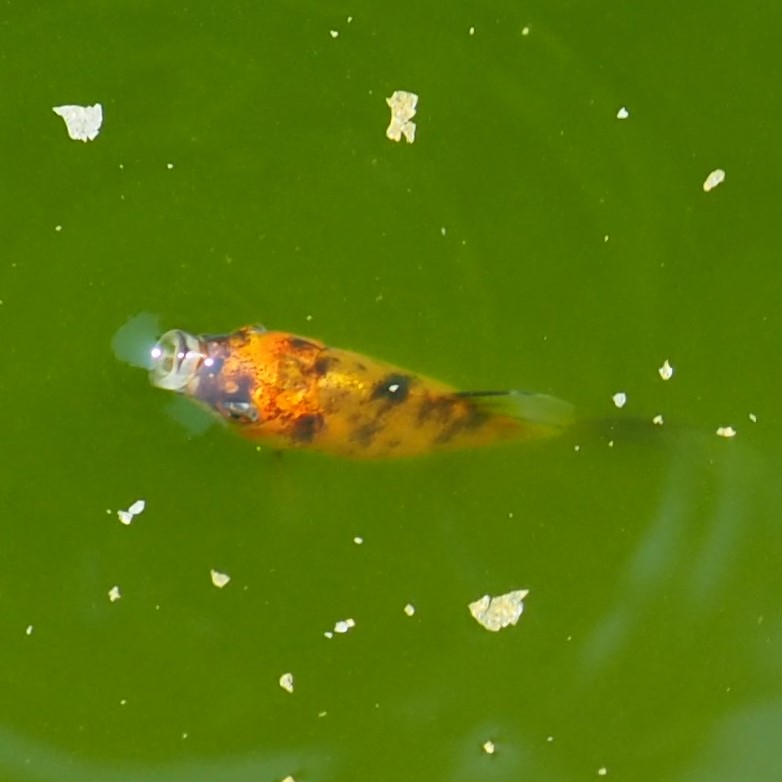
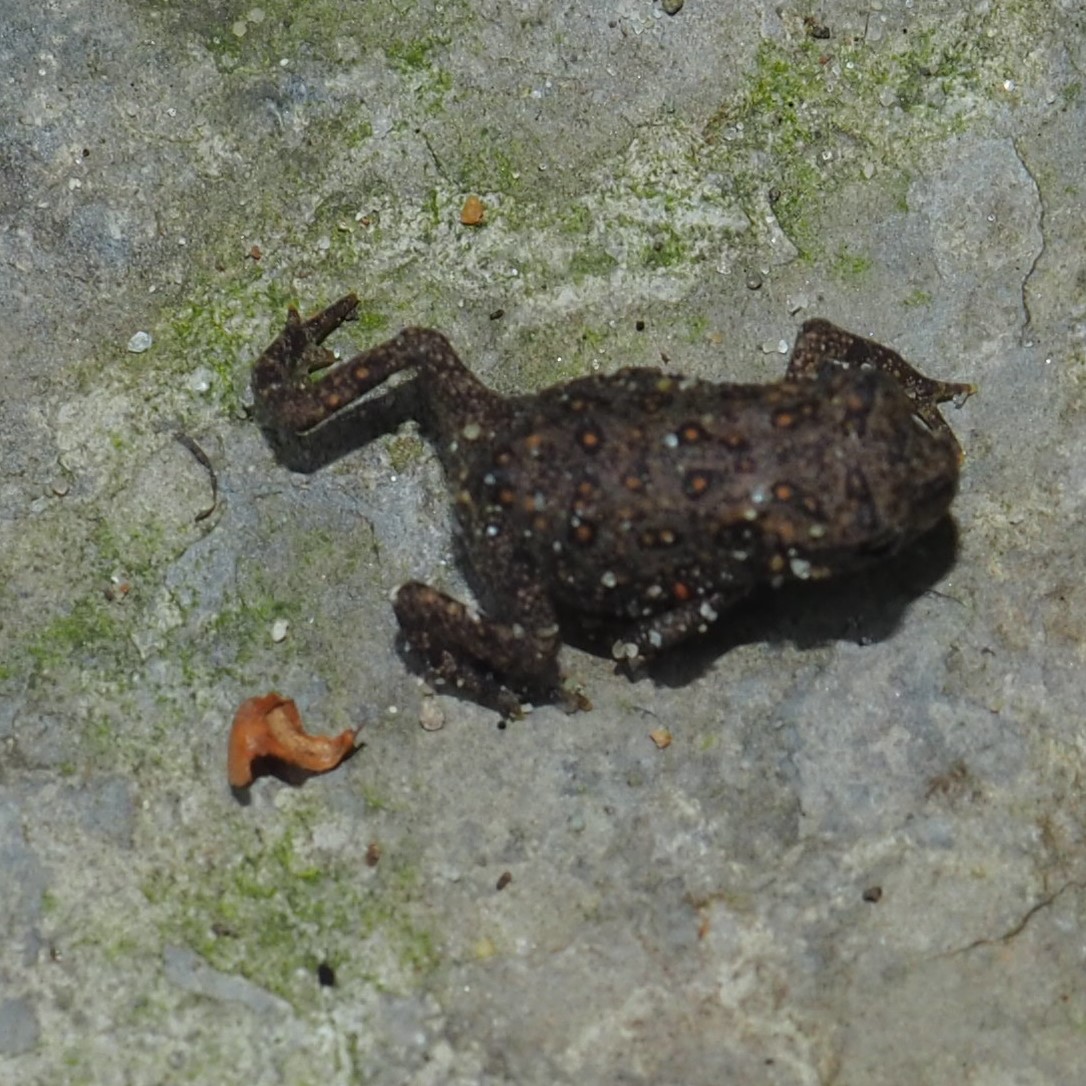
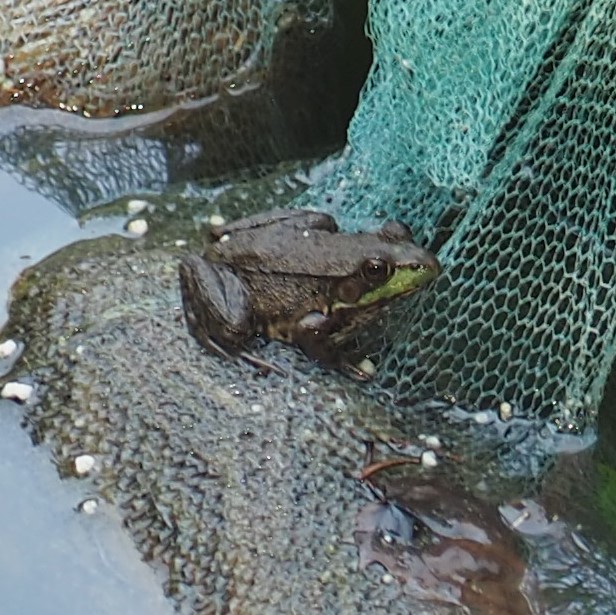
Here are a couple of pictures of Water Striders. Picture 1 may be of a juvenile Strider (look at its shorter wings). Picture 2 shows a full-sized Strider with a nice black Fly as prey.
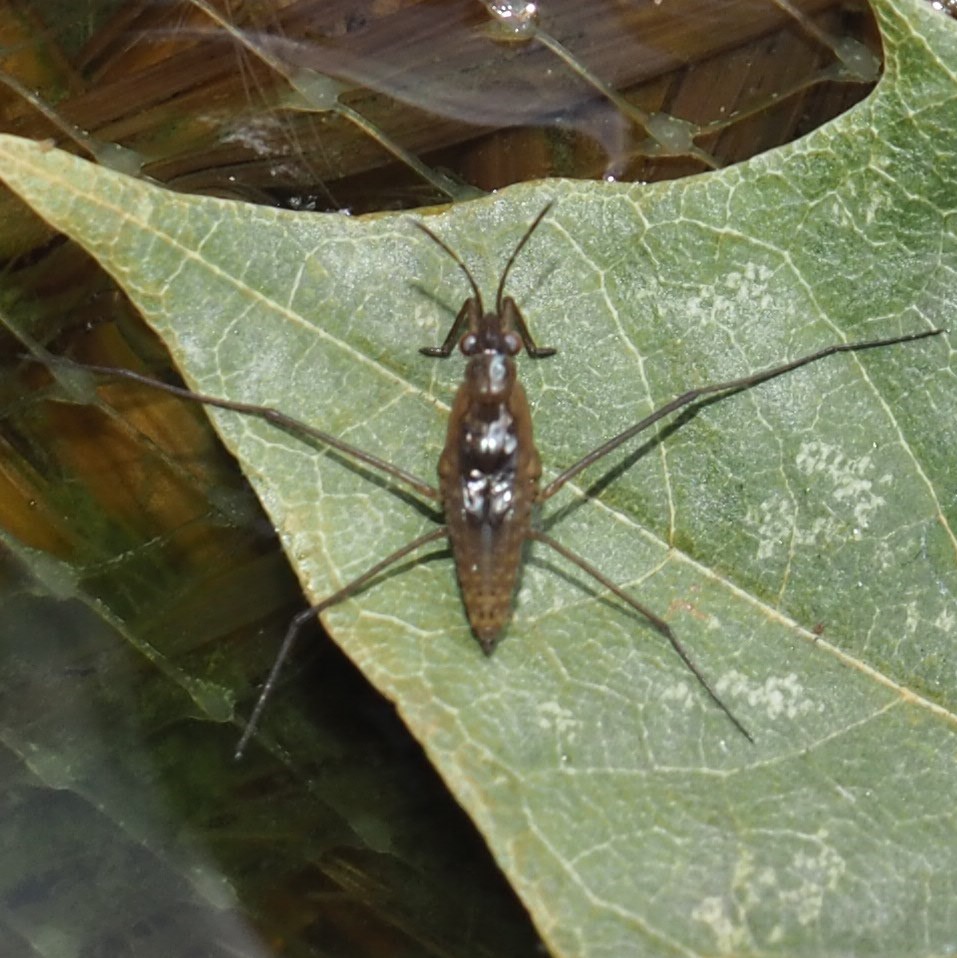

Here is the Pond with a young Redbud Tree reflected in it.

Well, another long hot week. I spend most of my time upstairs on the computer. But I get frequent trips downstairs to go out and take pictures, trying to see the change from week to week and sometimes day to day. Up the stairs to crop and label pictures. Down to grab lunch. Out to shoot. Up to crop. Down to eat. Up. Down. My pulmonologist wanted to give me aerobic exercises, but when I told her I spend so much of my life on the stairs, she said, Enough! Whew. That's my life. How's yours? Your email is wonderful and keeps me thinking of all the people I have known and still know virtually!
Love, Martha
Back to August 15, 2021
Forward to August 29, 2021
Back to main menu
copyright Martha O'Kennon 2021






















































































































